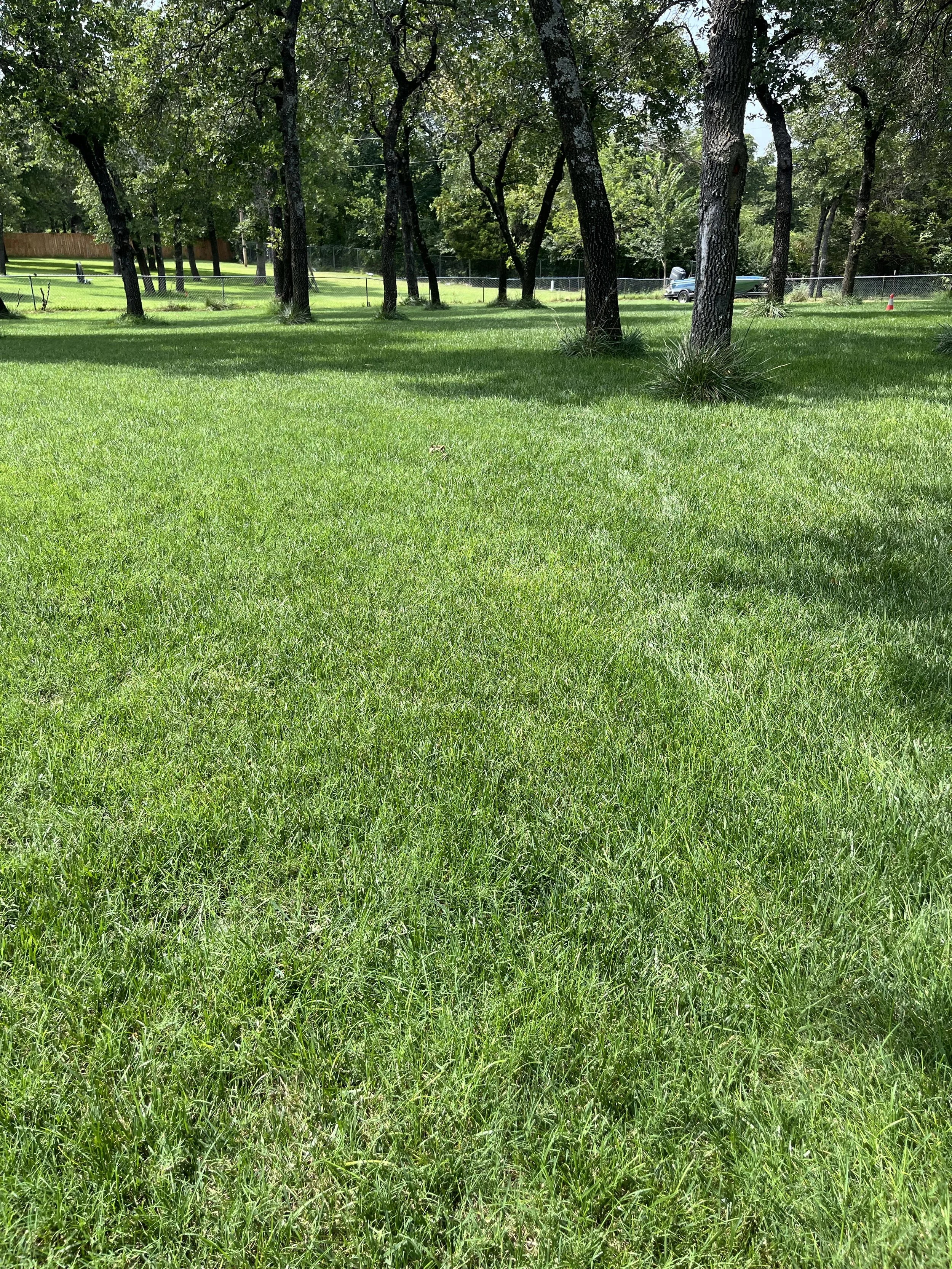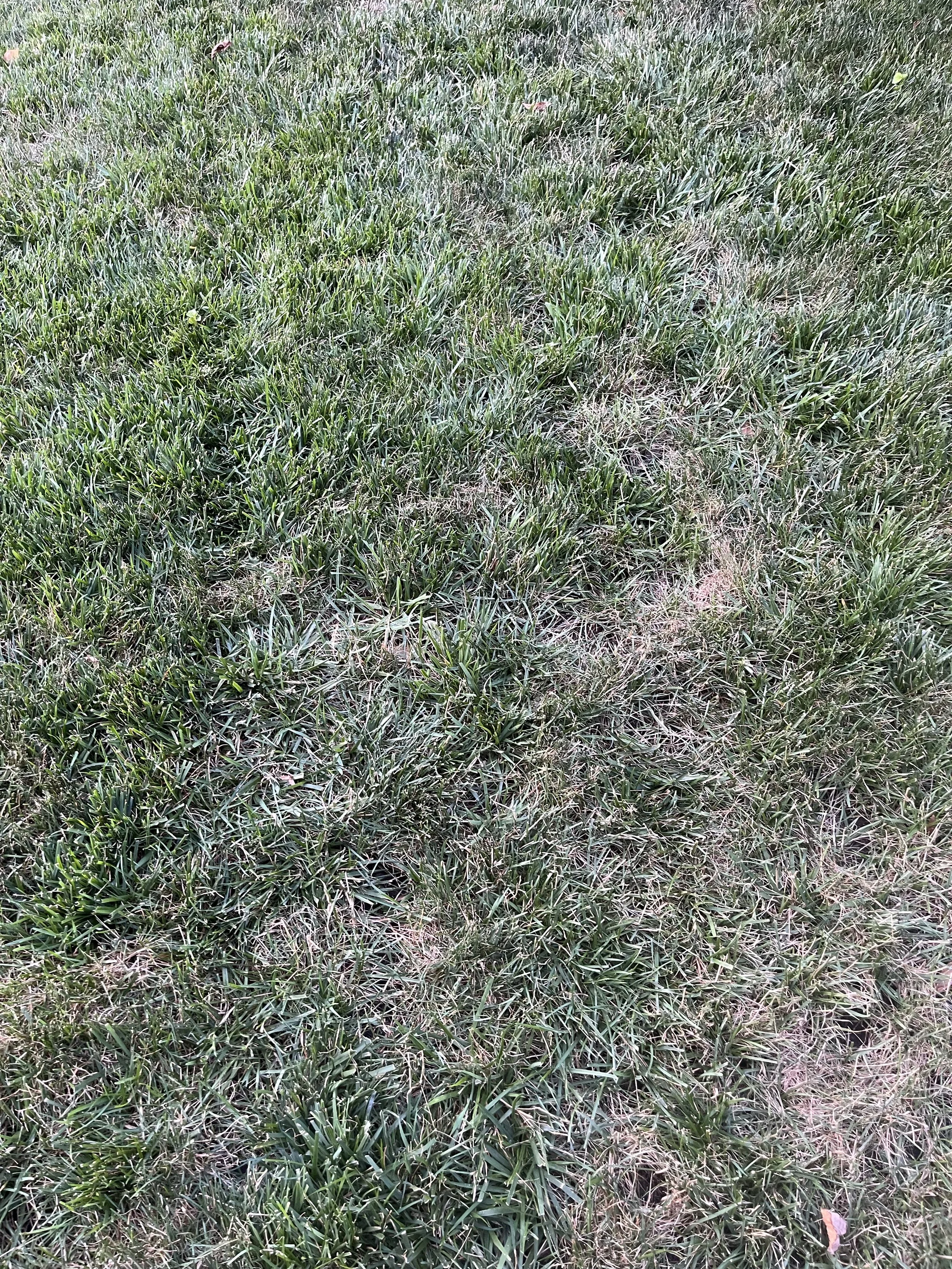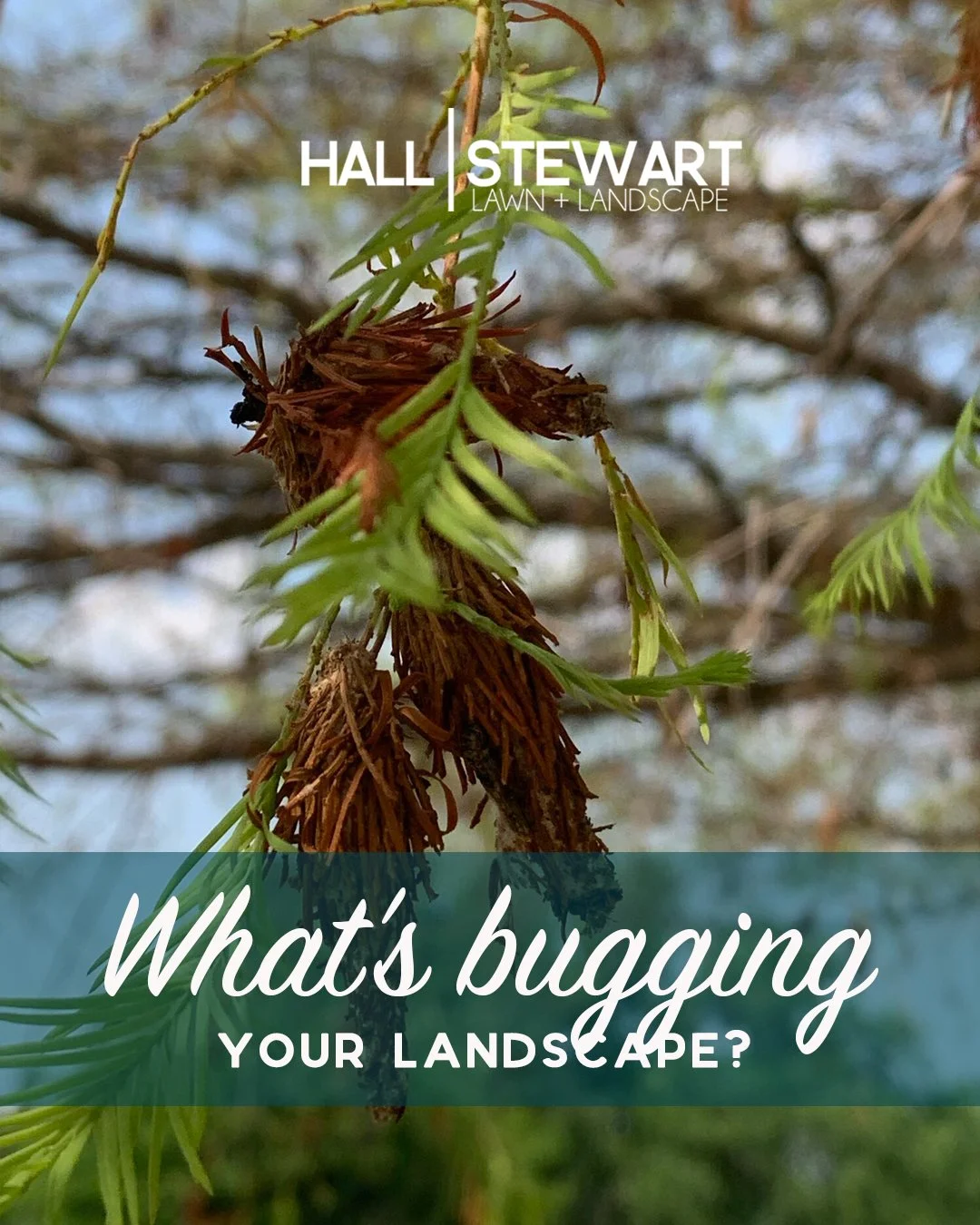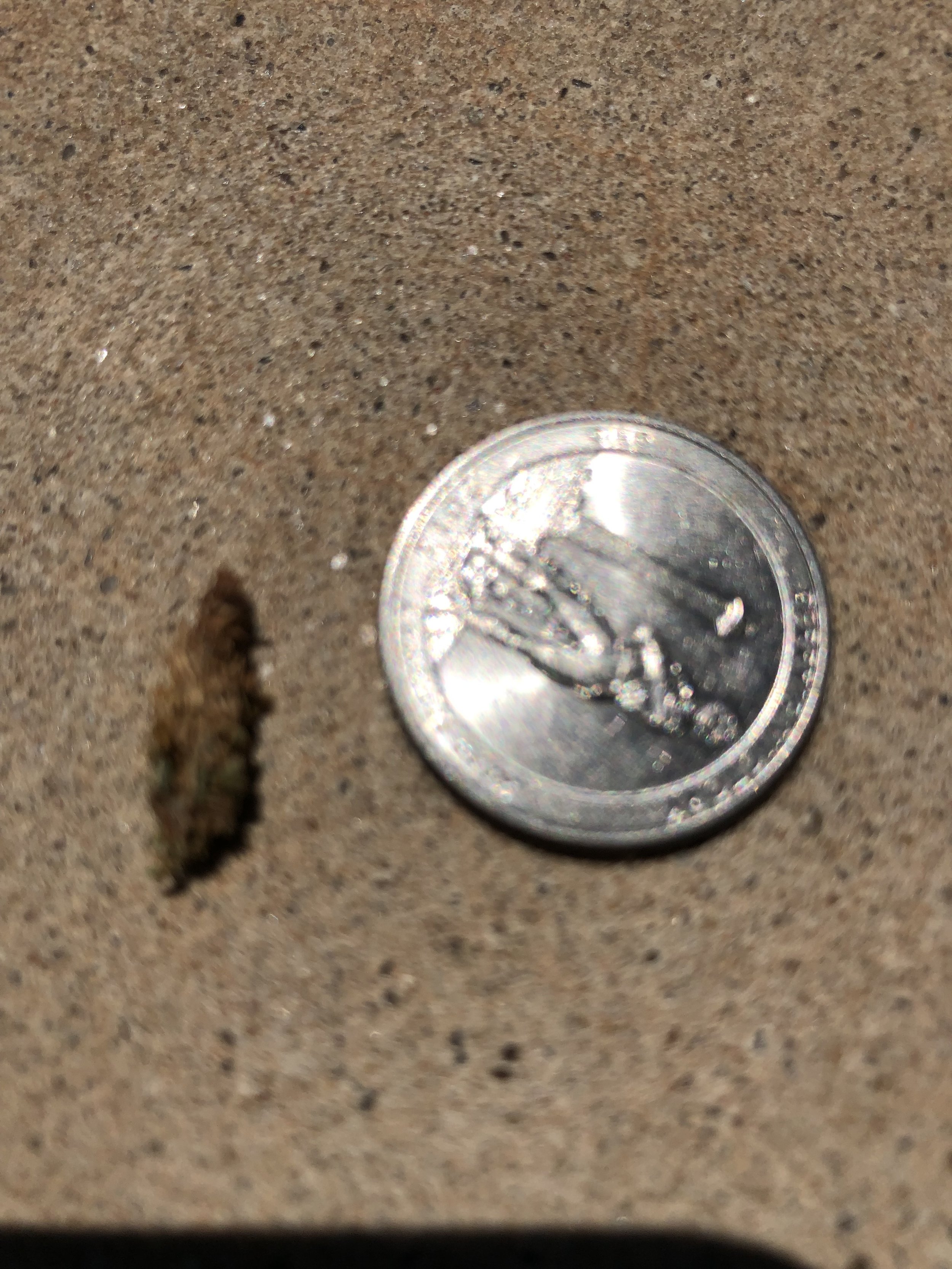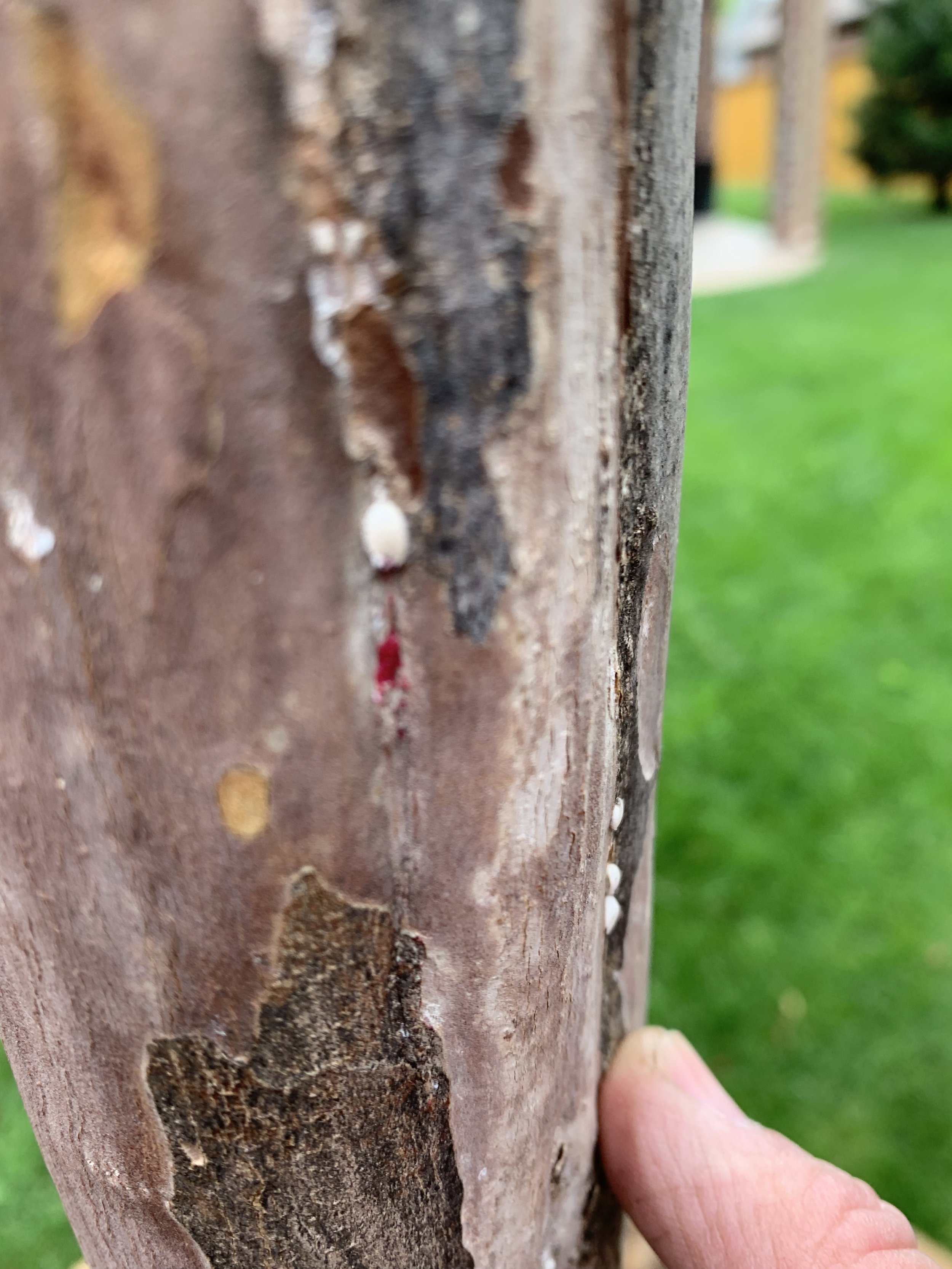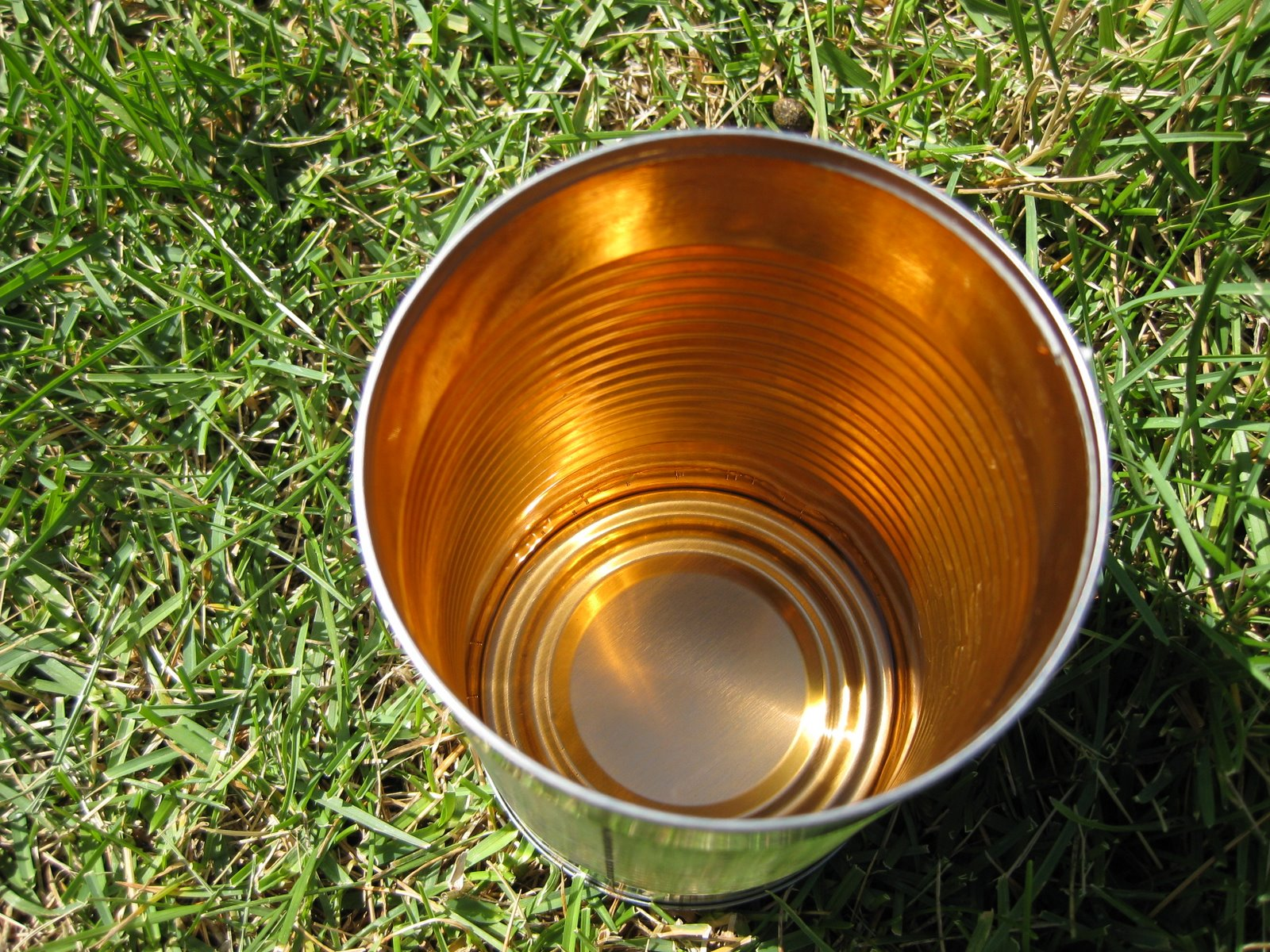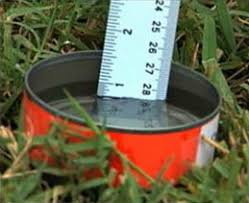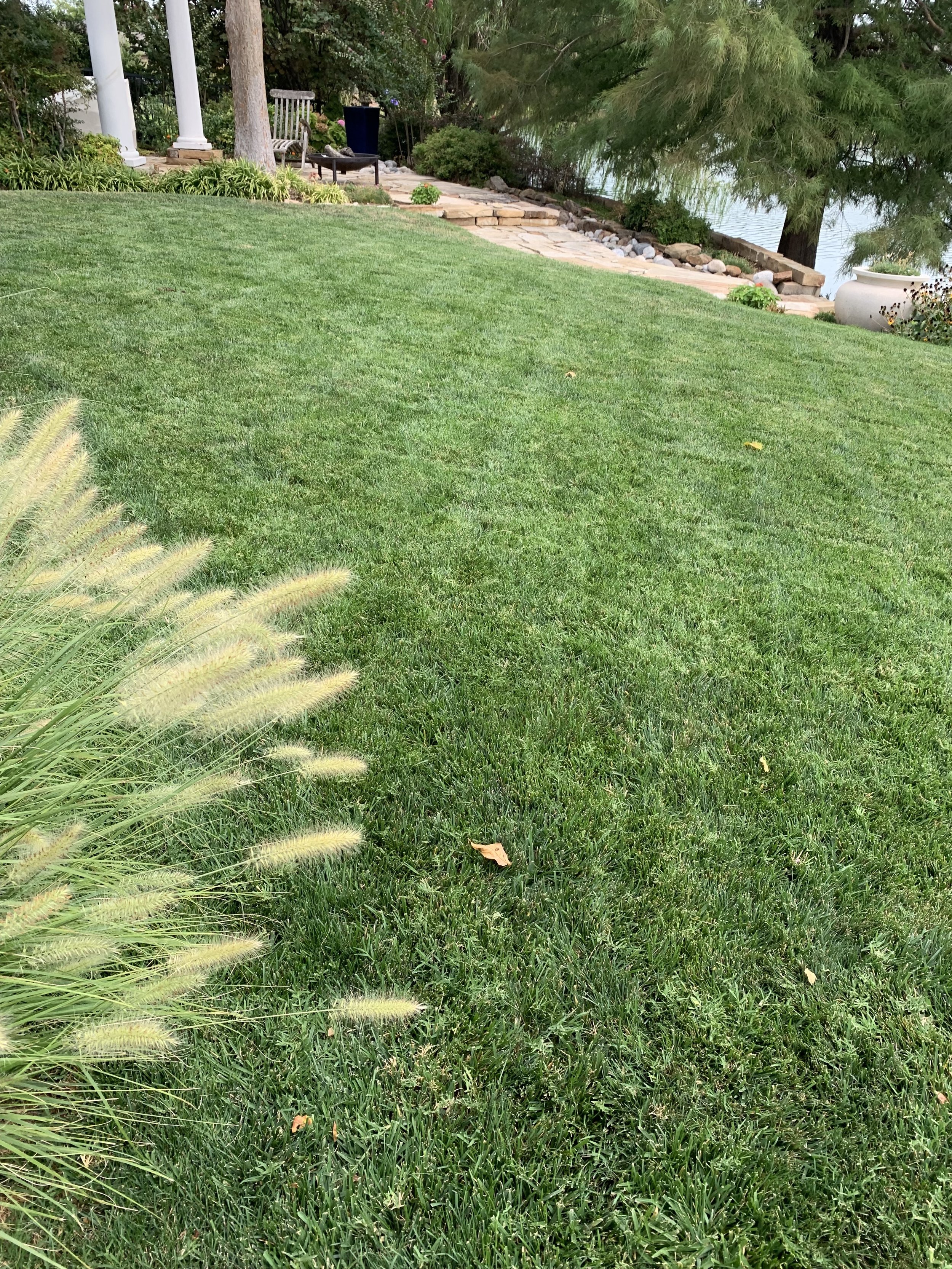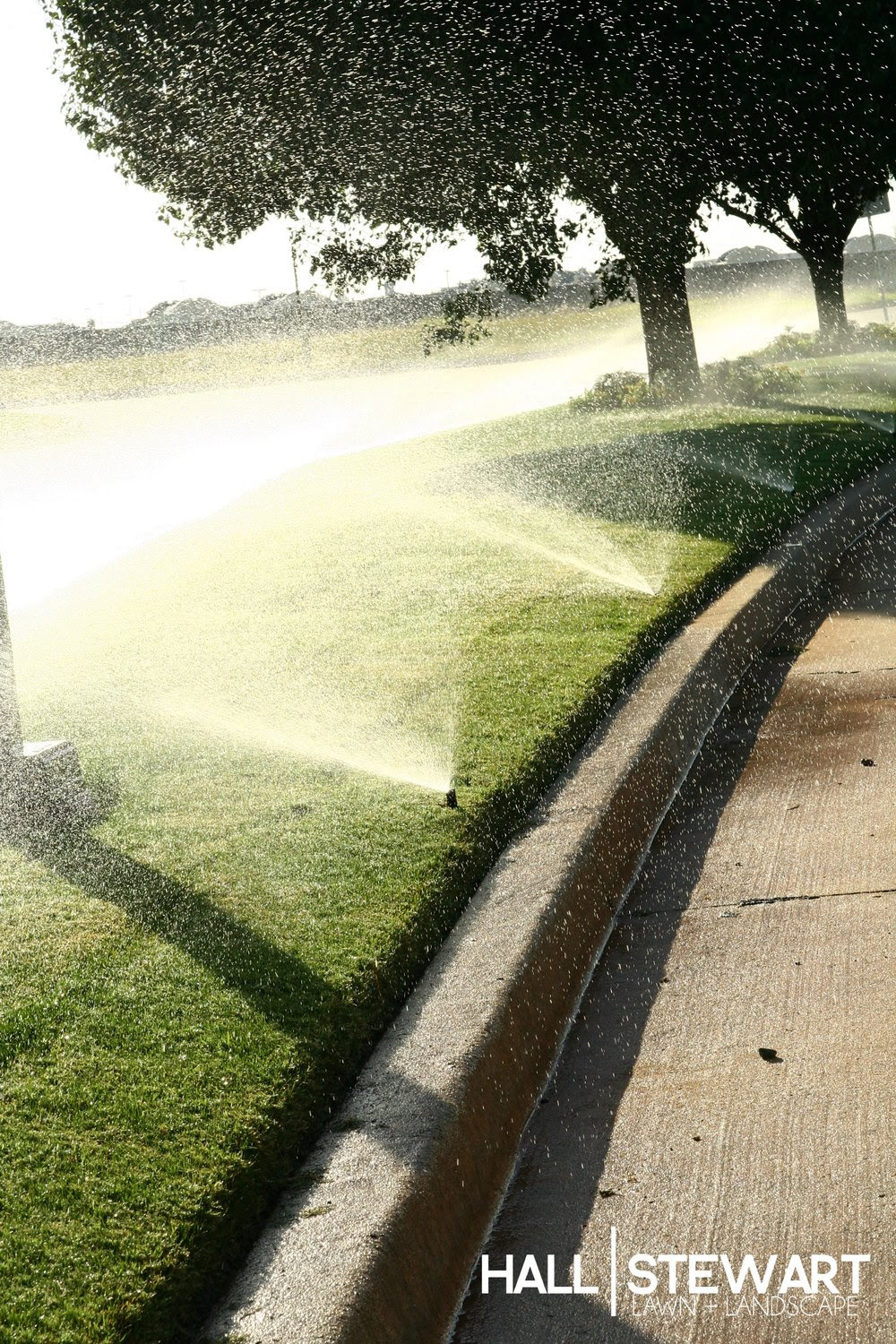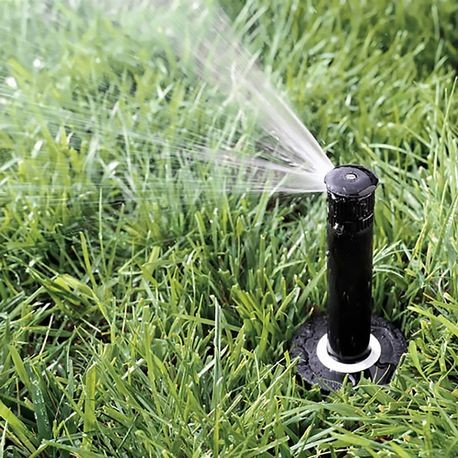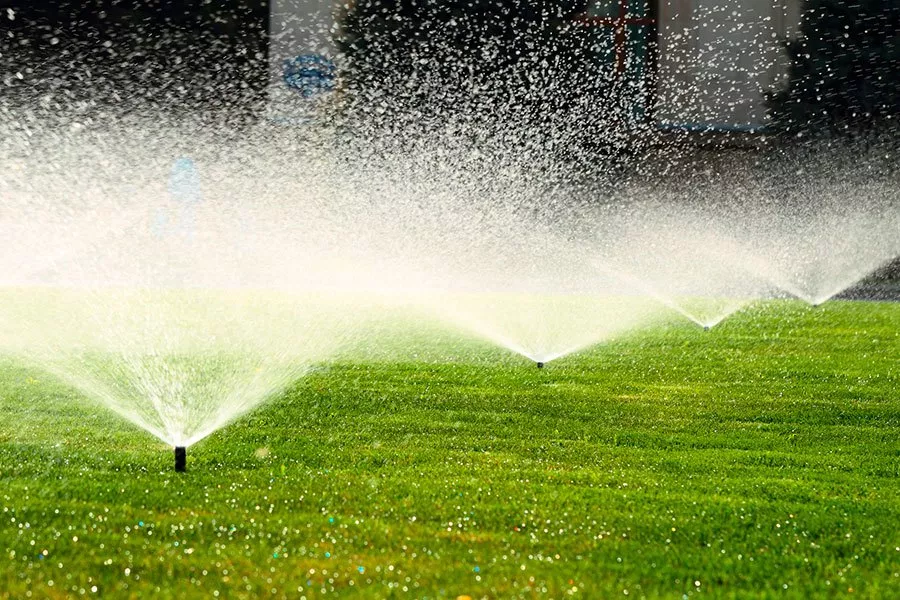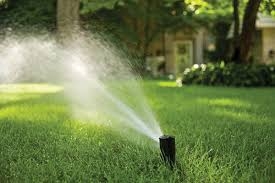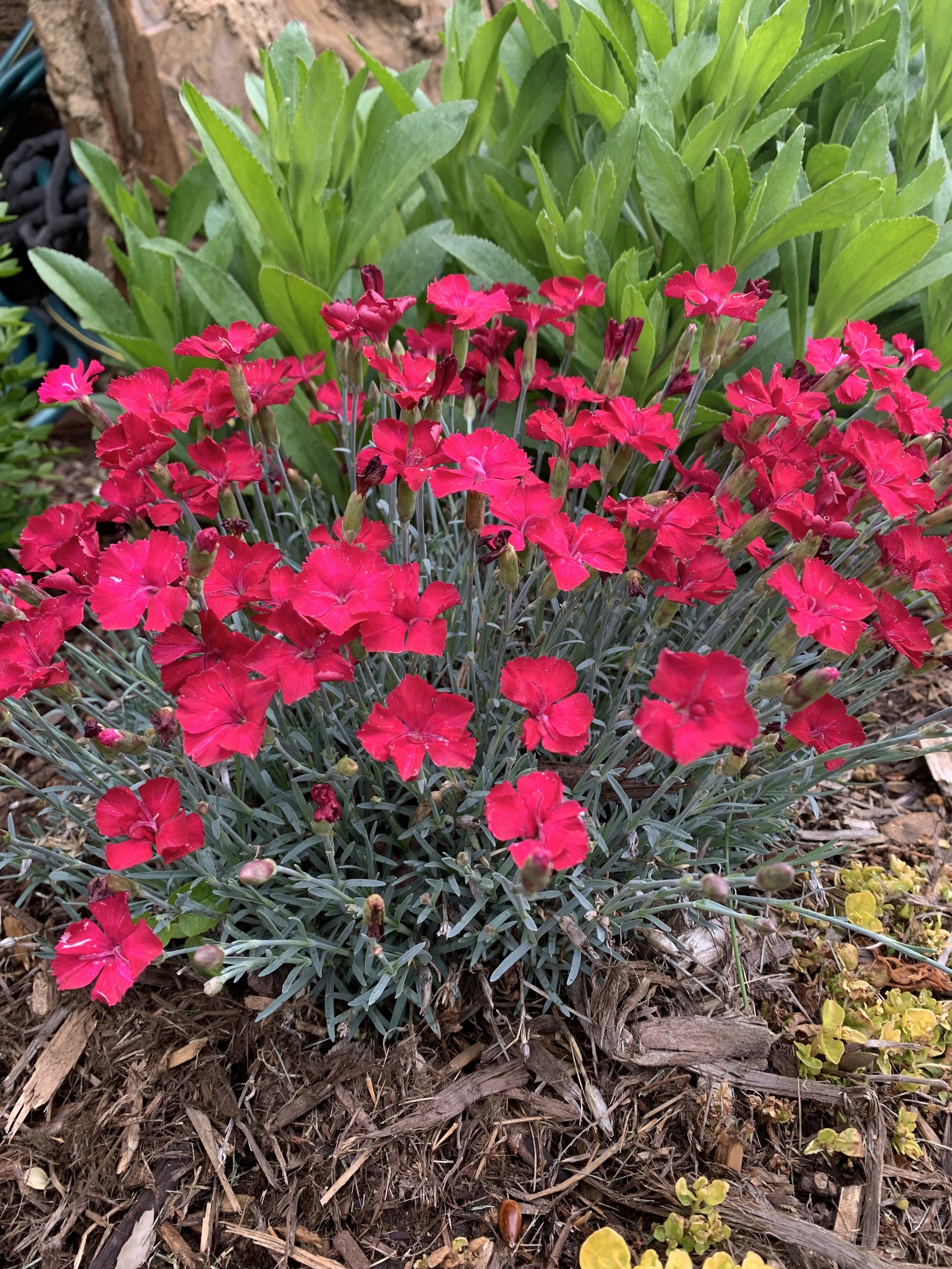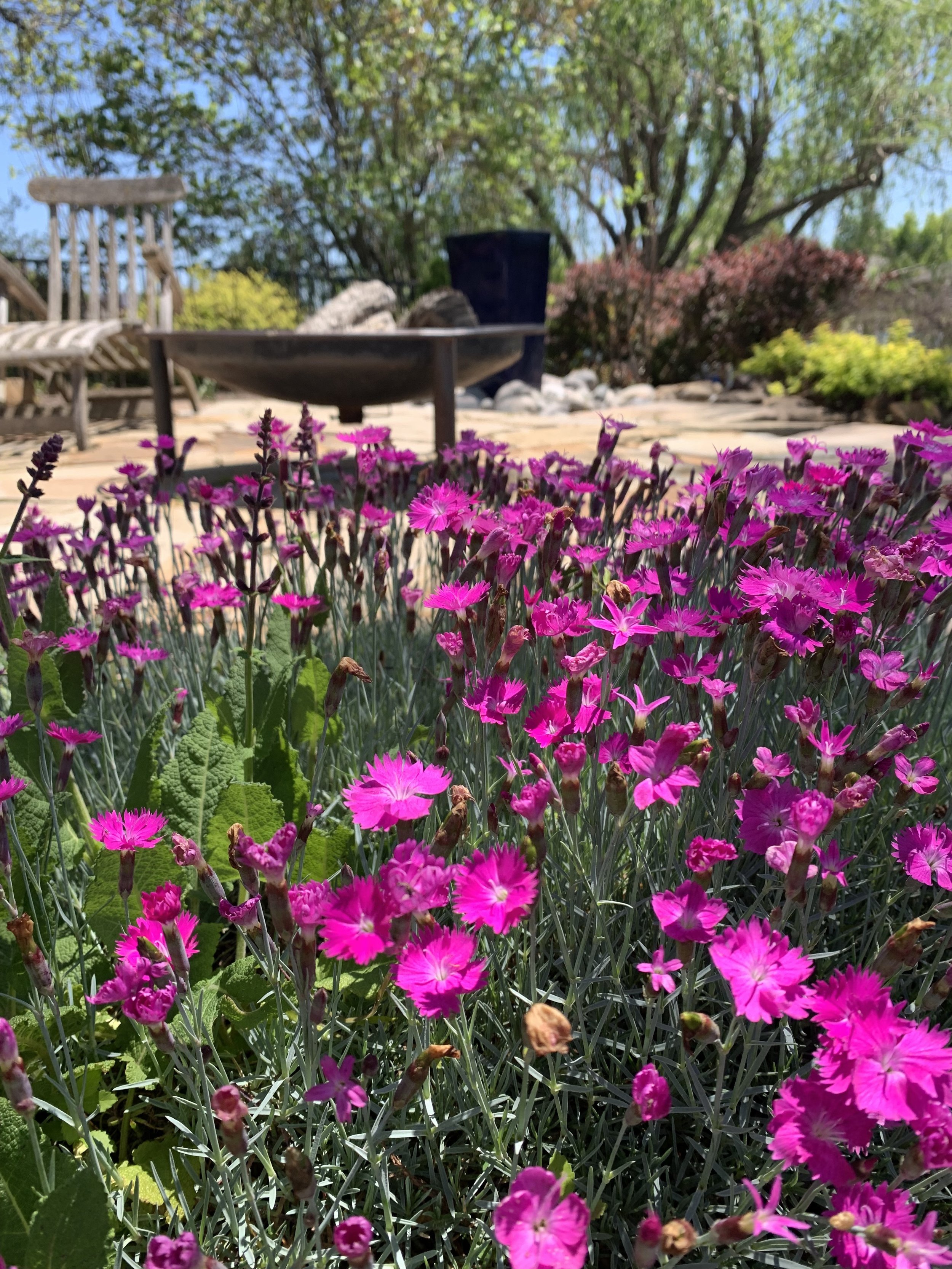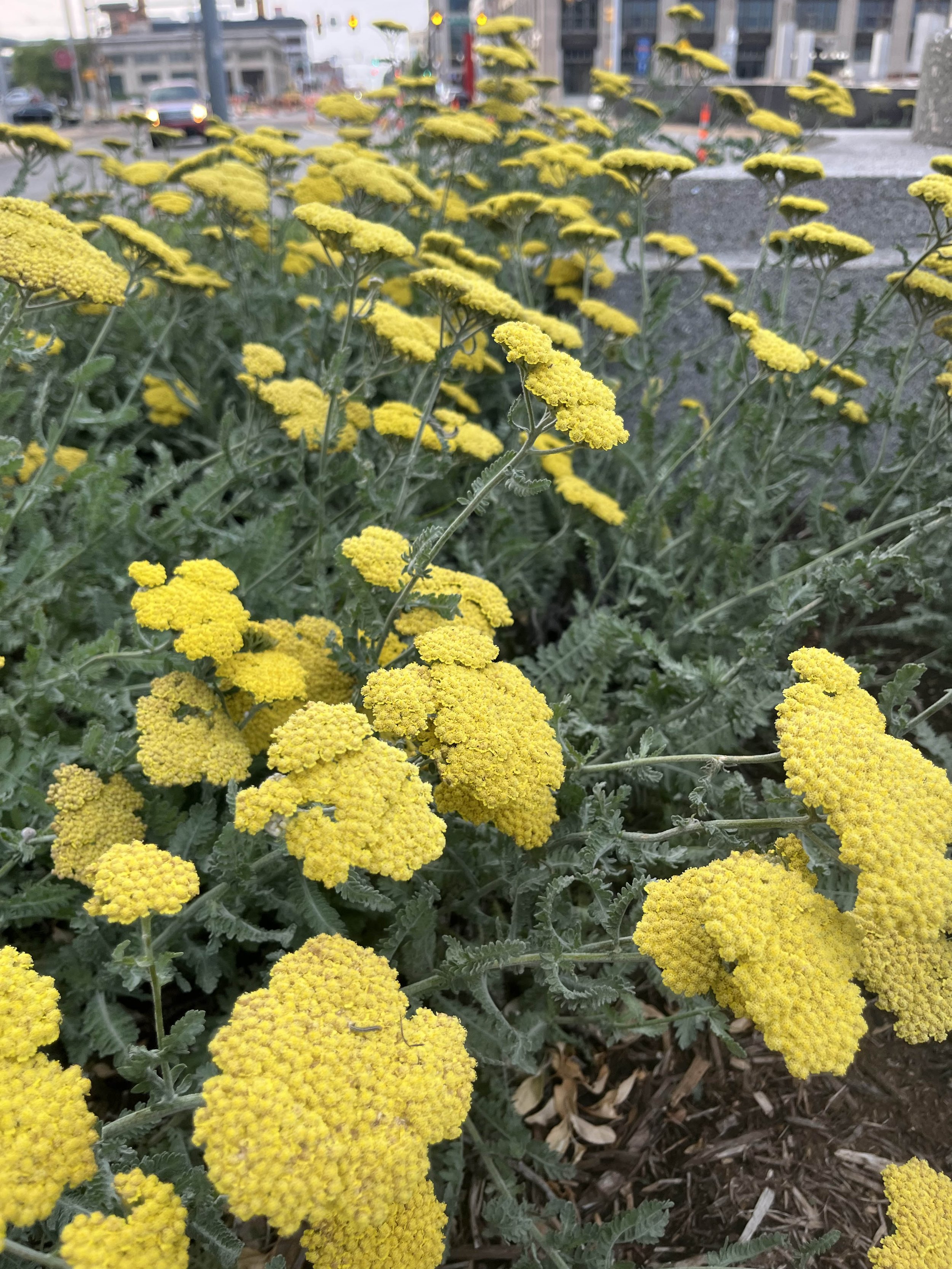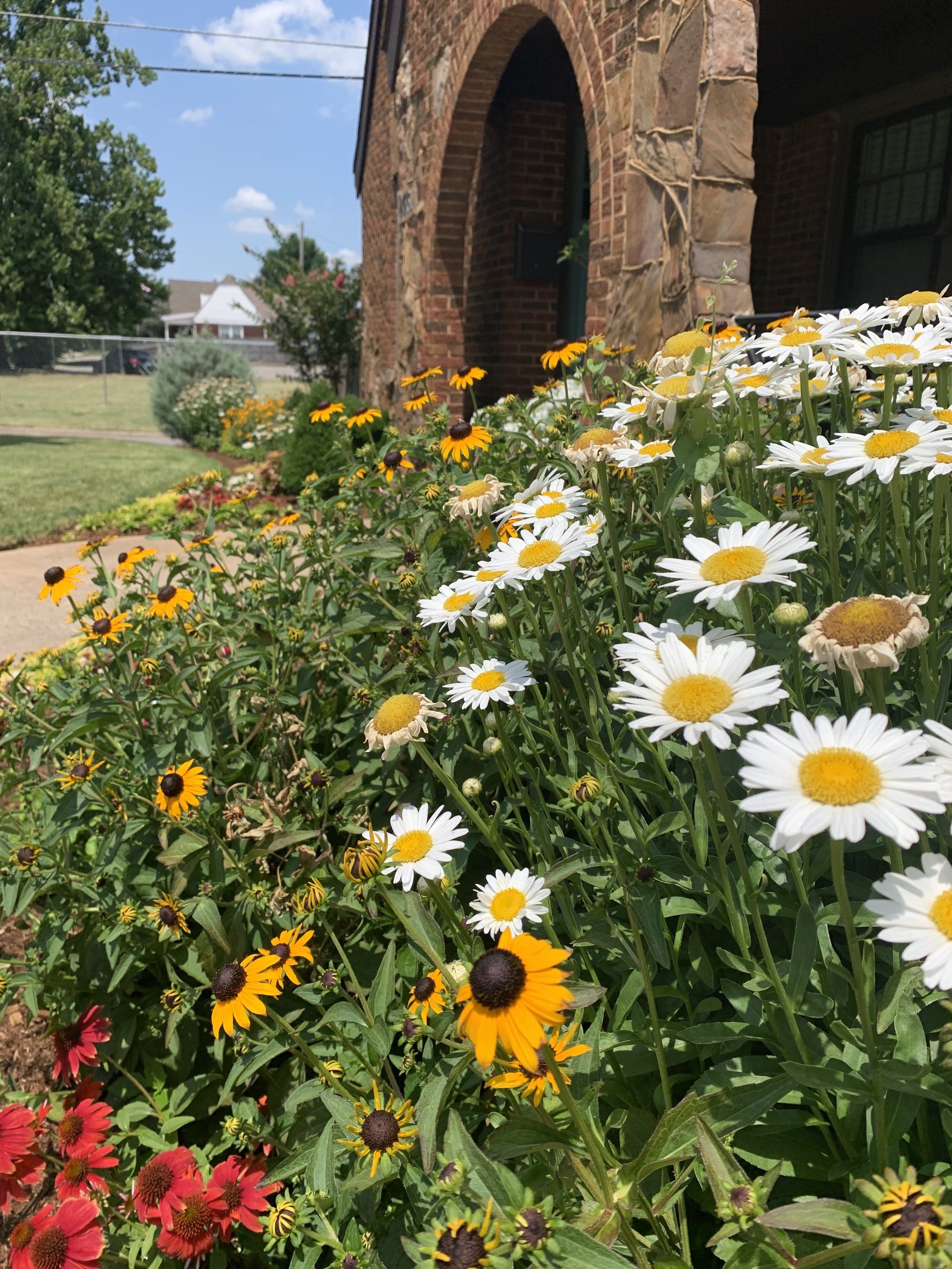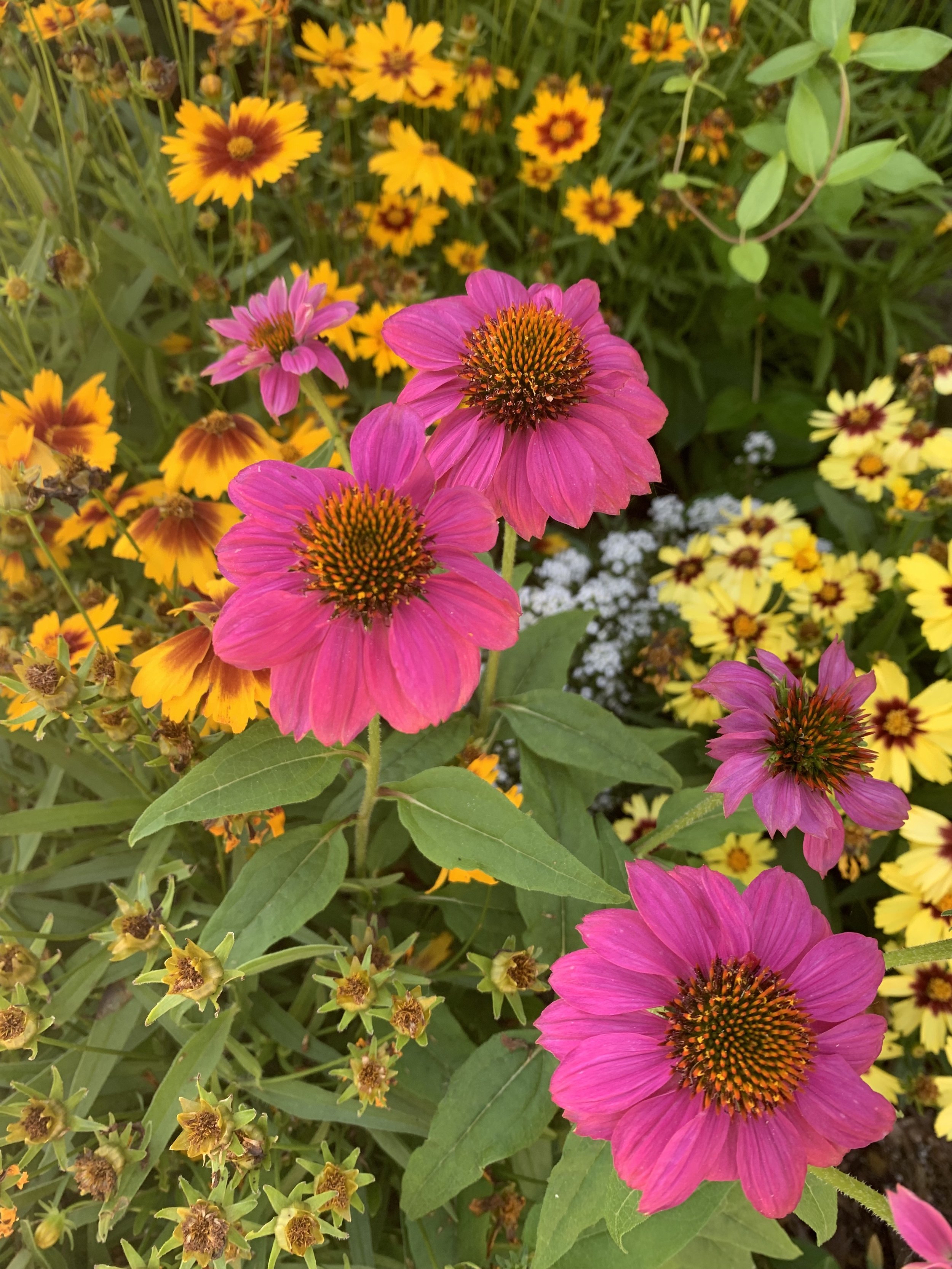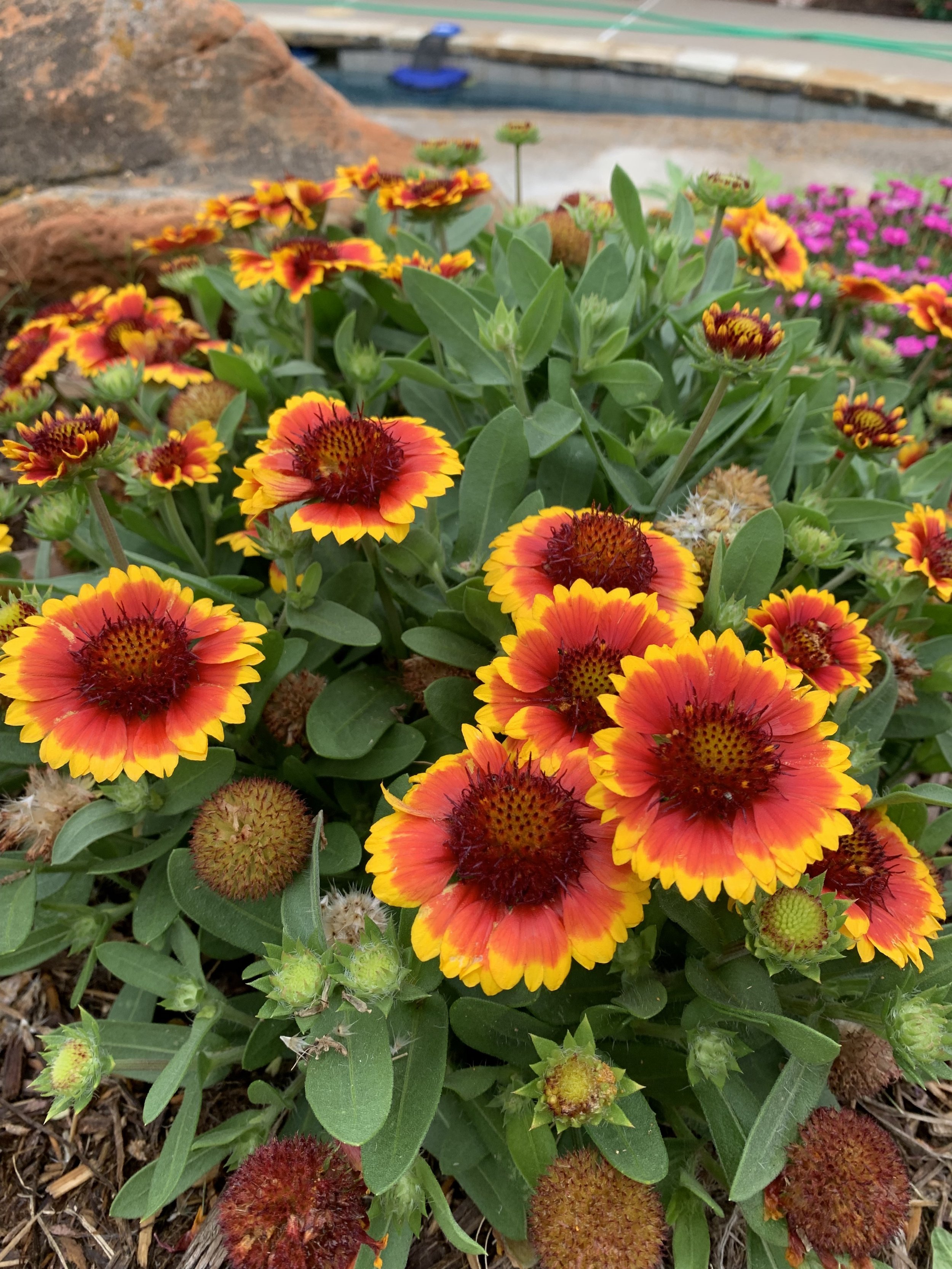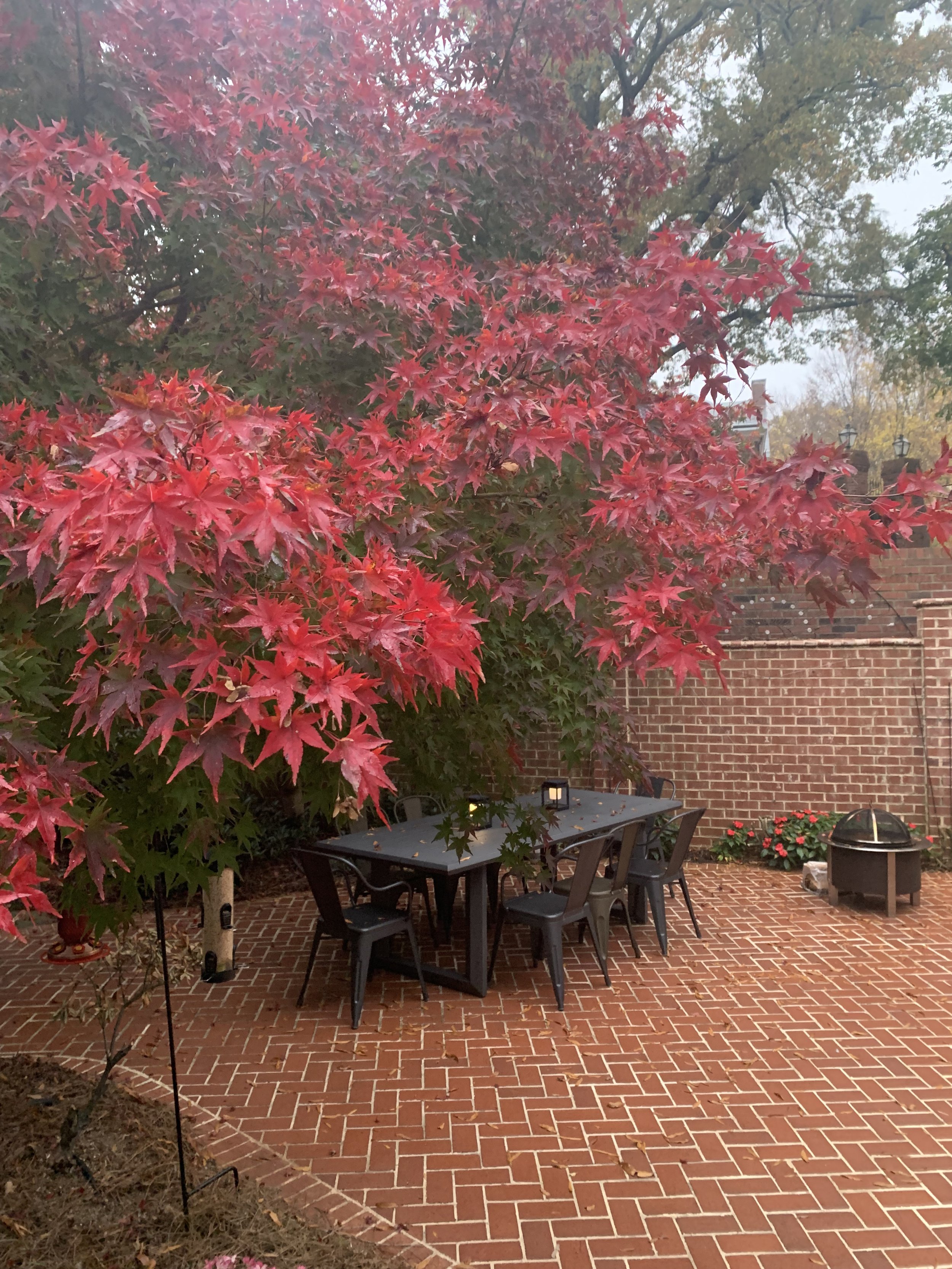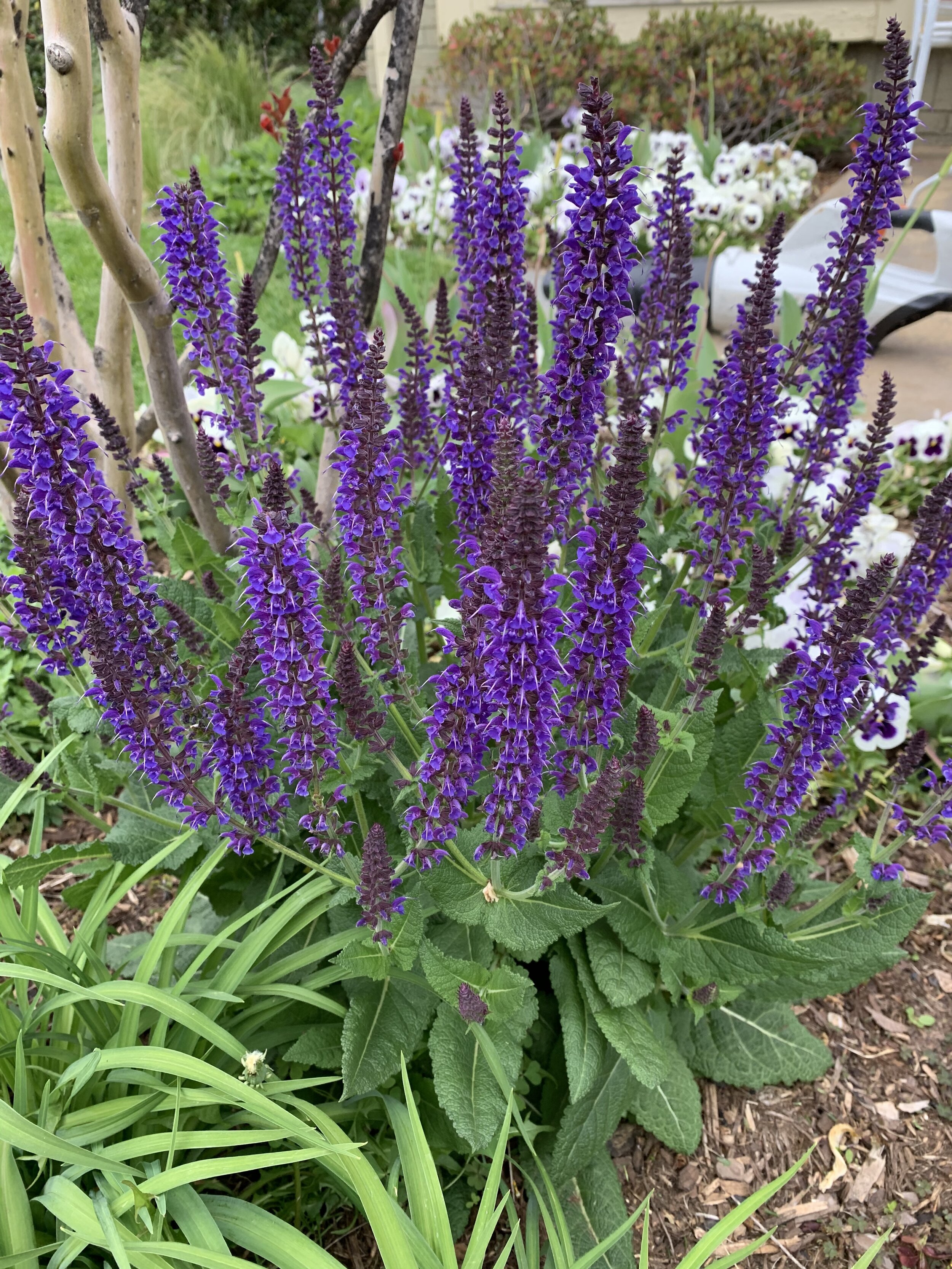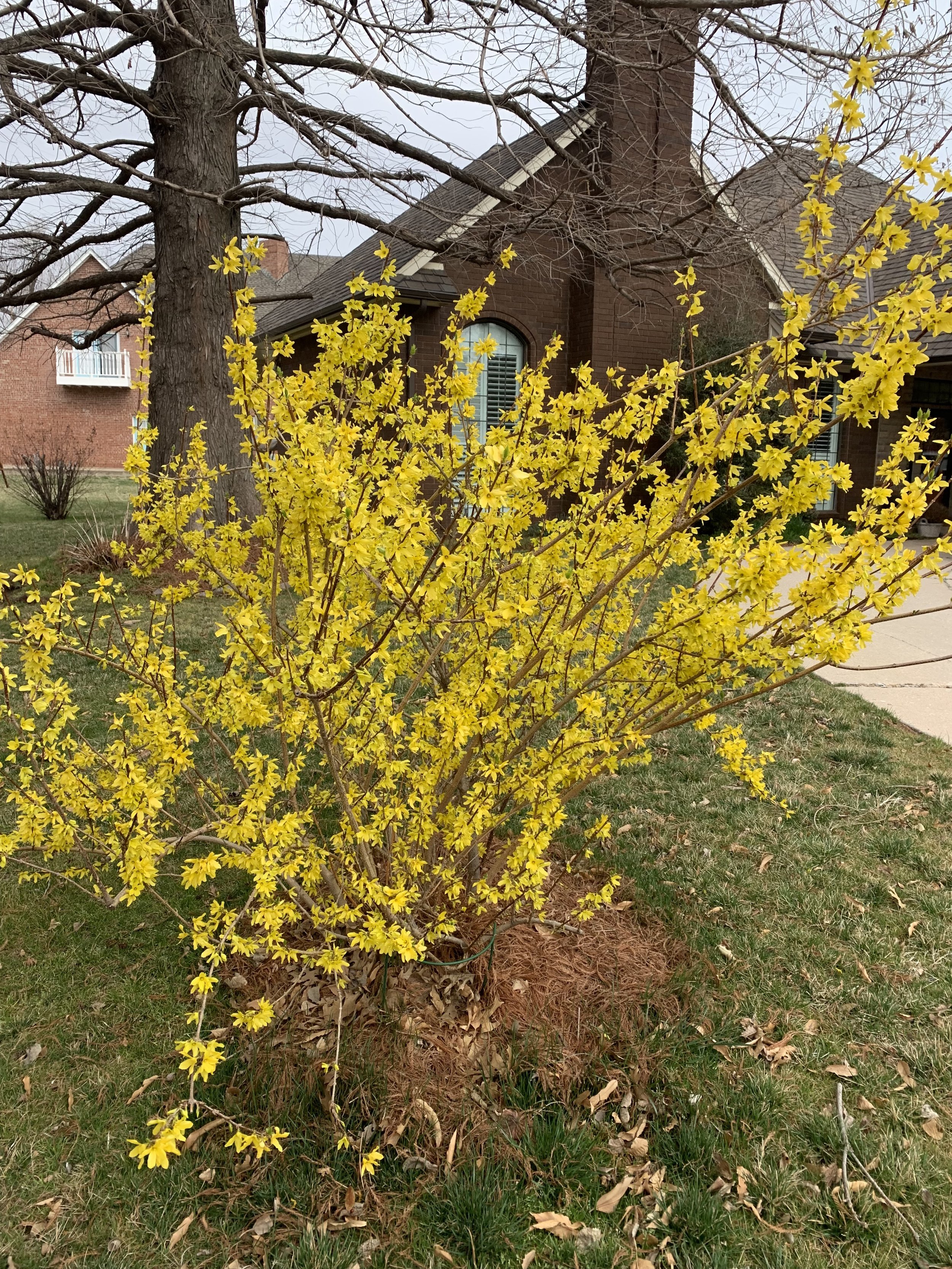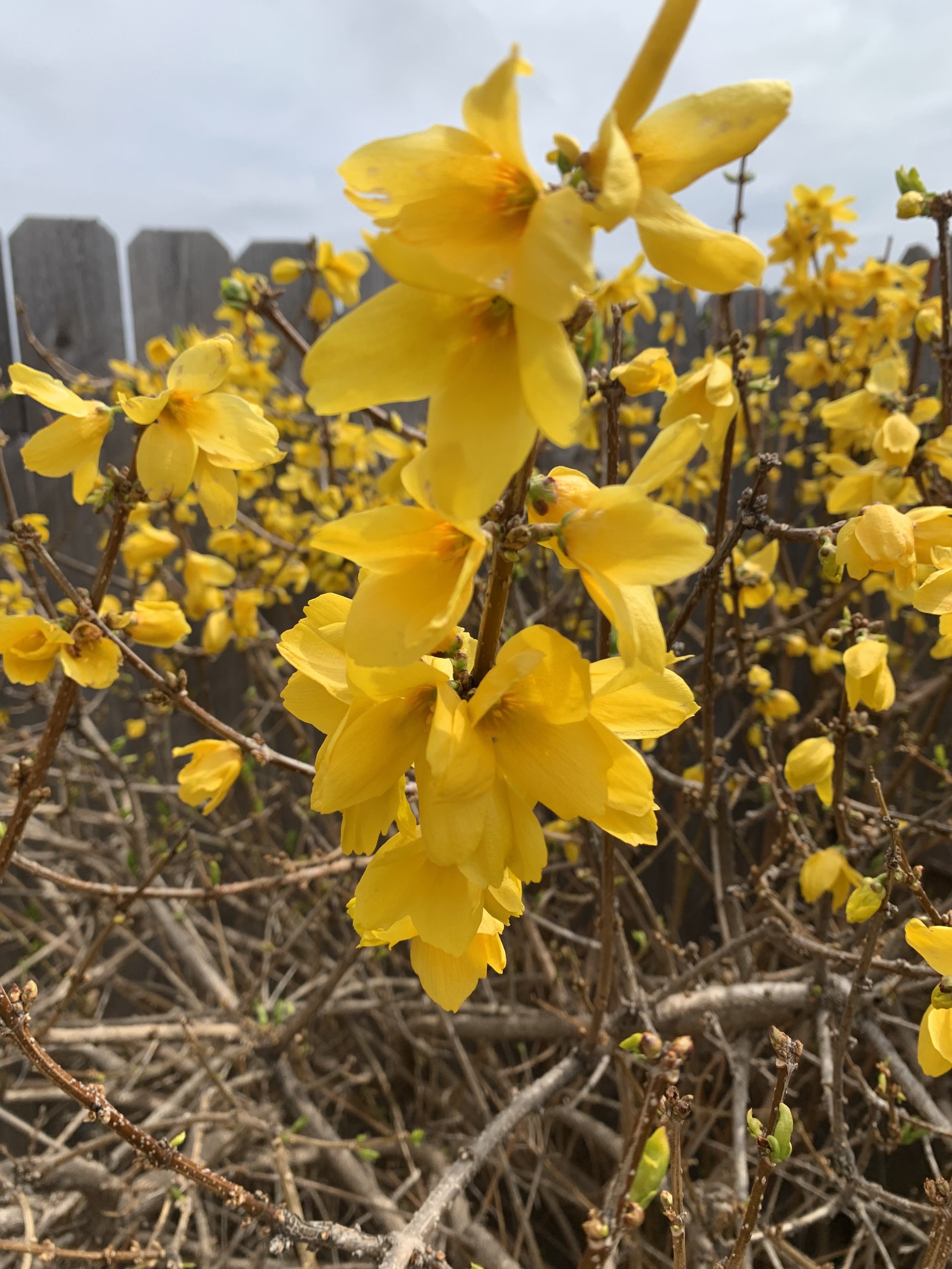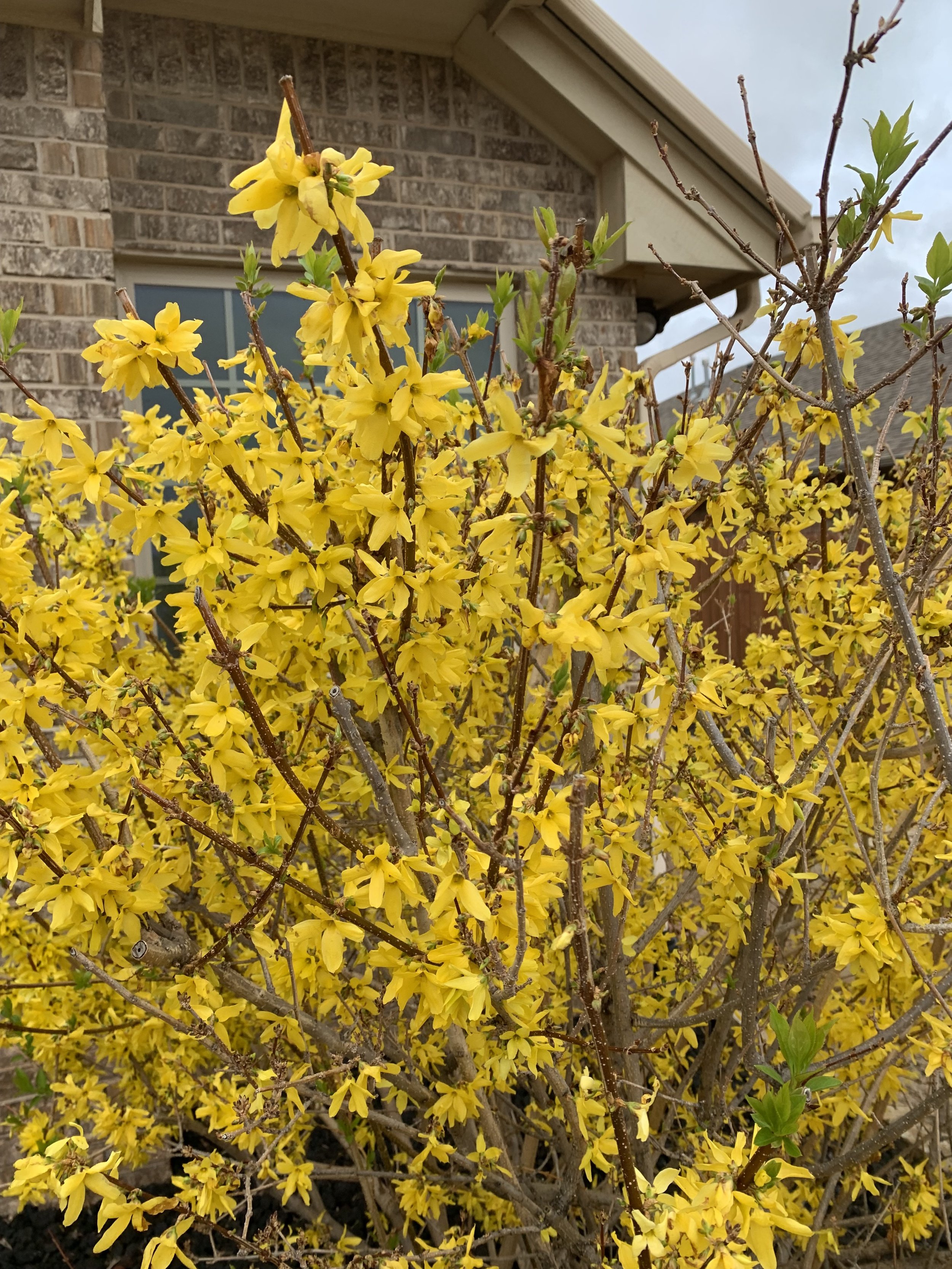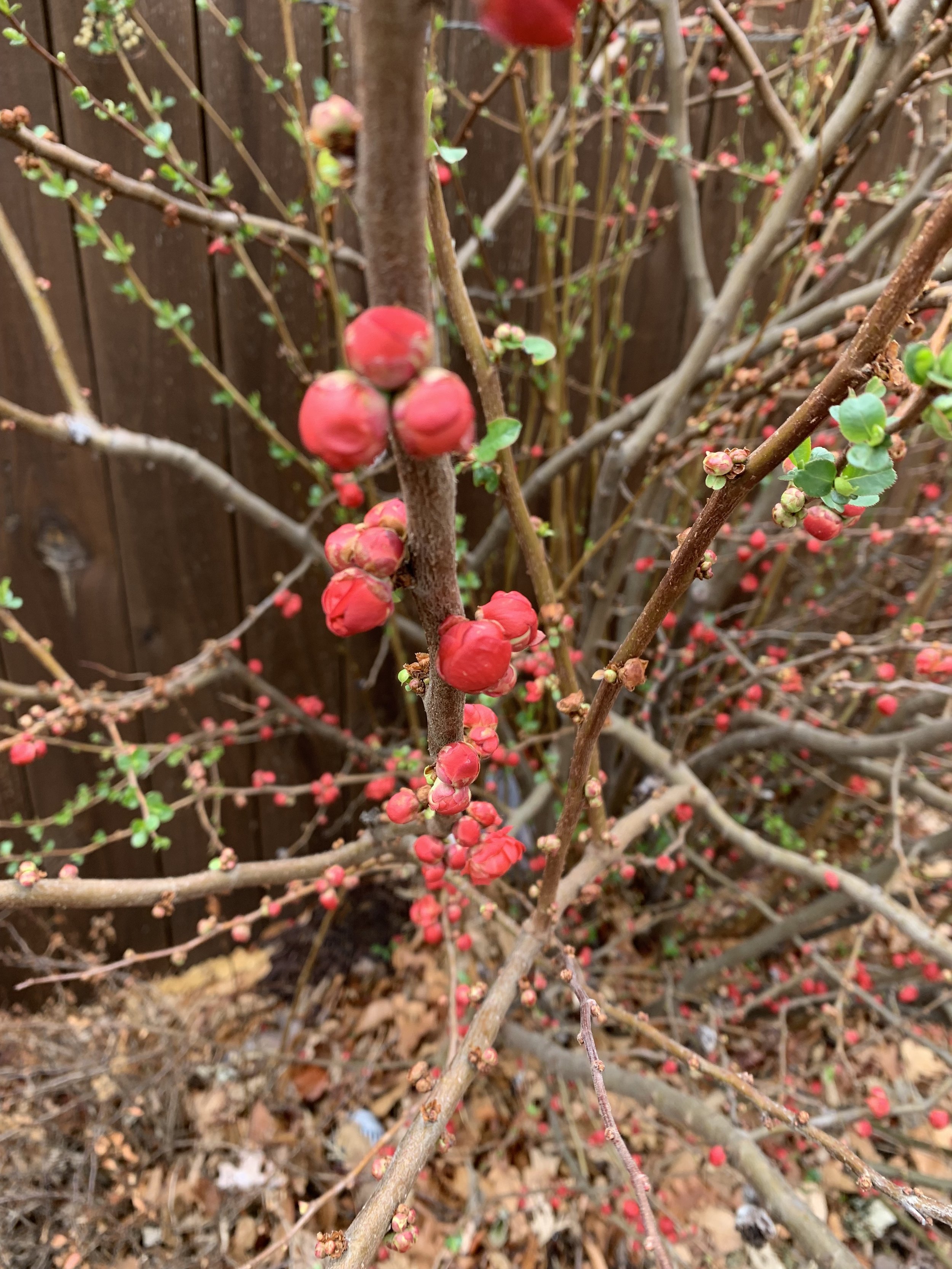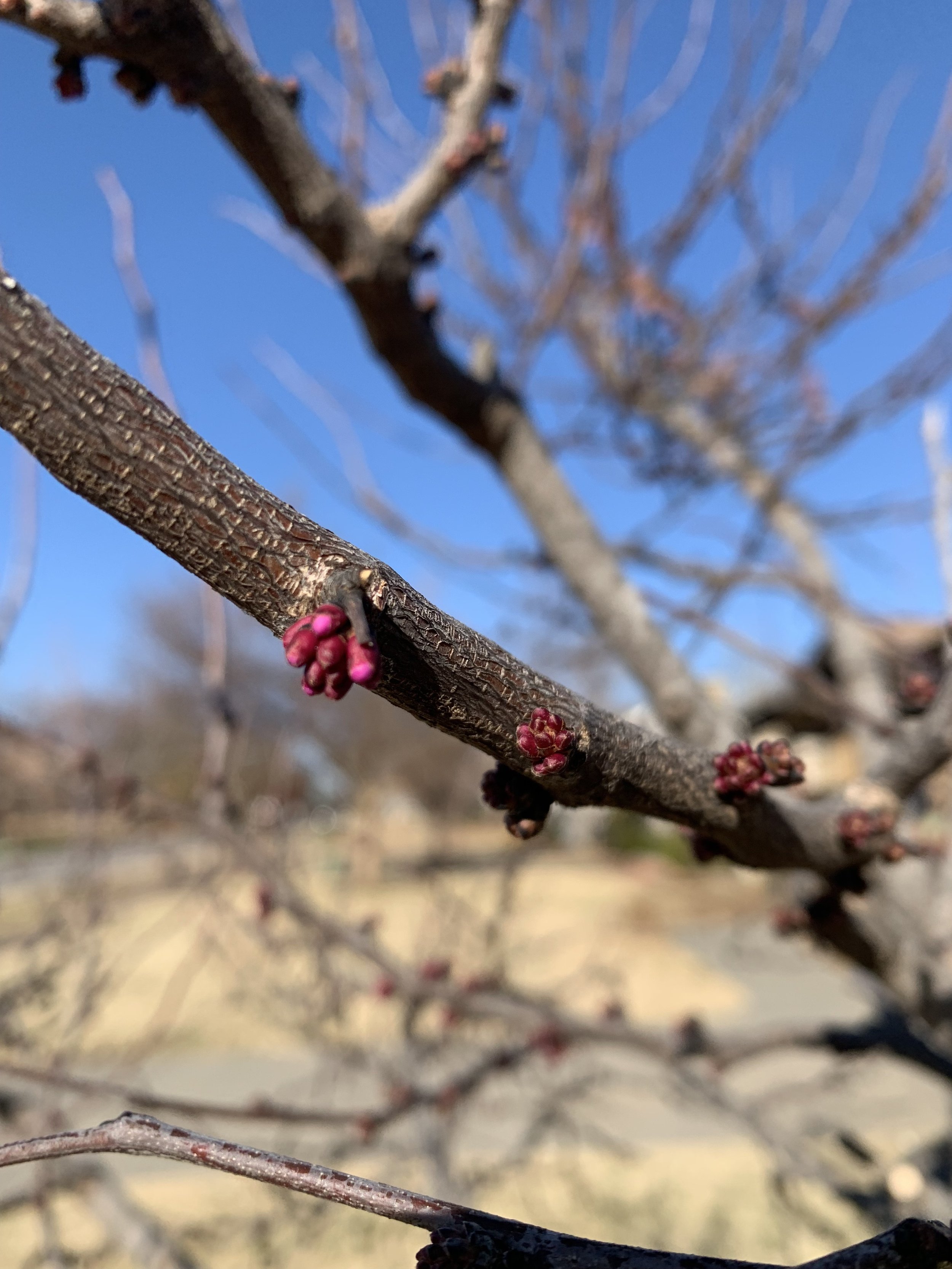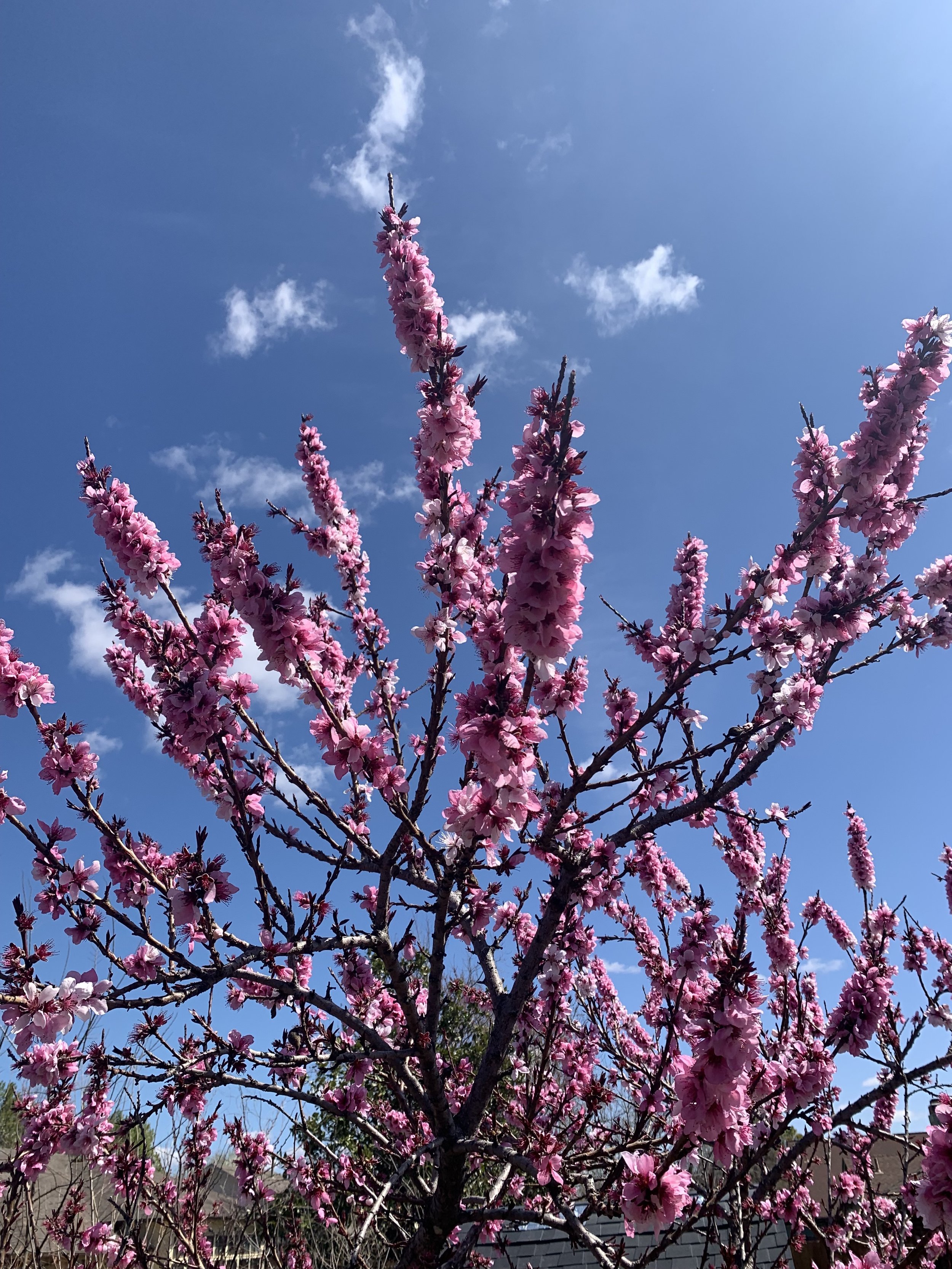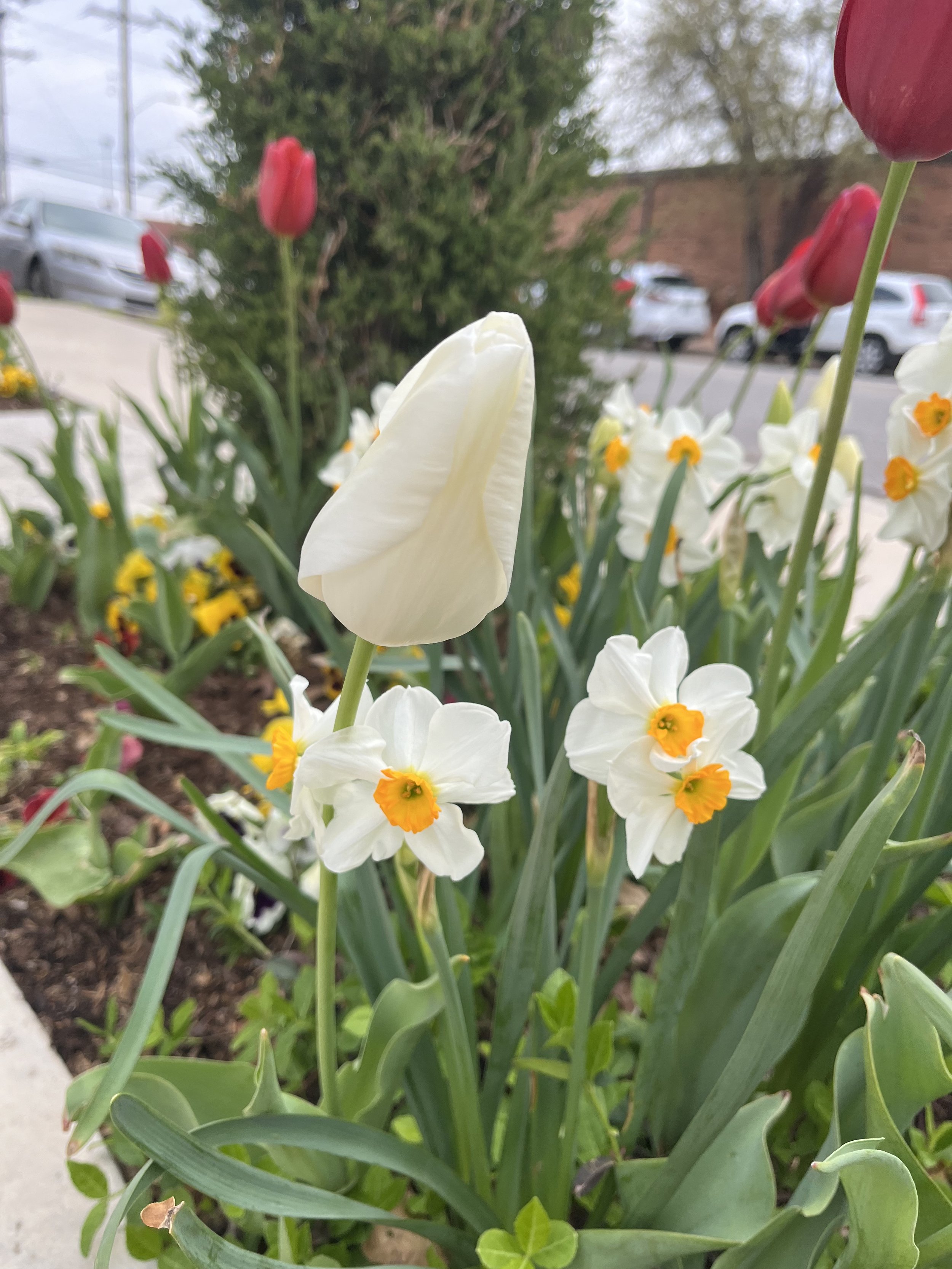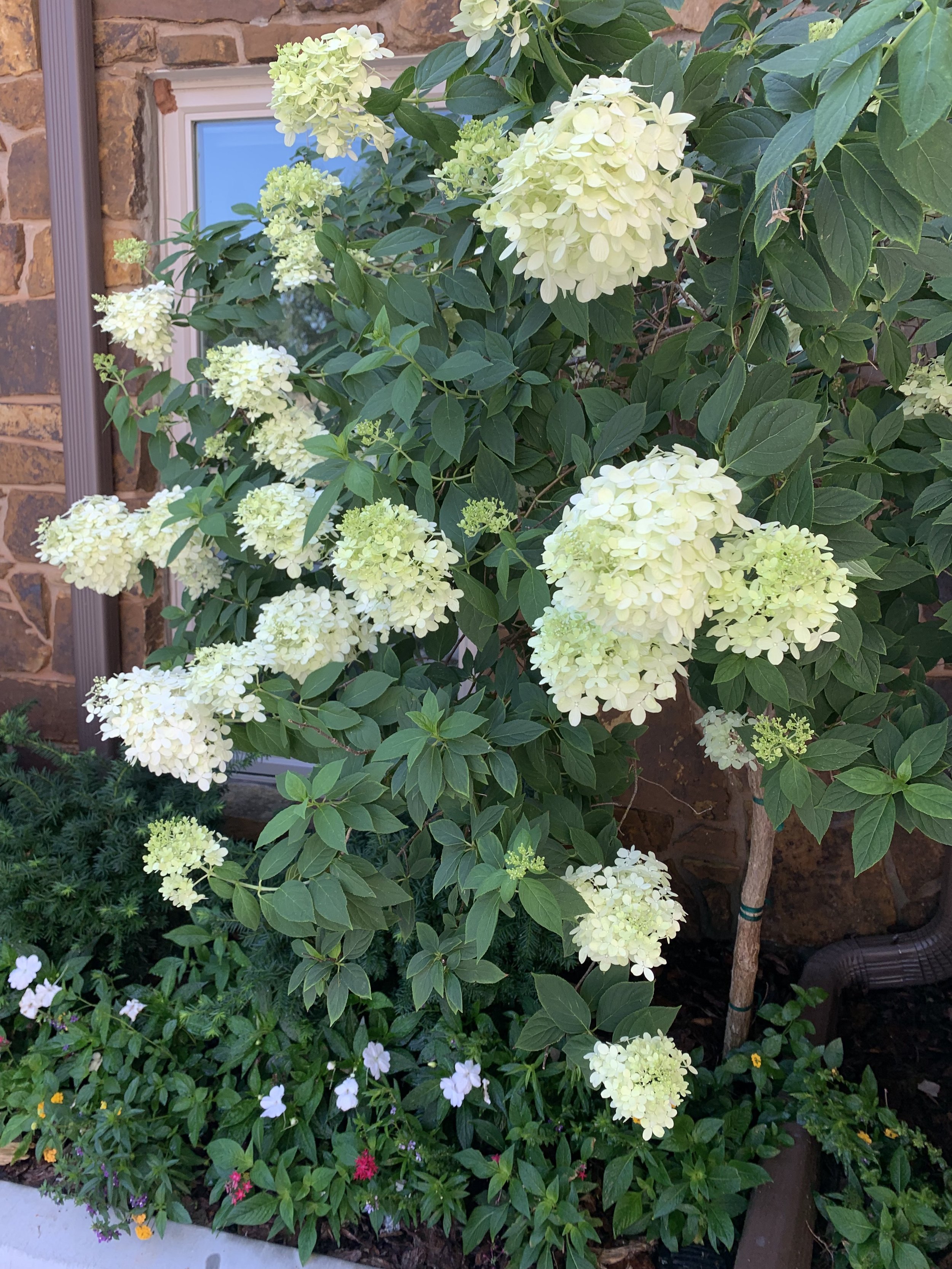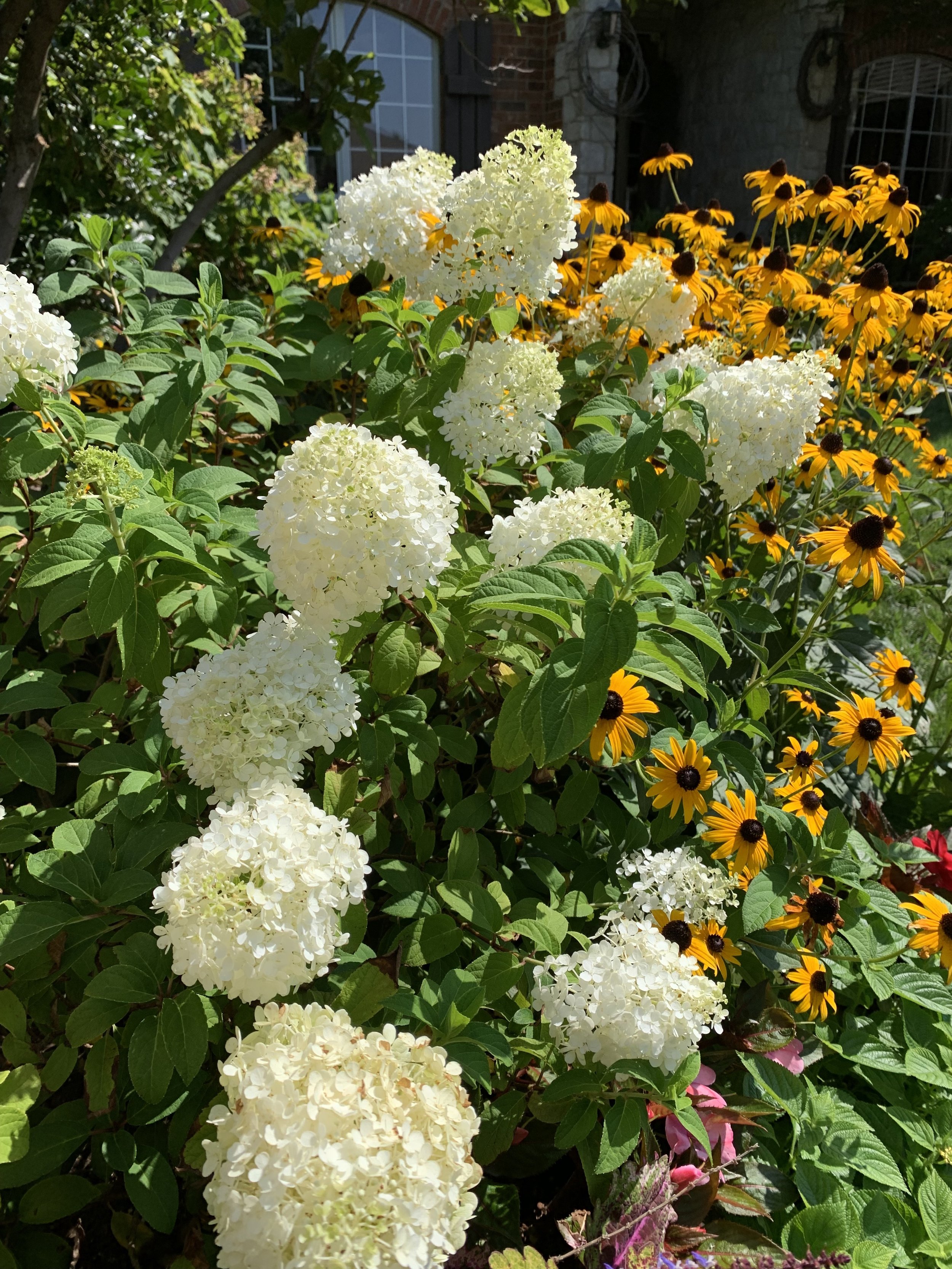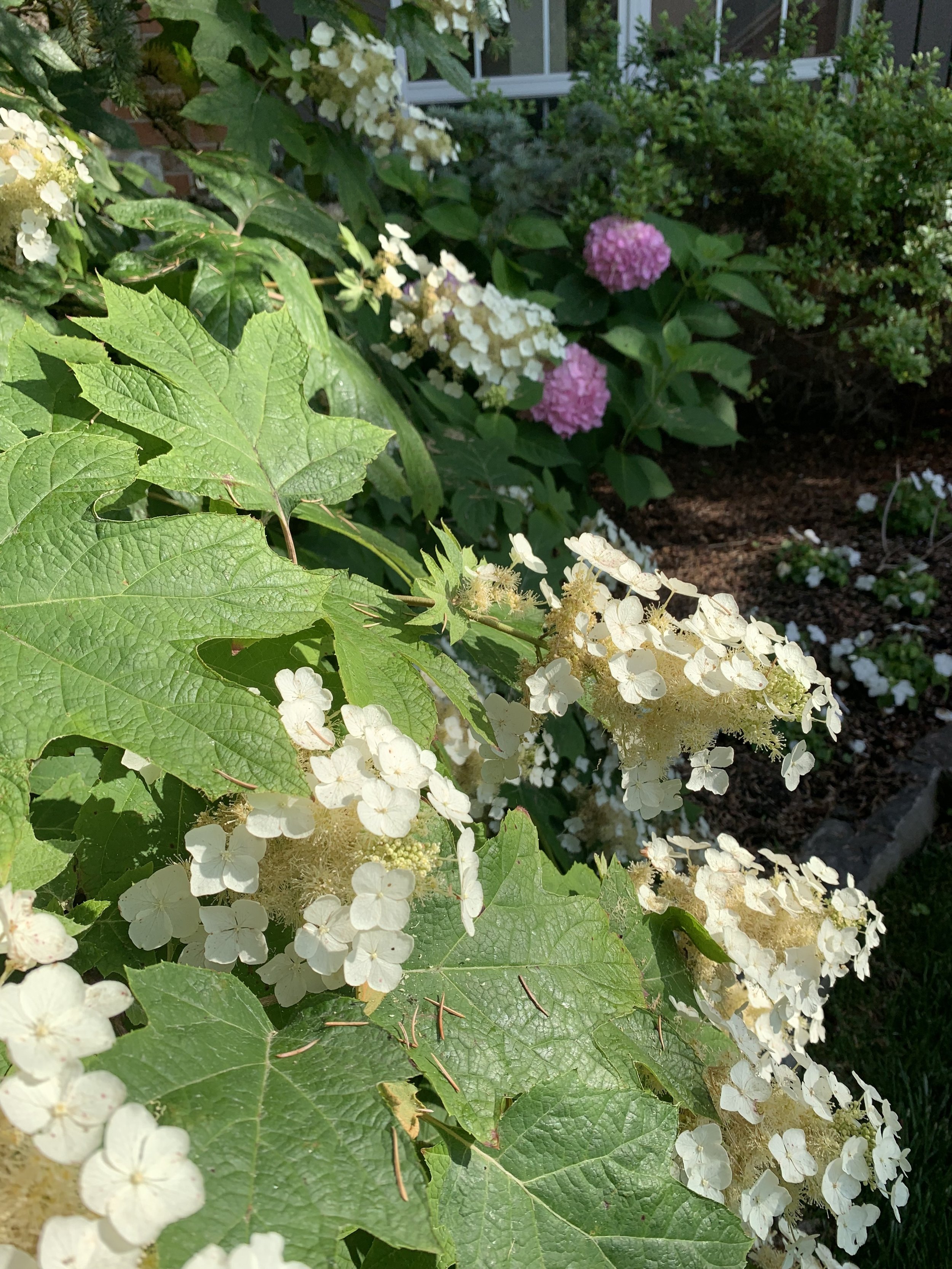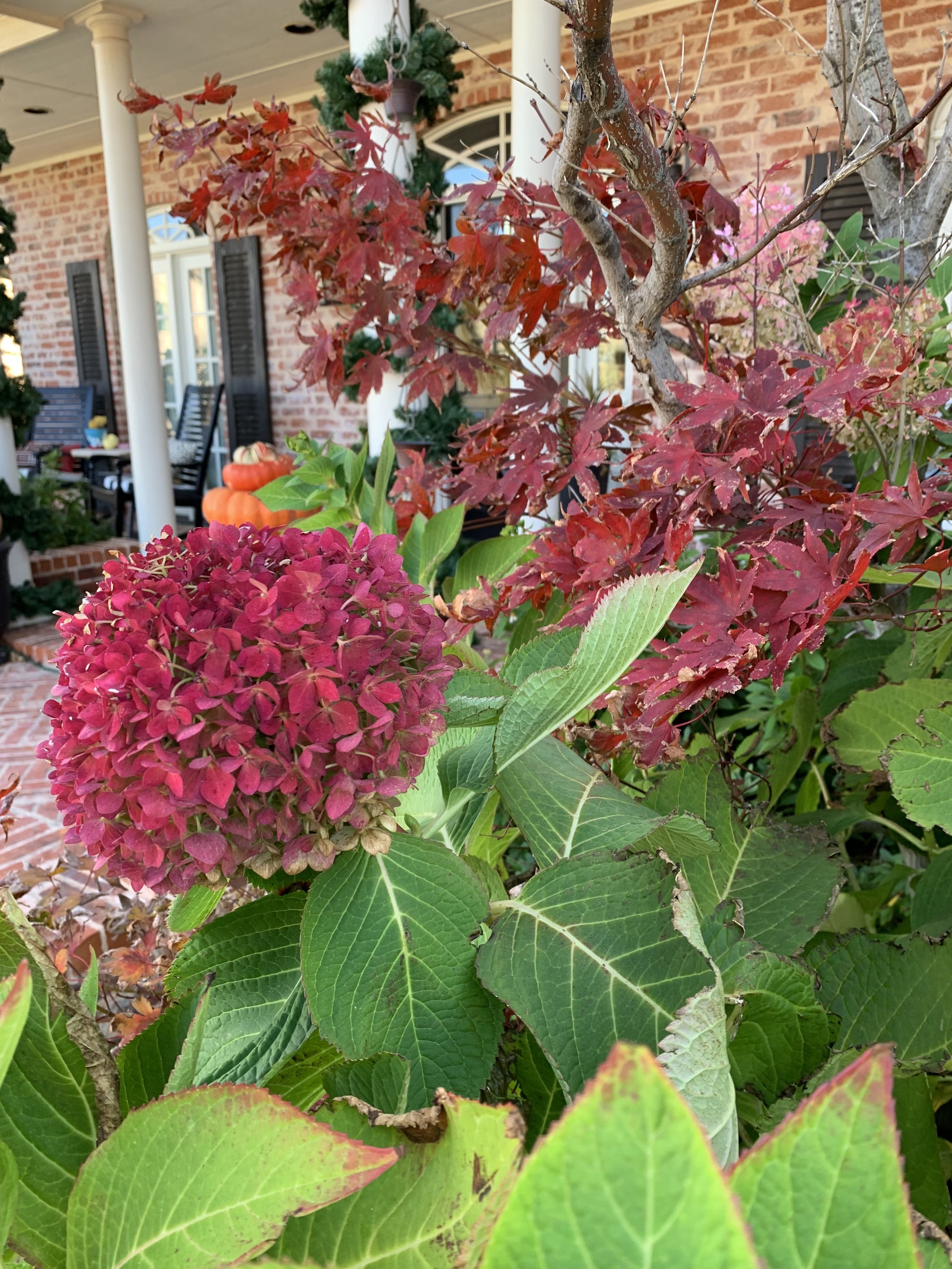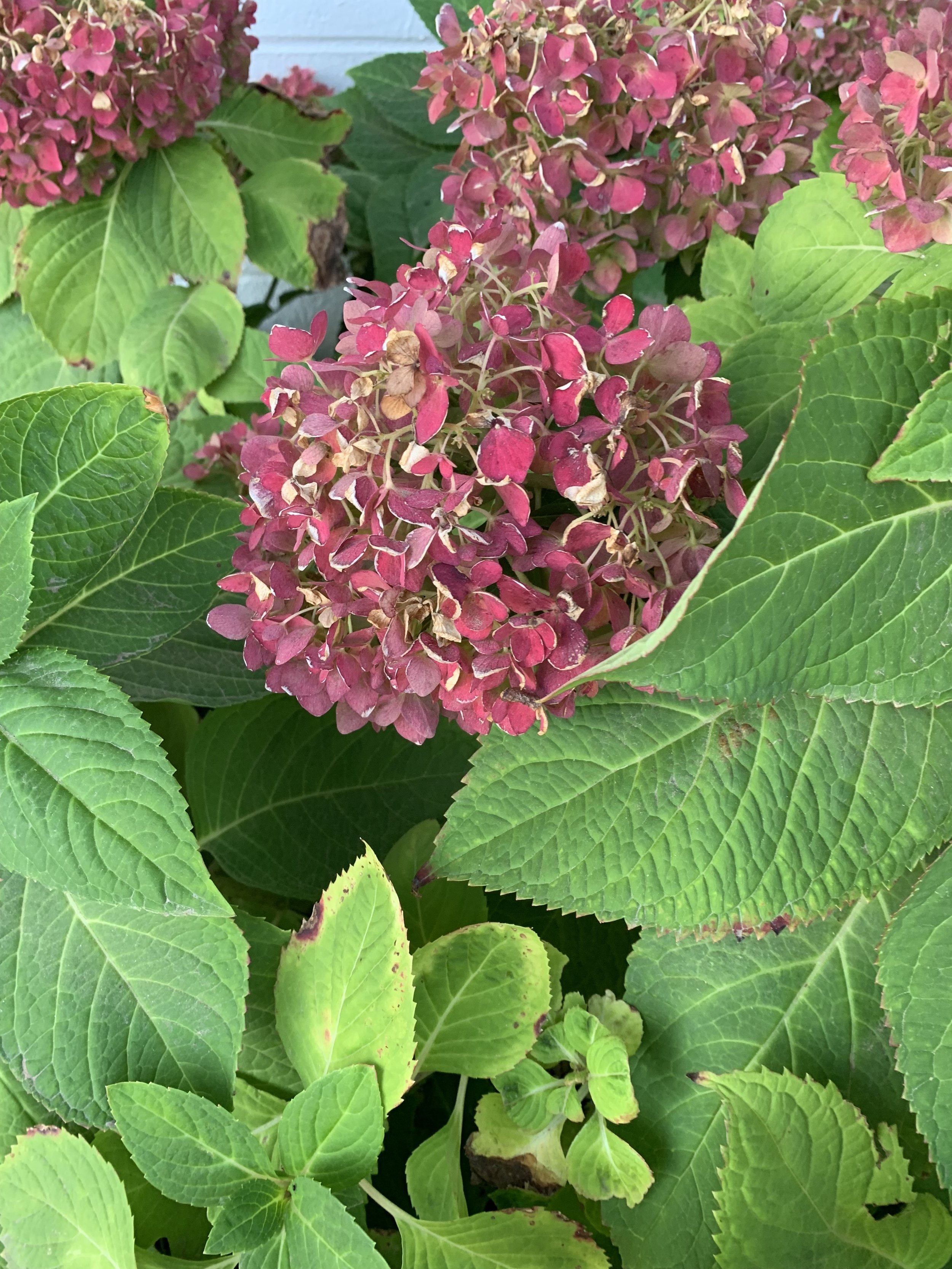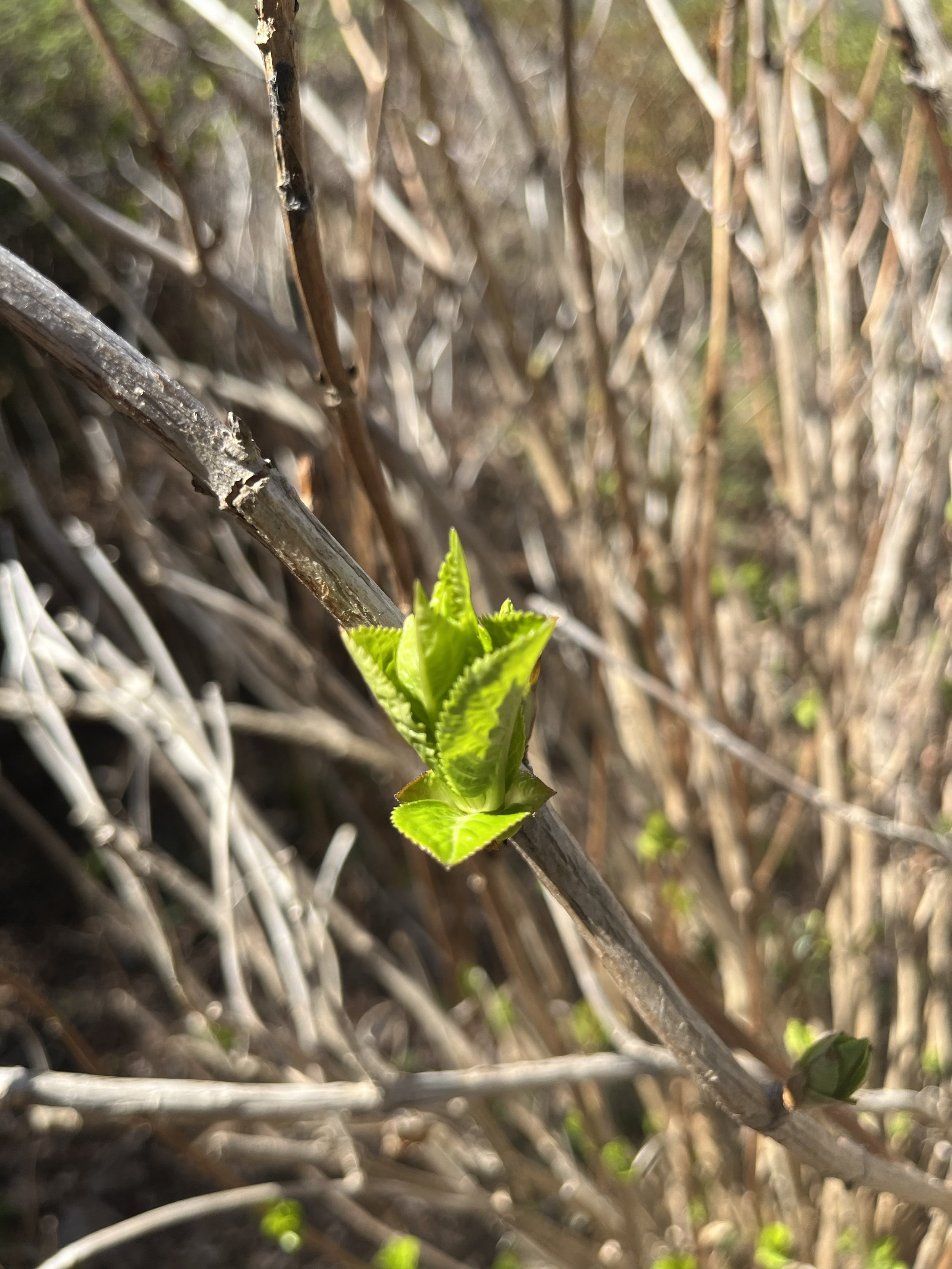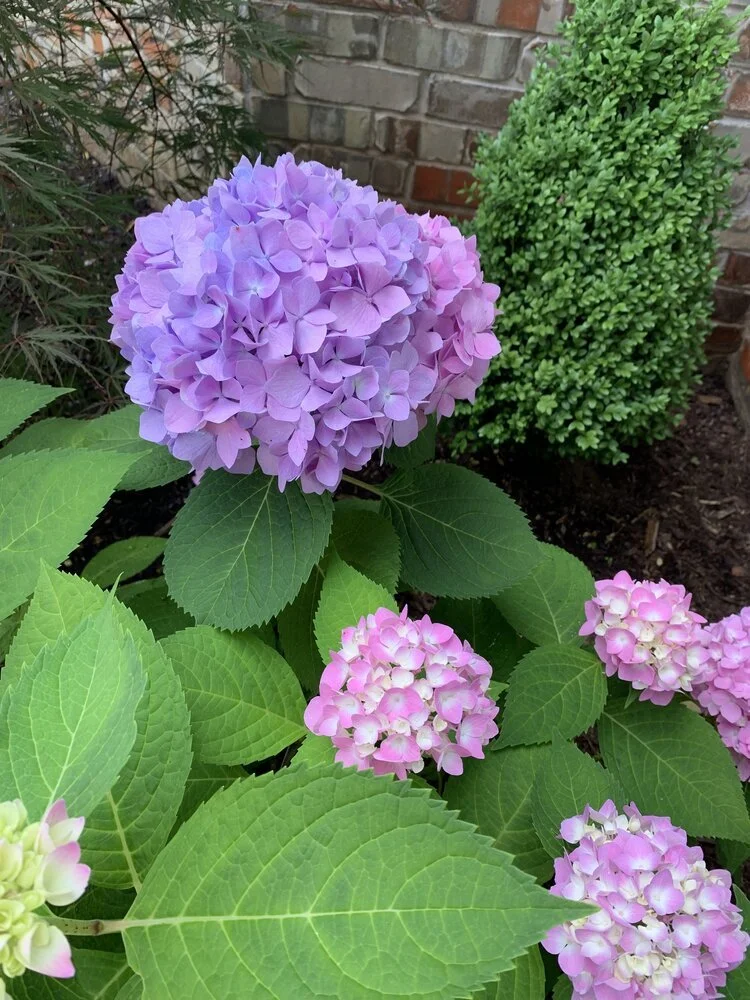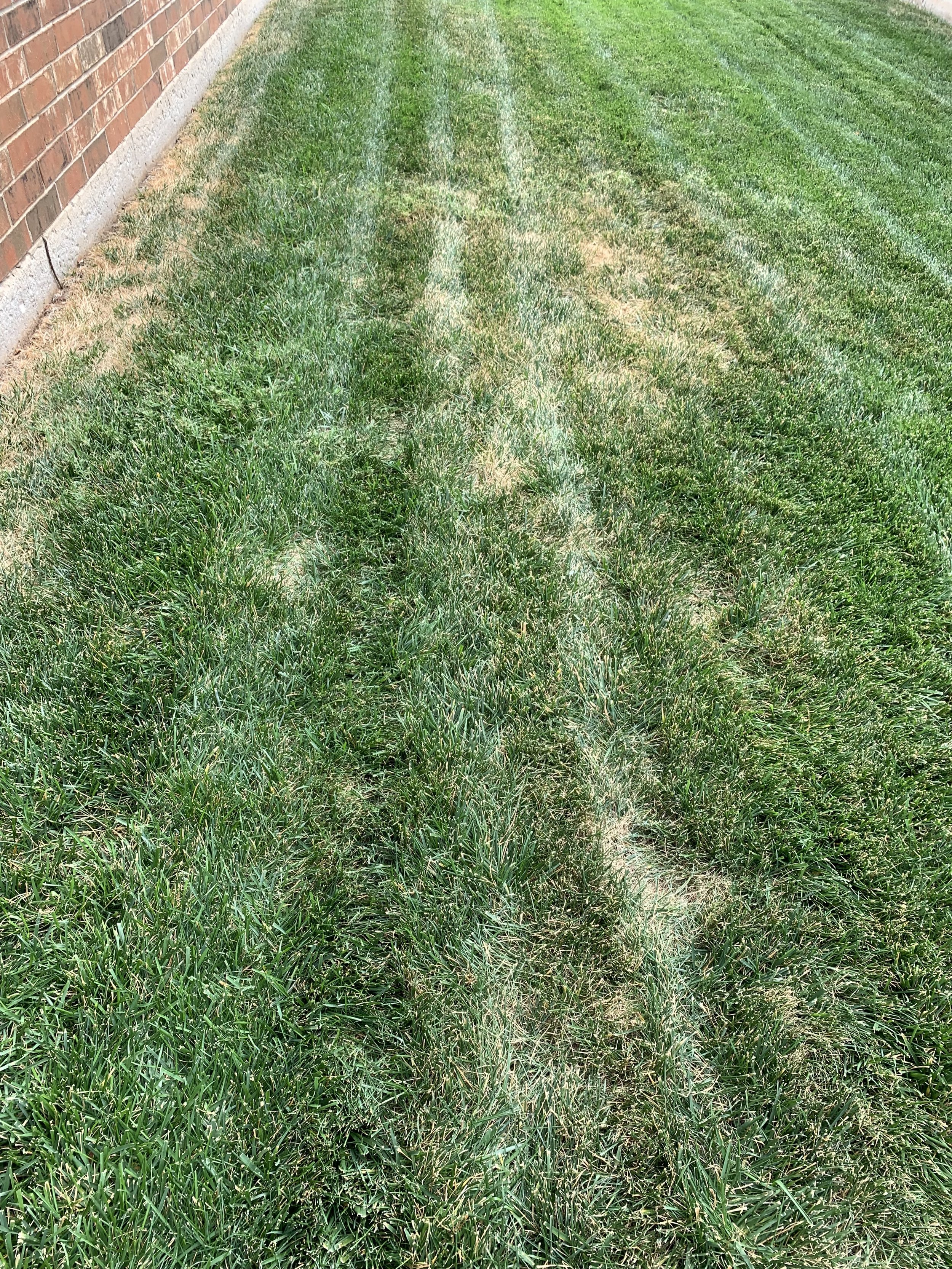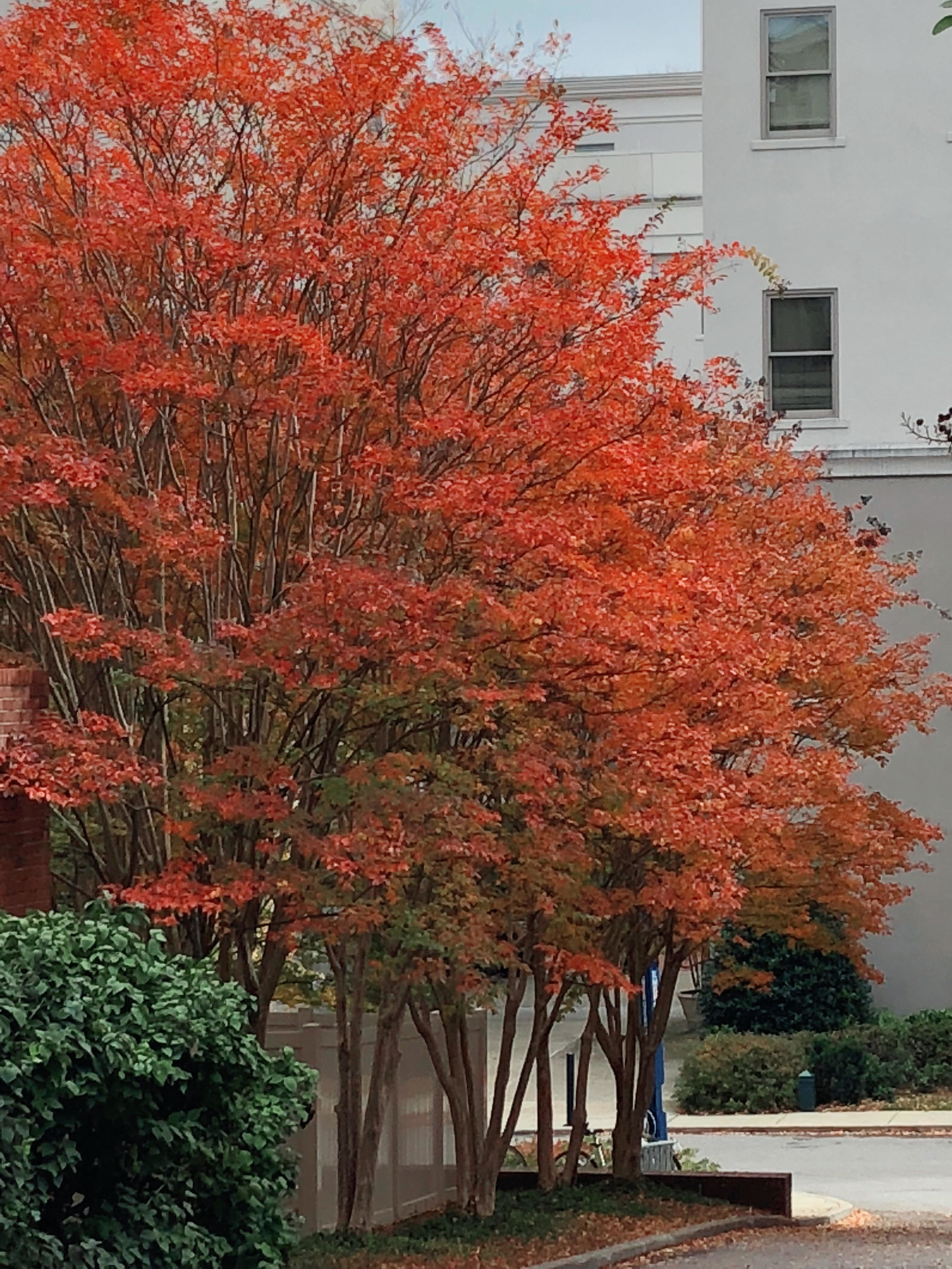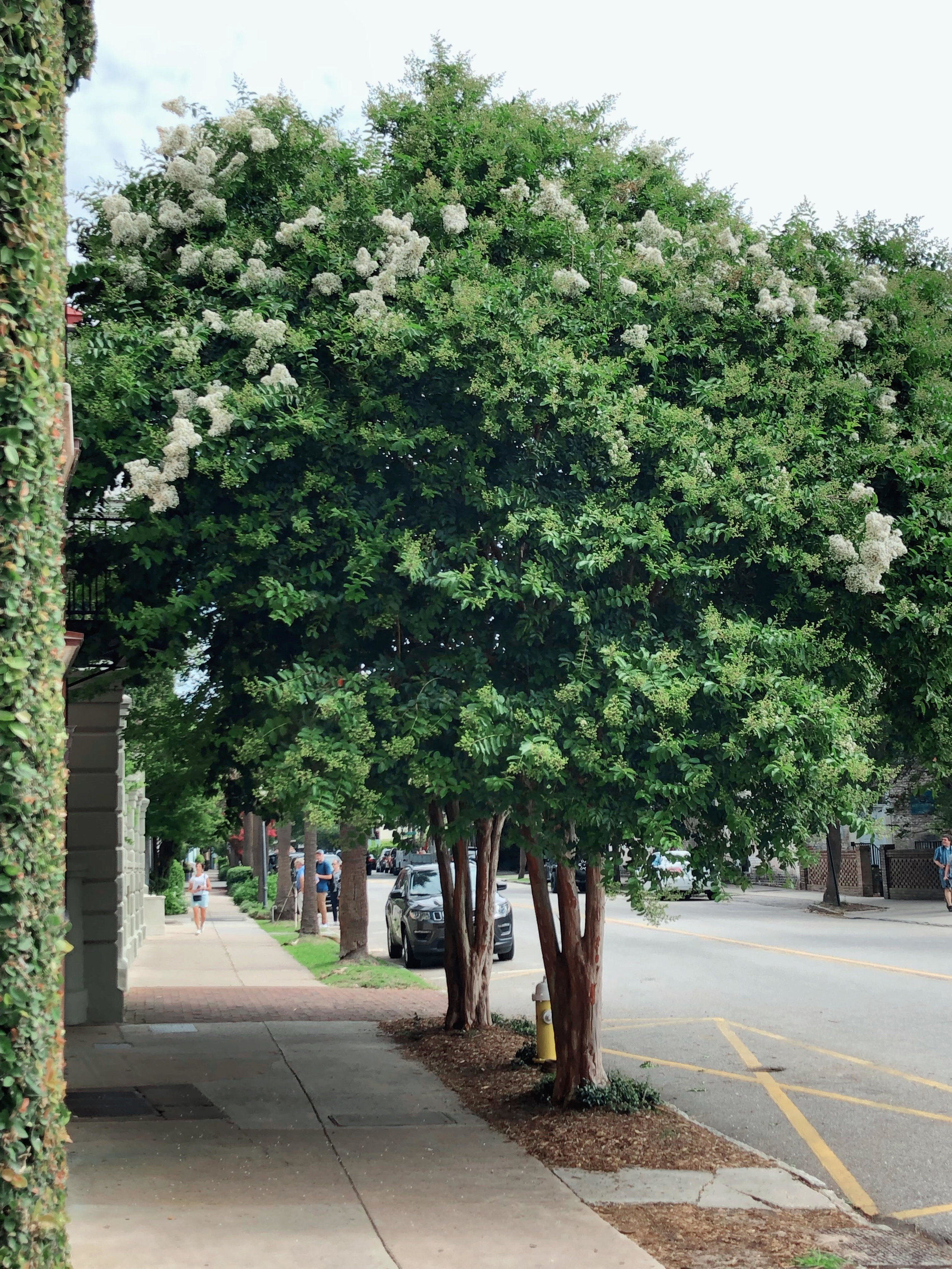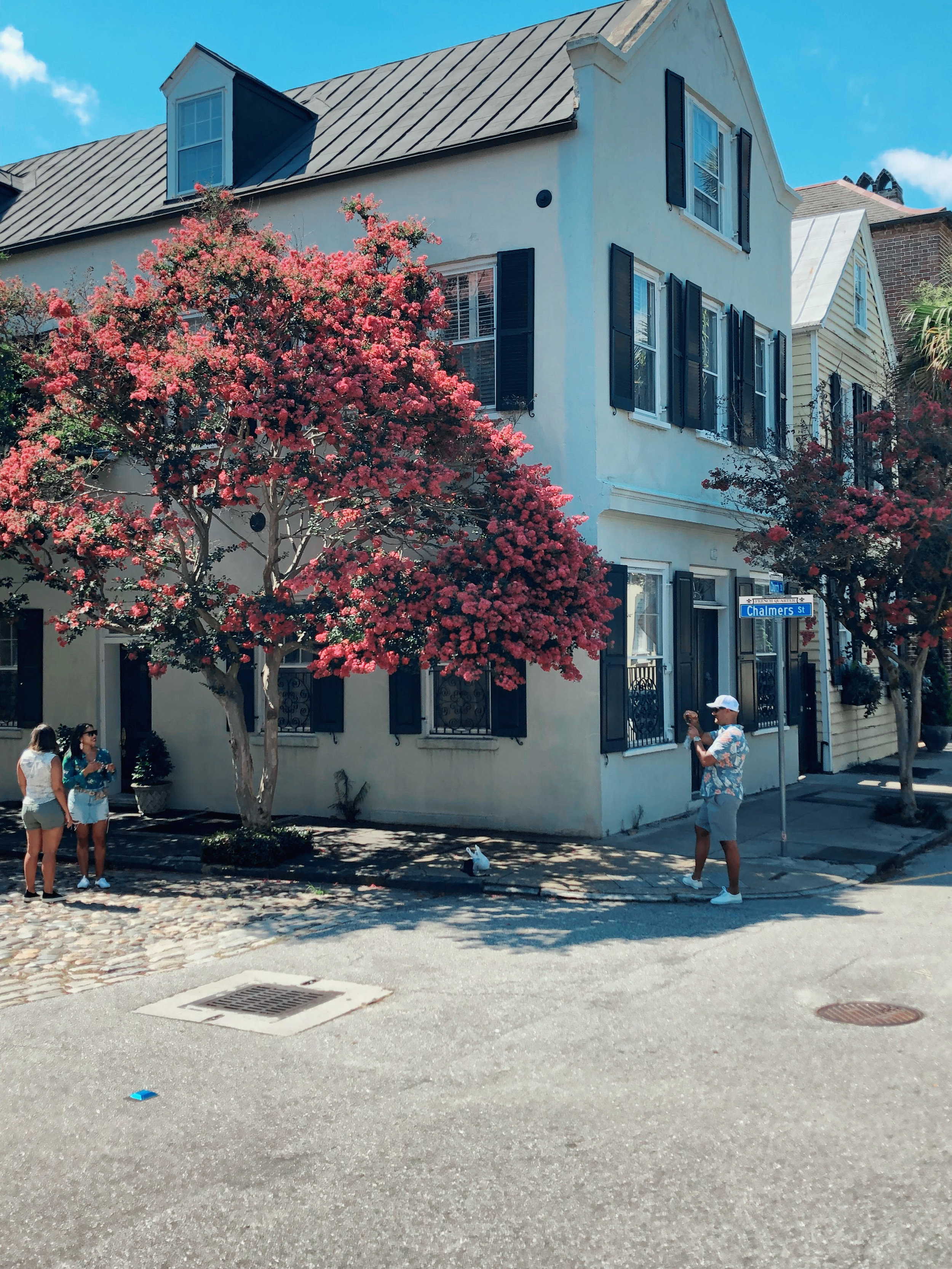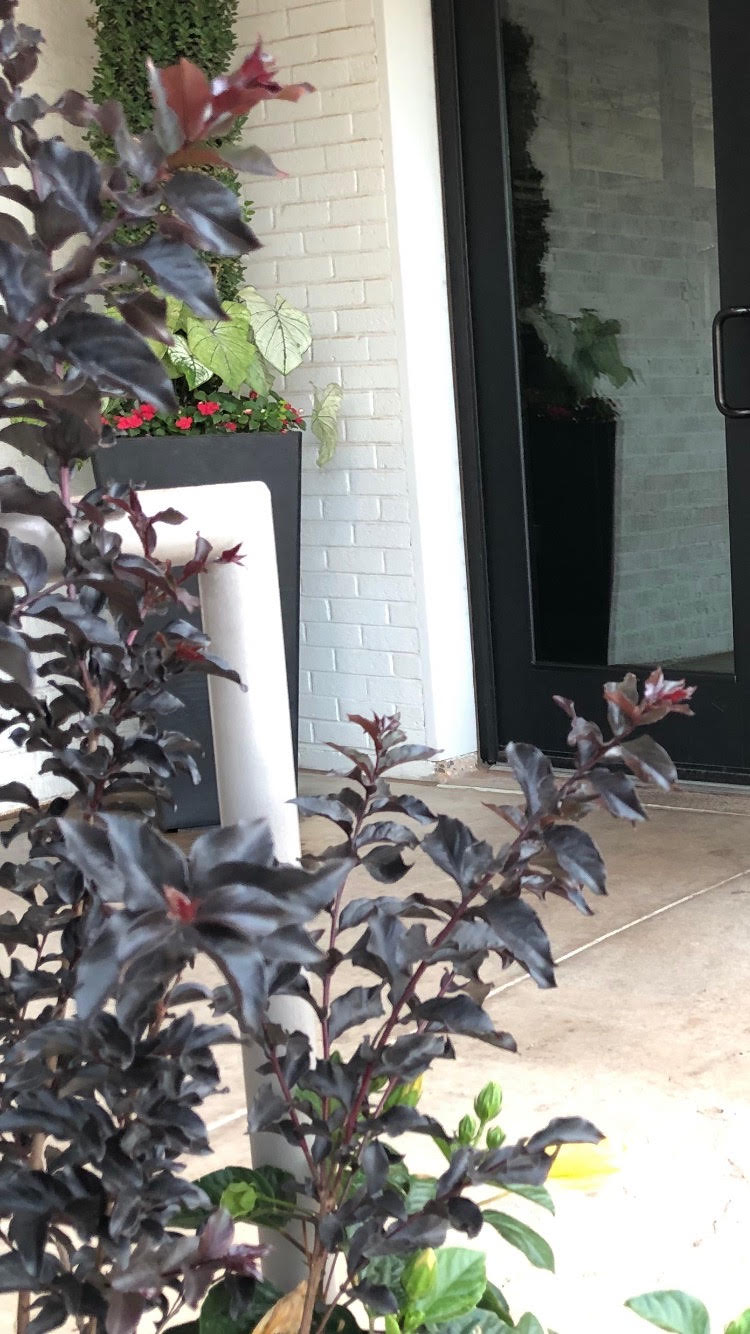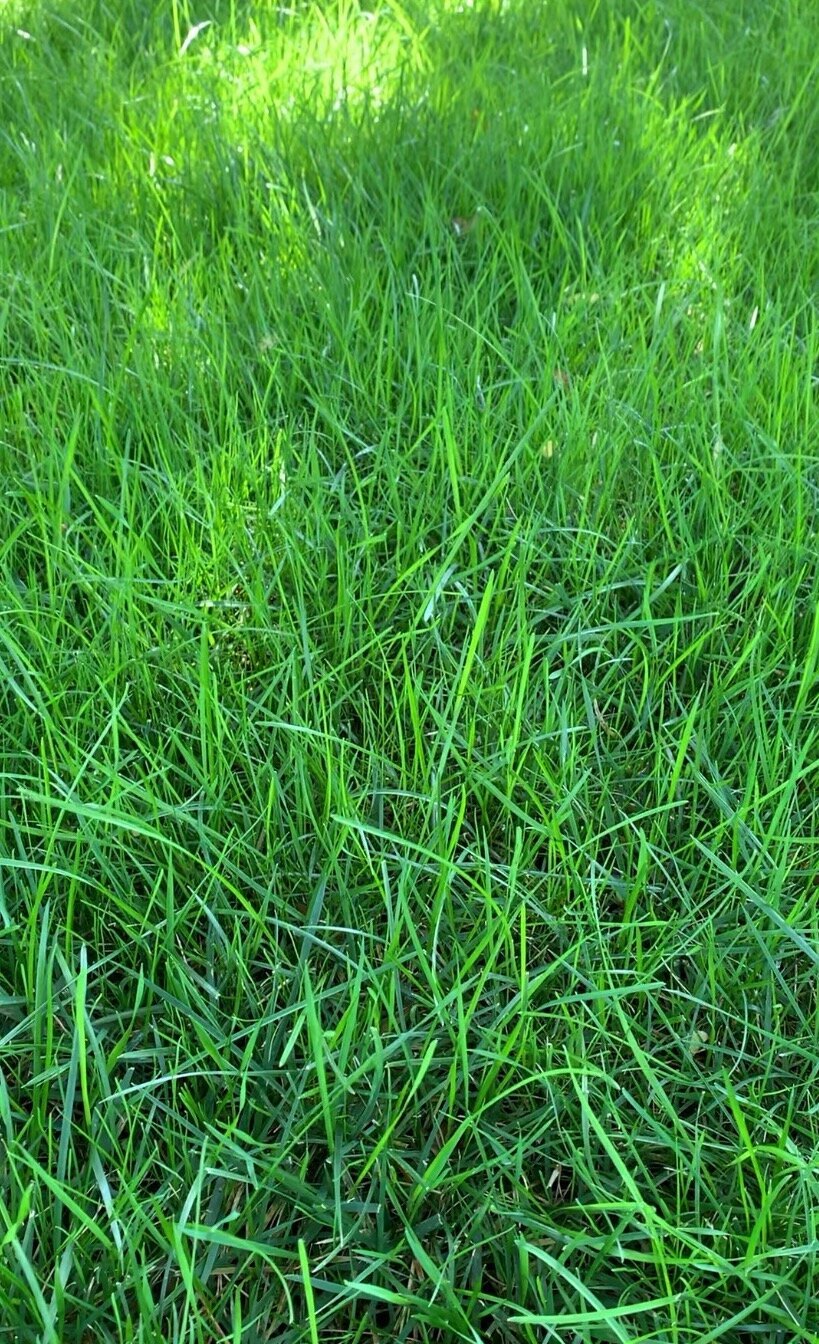
Fescue’s Summer Off Season
Question: What is one of the best things about living in Oklahoma?
Did anyone say: Living in the transition zone?
I’m guessing that was no one’s answer.
What is the transition zone? It is the area across the middle of the US between where warm season turf grows in the south and cool season grasses grow in the north.
The Transition Zone is the area of the country you can choose to grow either warm season or cool season grasses.
Bermuda is the common warm season turfgrass in our region. The advantage bermuda has is it loves the summer heat and as long as it receives moisture, it will be at its best in July and August.
Fescue is the cool season option. Fescue tolerates more shade and stays green nearly year-round. You can’t beat the deep rich color in the spring and fall. Fescue stays green well into December, often keeps some color through the winter, and as soon as the winter starts to break in early March, fescue bursts back to life.
Both have their off seasons.
Bermuda’s off season starts in November and continues until April. During this time, it goes fully dormant and turns straw-brown for months.
When is fescue’s off season?
Yes, fescue loses its green color in the winter and stops growing. So, yes, fescue has an off season in the winter, but much shorter than bermuda. Fescue goes through another slump in July through August when temperatures above 95 degrees are common. During fescue’s summer off season, growth slows and the color isn’t as intense. But, when a fescue lawn is healthy and growing under the best conditions, the summer off season is barely noticeable.
In April, customers with bermuda lawns often ask why their lawn isn’t as green as the fescue lawns on their block.
And, right now with 10 consecutive 90+ degree days, customers with fescue lawns are asking questions about why their fescue isn’t looking as good as it did in June.
Fescue lawn with dappled sunshine.
July through August is fescue’s second off season while bermuda is at peak season!
Bermuda will always have more color than fescue in July and August, but March through June and again October into December, fescue will always win the color battle.
Fescue when watered and mowed properly in full sun in the heat of the summer.
How do you keep a fescue lawn looking its best in the summer heat?
Let’s run through a list of best and worst practices for fescue during its summer off season.
Best practices for keeping fescue looking good during July and August:
Mow fescue at 3” – 3 ½”. The more leaf space the better color and the more drought tolerant the lawn will be.
Water deep. Water infrequent. Water in the early morning. Fescue lawns that are receiving 1 ½” of moisture per week, on an every other day schedule, only in the morning, look the best in the heat of summer.
Fescue lawns that receive at least some dappled sunlight and are in areas of good air circulation look the best during the summer heat.
Fescue lawns that are aerated in the fall have stronger root systems and can better withstand hot, dry days.
A properly watered and mowed fescue lawn last year during the first week of August.
Worst practices for fescue during the summer heat:
Don’t over water. Short, frequent watering does far more harm than good. It is a myth that fescue needs watered daily during the heat of July and August. When temperatures are hot and fescue stays wet for more than 6 hours at a time, brown patch will damage the turf. When brown patch starts spreading in a fescue lawn, it looks like the lawn needs more water. The natural response is to water more which makes the problem worse. It is common when making site visits where customers are concerned about their fescue to discover brown patch is the problem. Often the homeowner has increased watering to two times per day, morning and evening, every day trying to keep the fescue alive, all the while making it worse.
Brown patch in fescue.
Fescue with a mild case of brown patch.
Brown Patch is a result of fescue staying too wet when temperatures are warm. This year has been a perfect season for brown patch to flourish. Now that we have received two weeks of 95+ degree weather, areas weakened by brown patch in June are starting to show stress.
Heavy shade and low air circulation. Fescue performs best if it receives some sunlight every day. Fescue will tolerate more sun than most realize and does well in full sun when it is watered and mowed properly. Air circulation plays the important role of drying the leaf blades between watering cycles. Small backyards, privacy fences, and heavy shade are the hardest on fescue in July and August. This week Hall | Stewart Lawn Care Specialists have visited several fescue lawns with good air flow and dappled sun resulting in healthy fescue with good summer color while in the same lawn there is thinning/fading fescue in areas with low air circulation and deep shade.
Fescue cut too short. Remember leaf blades store moisture the plant needs to withstand the summer heat. Fescue survives through July and August best when it is cut at 3” to 3 1/2”. Every fescue lawn I have seen this week that is being maintained below 3” is struggling. If your fescue is less than 3” tall, don’t mow again until it reaches 4”, then remove only ½” to 1”.
Tight clay soil that has never been aerated resulting in shallow rooted fescue that will struggle in the heat.
Drought stressed fescue.
If your fescue is losing a lot of color check the soil. If it is dry, increase water by deep soaking in the morning every other day. If the soil is moist, then the problem is brown patch.
Fescue seeded over Bermuda in full sun in the heat of the year.
Fescue in full to dappled sun in July.
During fescue’s offseason, take a stroll around your lawn and start planning for the fall. The cooler days of September will be here soon.
Do you need to make some changes to how you are mowing and watering your fescue?
Are you trying to grow fescue in full shade, in a location where there is little wind movement?
If so, can you improve the conditions, or should you consider transitioning to a shade tolerant ground cover?
Or, are you OK with knowing the area needs to be overseeded with fescue every fall, will look wonderful for 9-10 months, fade for a couple of months, and then repeat the cycle again after fall overseeding?
If your fescue didn’t perform well due to the excessive moisture and high humidity of the early summer, or if it has struggled with brown patch in the heat, start making plans to overseed this fall.
Do you have areas of the lawn that are becoming too shady for bermuda? Bermuda starts to thin anywhere it does not get at least 6 hours of direct sunlight every day. Is this the fall to start establishing fescue in those areas?
Whether you have a full fescue lawn, or just some fescue in shady areas, don’t fret, fescue’s best season is just a few weeks away!
Lorne Hall
Hall | Stewart Lawn + Landscape
(405)367-3873
What’s bugging your landscape?
In last week’s July Lawn & Landscape Tips, we touched briefly on common insect issues at this time of the summer. This week lets dive in a little deeper.
Healthy landscapes are a result of an Integrated Pest Management program.
The first step of an IPM approach is maintaining healthy plant material with proper watering, feeding and pruning. Insect activity increases on plant material that is already stressed.
The second step is simply monitoring your plants. Weekly observation is critically important. Does the overall plant color look healthy? How do the leaves look?
Our landscapes represent large investments in both time and money. They add curb appeal and provide enormous benefits to the environment.
It is important that we do all we can to keep them healthy and growing.
Here are a few of the problems that we are either currently seeing in landscapes, or we have on our watch list:
Be on the lookout for any plants that don’t look their best. Notice the slight color difference between these two Taylor Junipers? After close inspection, bagworms were found feeding on the one on the left.
Bagworms
Timing - Eggs hatch in May and they remain active through September.
½-2” long spindle shaped bag wrapped in the foliage of the host plant. Young bagworms are very hard to spot.
Favorite host plants are juniper, arborvitae, spruce, pine and cedar. But they can attach themselves to deciduous shrubs and trees and we are seeing a lot of bagworms on deciduous trees this year!
Females lay eggs in bags left on plants over the winter. One female bagworm will lay as many as 500 eggs. The eggs hatch in the late spring and tiny larva crawl out and start feeding. As they feed, they use silk and plant materials to protect and camouflage themselves. Bagworms can strip a plant of foliage.
Heavy infestations, particularly on the same plant year after year, can completely defoliate a plant. Defoliation of needle evergreens, such as junipers and cedars, usually results in plant death. Broadleaf evergreens and deciduous plants typically are not killed but a weakened and more susceptible to other insect and disease problems.
When there are only a few, control is best by hand picking. If you have a large population an insecticide treatment should be made as soon as they are noticed. Try to remove any bags left on plant material in the fall. Bags left on the plant will serve as cocoons for females to lay more eggs. When removing bags, destroy them. Do not pick and toss on the ground as the worm will crawl back to a plant.
Bagworms produce silk threads to move locations.
Bagworms use the leaves of the host plant to protect themselves while they feed. This bagworm came off an elm tree, not a typical host plant for the caterpillar.
Bagworms can strip a mature Bald Cypress of its leaves quicker than you would expect.
Although not as common bagworms will feed on deciduous trees. If you notice skeletonized leaves, look close, most likely there are bagworms attacking the tree.
Young bagworms are small and can be hard to see. They wrap themselves in the plant needles making them hard to notice.
If you notice a juniper or cedar starting to loose color, inspect for bagworms.
Left untreated, large, heavy infestations of bagworms will kill mature trees and shrubs.
If there are not too many, the best way to control bagworms is to simply pull them off and throw them away. Don’t throw them on the ground, if you do they will crawl back onto the tree.
APHIDS
Timing – Species start producing in April and increase rapidly as temperatures increase.
A small, soft-bodied insect that is nearly invisible to the naked eye. The honeydew, sticky substance they excrete is the easiest way to know aphids are active. Colonies develop on the underside of the leaf and often are not noticed until the sticky substance starts to show.
They feed on the leaves, stems and buds of a wide variety of plants throughout the growing season. Usually, they attack the succulent new growth.
Aphids generally do not cause serious harm to mature plants, although they can be harmful to young plants. Heavy populations can cause wilt and yellowing of leaves as the sap is removed. Blooming trees and shrubs will see a reduction in flowers. Aphids can promote sooty mold, a fungal disease, and spread viruses.
Early detection is the key. Aphids mature in 7-10 days and can produce 40-60 offspring resulting in population explosions in the thousands within a few weeks.
When populations are small, a high-pressure blast of water can be used to wash the insects off the leaves. Wiping the leaves with a soapy solution is also effective with early detection. In most cases, once you notice the honeydew, it is best to treat with an insecticide. A dormant oil application in the winter is helpful in reducing populations the following season. Lady bugs can be used as a beneficial insect control when populations are small.
Aphids are small and often go unnoticed but the sticky substance they leave behind is easy to spot.
Aphids feed on the underside of the leaf and become noticeable as the leaf becomes covered with the sticky substance they excrete.
SPIDER MITES
Timing – They are active from early summer through fall. The hotter and drier the weather, the more severe the problem will become.
Very small (1/60 of an inch) that live on the underside of leaves and survive by sucking on the cell content of the leaves. First shows up as stippling of light dots on the leaves. Leaves then turn from bronze, to yellow, and then fall off.
They get their name from the small silk protective webs they create.
Because spider mite damage can look like many other plant problems, the best way to determine if it is spider mite is to shake the plant leaves over a white sheet of paper. Spider mites will look like tiny moving black dots on the paper.
Spider mites reproduce rapidly when conditions are perfect. Spider mites can hatch in as little as 3 days and become mature within 5 days. One female can lay up to 20 eggs per day during their 2-4 week life span.
The best control results from making two applications 7-10 days apart.
Adequate plant moisture during the hottest time of the year helps prevent population explosions.
Early signs of spider mites.
To know if you have spider mites shake leaves over a white sheet of paper.
Spider mites will look like tiny moving black dots.
Silk protective webbing formed by the spider mite.
CRAPE MYRTLE SCALE
Timing – Females lay eggs from May through September. Crawlers emerge within a day or two and spread to new areas of the plant.
The scale is white to gray and exudes a pink blood-like liquid when crushed. Initially you will notice a black sooty mold on the twigs and trunks of crape myrtles.
Bark scale is difficult to control without the use of a systemic insecticide to kill the sucking pests.
Inspect new plants for scale before purchasing.
Scrubbing the bark with a soft brush and mild solution of dishwashing soap and water will remove many of the females and eggs as well as remove the black sooty mold.
A dormant oil application in the late winter to early spring is an effective way to reduce scale populations.
This 25 year old Crape Myrtle was suffering from Crape Myrtle Scale last year. One year after trunk injections of a systemic insecticide and the mature tree is once again healthy and insect free.
White scale attacks Crape Myrtles leaving a black sooty substance on the bark.
SOFT OAK SCALE
Timing – One generation per year. Crawlers emerge in June, feeding and spreading on the branches.
They are convex in shape resembling a helmet, brown and ¼” in size. Crawlers are small and pale in color.
Scale feeds on the fluids in the vascular system.
They produce honeydew which is a source for attracting ants and other insects.
They rarely kill the tree but open up wounds that provide entry for other damaging pathogens.
When populations are allowed to increase canopy damage may occur along with discoloration of the leaves.
Application of an insecticide via spraying needs to occur in June when the crawlers are active. Annual spray applications in June are required until the populations are under control.
An alternative treatment is trunk injections of a systemic insecticide. Trunk injections allow the insecticide to be readily distributed throughout the plant’s vascular system to the fluids the scales feed on.
Soft Scale are small brown convex shaped insects on oak tree branches.
WEBWORM
Timing – The first-generation spin webs in July and later generations create webs in September to October.
Caterpillars weave a loose web around tree branches while they are munching on the leaves.
Favorite trees include hickory, mulberry, oak, pecan, popular, redbud, sweetgum, and willow. But you can find them on most ornamental shade trees when populations are heavy.
Early generations won’t cause long-lasting damage. They are just unsightly. The last generation can cause damage when the branch tries to rebud just before a killing frost. When this occurs, you can expect the affected branch to die.
The best control is to cut out any affected branches in the early generations when the webbing is small. Completely dispose of the branch as the worms will exit the webbing and return to a tree. If the web is too high or if the population has increased to the point that pruning is not possible, an insecticide application will be needed. The spray must penetrate the webbing to gain control of the caterpillars. Dormant oil applications are a good idea as worms overwinter in tree bark.
Even though early populations do not cause damage, early control is important. When left untreated, typically later generations’ populations increase.
Webworm caterpillars loosely weave webbing around branches to protect them while stripping a branch of leaves. When spraying, you mush have enough pressure to penetrate the webbing to gain control.
The webworm caterpillar weaves a loose web around tree branches to protect themselves while they are destroying your tree’s leaves.
The first generation of webworm started to show up in trees this week. Inspect your trees this weekend. The best control is to cut the branch out when they are small.
ARMY WORMS
Timing – Moths migrate from the Gulf Coast in June, lay eggs and the first-generation caterpillars start feeding in July. With a 28-day life cycle there can be 4 or 5 generations between July and November.
Army worms are always present in our summer lawns and landscapes. When populations are normal you may never know they are there. But, when conditions are right, as they were in 2021, we can see an explosion and experience turf damage.
Early caterpillars are green and very small. As they grow to 1 to 1 ½” they turn browner with reddish brown stripes on each side of the body and small back spots on the top. Their distinctive mark is an inverted “Y” on the front of the head.
Army worms will feed on any leafy, soft plant with plenty of moisture in the leaf. In 2021 they feasted primarily on fescue lawns because growing conditions were perfect for fescue. In previous outbreaks, army worms picked bermuda over fescue. If army worms are high in populations this summer, you can expect them to choose bermuda over fescue because the early summer heat has kept fescue from flourishing.
Watch for areas of the lawn that appear to have drought stress should not be. Test the area with a soap flush. Mix 1 teaspoon of dish soap with 1 gallon of water and pour over the surface. If you have army worms, they will come to the surface.
Treatment with a systemic insecticide when the worms are small before they become heavy feeders is best.
Can you count the number of army worms in this picture from August ‘21?
If you have areas in your lawn that are turning brown you can test for army worms by drenching the area with soapy water. If there are army worms present they will immediately come to the surface.
Army worms are present every year but in numbers that don’t usually cause turf damage. August ‘21 army worm populations were high enough they devastated areas of lawns in just a couple of days.
The best way you can protect your investment is to take a few minutes each week to inspect your lawn, shrubs, trees and flowers.
Hall | Stewart offers a Tree & Shrub Care Program based on an Integrated Pest Management approach focused on plant health. The program includes dormant oils to smother overwintering insects in the late winter, systemic insecticides in the early spring, inspection and treatment as needed in the summer, and fertilizer applications in both the spring and fall.
Complete control is much easier when insects are noticed early, and populations are small.
Please let us know if you have any questions or concerns about your lawn and landscape.
Lorne Hall
Hall | Stewart Lawn + Landscape
(405)367-3873
Summertime = water time!
Friday, June 20th marked the official start of summer. Known as summer solstice, it is the longest day of the year.
So, if it is officially summer, it means it is time to review best watering practices.
Wait a minute, didn’t a local weather person report this week that the past 60 was the 3rd wettest 60-day period in Oklahoma City? That is true. The metro area has received 23” of rain since mid-April. Another way to think of it… in the last 60 days we have received over 60% of our average annual rainfall or 36.5”.
Again, why are we talking about best watering practices?
Because, summer in Oklahoma means temperatures will rise and rainfall will decline.
Best watering practices start with being aware of current weather patterns and adjusting watering schedules.
Best watering practices need to be your number one focus in the landscape for the next few weeks.
Best watering practices will have the biggest impact on the health and appearance of your lawn and landscape for the rest of the summer.
Best Watering Practices:
Apply 1” to 1.5” of water per week.
Your lawn and landscape need 1” to 1.5” of moisture per week when temperatures are consistently 90 degrees or higher.
Which begs the question: “How long should I water?”
Every irrigation system is different – different head types, different size nozzles, different head spacing, different soils, different slopes, etc.
The best way to know how long you should water is to measure the amount of water your system puts out in each zone. Take a few cans and place them around your lawn in a random pattern. Run your sprinklers through a cycle and measure the amount of water in the cans. If the sprinklers ran for 15 minutes and you had .25” of water, that zone needs a total of 60 to 90 minutes of run time per week.
Next determine how long you can run your irrigation before there is excessive runoff. This will tell you how many times per week you need to water. If you can get away with watering every 4th day, you will have a healthier, stronger landscape.
If you don’t have the time to audit the amount of water your system puts out, start with these settings, monitor, and adjust:
Fixed spray pattern heads with 10-15’ spacings – 15 mins per time.
Larger rotor type heads on 20-30’ spacings – 30 mins per time.
My practice has been, using the best practices mentioned here, to water my fescue lawn every 4 days when temperatures are in the 90s and increase to every other day when the lawn shows signs of stress from lack of water.
Set your controller to water with back-to-back run times.
For most of our landscapes, if you run our sprinklers long enough to get the recommended amount of water, you end up with a lot of water running down the street. Splitting zone run time in half and setting the controller to run through the zones back-to-back will improve the amount of water that soaks in and reduce the amount of water that runs off.
Example: Set the controller to run at 4:00 AM and 5:00 AM. When the 4:00 cycle completes, even if it is past 5:00, the controller will start the second cycle.
I know from experience that moist soil will absorb more water than dry soil. Soil is just like the sponge in your sink. A dried-out sponge repels water before it starts absorbing water. Your lawn is the same. The first cycle moistens the soil and the second cycle soaks in.
Split, back-to-back, irrigation cycles are an old golf course trick. Large commercial irrigation controllers have had a run/soak cycle setting that waters a short time, delays, and then waters a longer time for years. Now, more and more smart controllers offer a run/soak cycle feature.
I started using split, back-to-back, irrigation cycles years ago on lawns with slopes.
After seeing great results, I started incorporating the concept on all lawns.
It makes a difference in watering efficiency.
Water in the early morning.
Evaporation is at the lowest point in the pre-dawn hours. Typically, wind is also at the lowest point of the day in the pre-dawn hours.
I prefer to set most irrigation controllers to start at 4:00 AM with the goal of having the cycle completed by 8:00 AM.
Avoid watering in the heat of the day when much of the water will be lost to evaporation. Also, avoid watering in the evening. Watering in the evening promotes many turf diseases because the lawn stays wet too long.
This is critical for fescue lawns. If fescue stays wet for more than 6 hours at a time and nighttime temperatures are in the 70’s, brown patch is unavoidable. Fescue performs best in the heat if it is watered deeply, and grass blades are dry by noon.
If you water your fescue lawn in both the morning and the evening during the summer because you “can’t seem to get enough water on it!”, your lawn isn’t struggling because it is too dry, your lawn is struggling because you have created the perfect conditions for brown patch, a fescue lawn’s worst enemy.
IMPORTANT: Don’t water fescue in the evening during the summer. When water remains in the leaf for more than 6 hours, brown patch disease will develop.
How much difference does infrequent, deep watering make when it comes to developing a drought tolerant lawn? This is a picture of a fescue lawn in full sun in August that is deep soaked every 4 days. The picture was taken in mid-August with less than a 1/4" rainfall in the previous 20 days.
Daily watering is not needed.
Unless you are trying to get newly planted seed to germinate or new sod to take root, there is not a good reason to water every day. Always water deep and infrequent. Daily, shallow watering creates a landscape that is shallow rooted and more dependent on constant moisture for survival.
Fescue will also benefit from deep soakings, every other day, through the summer months. Shallow, daily watering in the summer heat is very damaging to fescue. Again: Brown patch symptoms look very similar to drought stress. Typically, the more you water, the worse the fescue looks, so you add more water, and the cycle of decline continues.
A common myth I would love to dispel is that fescue requires a lot more water than bermuda. Yes, it does for a couple of weeks in the fall when you are trying to get newly seeded fescue to germinate, but mature fescue doesn’t require more moisture than bermuda.
Aeration improves moisture absorption.
You can’t beat aeration for improving your soil structure. A key benefit of improved soil structure is better water absorption. Lawns that receive annual aeration (or at least every other year) do not experience as much runoff.
Head to head coverage is when the water from one sprinkler head reaches all the way to the next head. Without head to head coverage, dry areas can develop around heads.
Fixing uneven water patterns in your lawn may be as simple as making sure heads are straight. A leaning head will result in uneven water distribution.
A clue to an uneven watering problem is an arc pattern matching the sweep of an irrigation head.
Always pay attention to water needs.
If we receive 1/2” of rain or more, turn your controller off for a few days. Install a rain sensor if you are not good at remembering. A rain sensor will pay for itself easily in one season.
Just because it is summer, don’t assume you can leave your controller in automatic and forget it.
Don’t stress if your lawn and landscape gets a little dry, it will rebound quickly once water is applied.
A good indicator that your lawn needs water is the footprint test. If the grass retains your footprints instead of quickly springing back, it is time to resume watering.
Watch for uneven water patterns.
If you notice areas where the lawn color is fading, you may have uneven moisture patterns. This could be the result of a broken head, clogged nozzle, or a head that is out of adjustment.
Even if you don’t have an irrigation system, the concepts of good watering apply.
It is important to learn how long you need to water when you are using a hose end sprinkler. Next time you water, set out a few cans. You will be surprised how long you need to water to get the proper amount of water on your lawn.
Invest in a digital hose water timer, such as the ones made by Orbit. It will make it easier for you to control the timing and frequency of watering.
If you need help in determining your lawn and landscape’s water needs, let us know.
We can schedule an irrigation audit for your lawn and landscape. We will inspect for uneven water distribution, absorb water rates, make recommended irrigation changes, and set the controller for optimal operation. Give us a call if we can help – (405)367-3873.
A healthy landscape is an important part of our environment.
A healthy turf helps clean the air, trap carbon dioxide, reduce erosion, improve groundwater quality, absorb noise, reduce temperatures, as well as adds cub appeal and value to your home.
A key component to a healthy landscape is correct water usage.
Lorne Hall
Hall | Stewart Lawn + Landscape
(405)367-3873
More perennials, please!
Over the years, I have become more and more fond of using perennials in the landscape.
In the early days of my love for landscapes, I was slow to add perennials because they don’t add color all season and often their foliage is unattractive after the blooms faded. When I did add a few, they always found their home in an out of the way, background location of the landscape.
I still believe annual color is the best choice close to the front door, along the front walks, and key areas around outdoor living spaces. Annual color is the best way to create a bright, welcome and season long statement in the landscape. But, more and more, I find myself adding perennials to landscapes.
What is the difference between annuals and perennials?
Perennial plants regrow every spring.
Annual plants live for only one growing season and then die.
Perennials usually have a shorter blooming period compared to annuals.
Great landscapes use a combination of both plants.
There are so many perennial choices. Every year, growers introduce new varieties of the old tried and true perennials. Every year, I enjoy trying a perennial I haven’t used in a landscape before.
I have my favorites. Favorites that have found a home in my landscape, and although none of them add color the entire season, it is fun to discover something new blooming in the landscape as we pass through the seasons.
Creeping Phlox (Phlox stolonifera).
The first to welcome spring each year. Creeping phlox produces a spring-like carpet in pastel hues of white, lavender, red and pink. Creeping phlox is a moderate grower that can spread up to 2’ but only reaches 4-6” in height. It prefers full sun but will tolerate some shade each day. Borders, walls, and around boulders are where it looks best. In my garden, you will find it cascading over a rock retaining wall. It tolerates most soils as long as it is well drained. The plant requires little maintenance. Mites are about the only insect problem it will have.
Creeping Phlox
Creeping phlox cascading over any landscape wall is a great way to say “hello” to spring.
Dianthus
Dianthus and Salvia planted along a flagstone walkway.
A must have perennial for cut flowers is Peony. With sturdy stems and spectacular blooms they not make April to early May pretty outside, but inside too.
Creeping Phlox
Creeping Phlox
Dianthus (Dianthus).
It works well as a border, in small groupings, around boulders or as a single plant reaching 10-15” tall with a spread of 12-24”. They bloom in late spring to early summer in rose, pink, white, red. They prefer areas where they will receive at least 6 hours of full sun each day but will tolerate some dappled shade or afternoon shade. Just like creeping phlox, they are a cool season lover. They will grow in most soils, prefer alkaline soils, but waterlogged soil will cause crown and root rot. Heavy mulching near the crown of the plant can be detrimental. Late March through April and into May is the peak bloom time. Light feeding in the spring with a complete fertilizer of phosphorus, potassium and low nitrogen is recommended. Other than an occasional aphid or powdery mildew issue, they do not have many problems. There are more than 300 varieties of dianthus to choose from. My all-time favorite is ‘Firewitch’. It has silver-green foliage and a vibrant pink bloom. One short coming – it is not uncommon for them to thrive for a few years and then gradually decline, so you may need to replant every 3-4 years. I have found this true with the dianthus planted in my front landscape, but at the same time, I have a planting of dianthus in my back landscape that has over performed for at least 10 years running.
Dianthus
Peony (disambiguation) –
Easily one of the most old fashioned, coveted perennials. With sturdy stems and spectacular blooms, a peony is a mut have in your landscape just for cut flowers in late April to early May. Peonies are a large, 2-3’ tall, bushy shape with deeply lobed leaves that make a great back drop for a border of groundcover, smaller plants or spring bulbs.
‘May Night’ Salvia (Salvia x sylvestris).
Sage type flower spikes of deep bluish-purple that will add color in April, May and early June. The best flower show will be in full sun, but it will tolerate a little dappled shade each day. The plant grows 12-18” tall with flower spikes reaching 24”. The plant looks great in the middle of the garden planted behind creeping phlox or dianthus, and in front of Shasta daisy or Black-eyed Susan. The leaves often become tattered later in the summer. Keep faded blooms removed to maximize bloom period and pruning the plants after blooming may result in a few fall blooms. In the early spring, before new growth emerges, remove the dormant foliage. Salvia tolerates clay soils but will struggle with root rot if the soil stays saturated.
With nearly 1,000 species new varieties and colors of salvia arrive every year. For the latest information on salvia introductions, visit Proven Winners https://www.provenwinners.com/learn/how-plant/salvia
Cutting Salvia back after it has finished blooming for the season.
From April through early June you can count on May Night Salvia adding deep blue to purple spikes of color to the landscape.
Pink Dianthus, May Night Salvia with Gold Moneywort ground cover.
Yarrow
Daylily
Daylily (Hemerocallis).
There are over 80,000 varieties of daylily. They come in nearly every color and shade of color you can imagine, ranging 10-36” tall and 12-24” wide. Depending on the variety, blooms start in early summer and extend into late summer with a successive blooming habit that lasts 4-6 weeks. They also are one of the most adaptable plants. They are very cold hardy and very heat tolerant. They are happy in almost every soil condition, clay, loam, dry, wet, low nutrient. They prefer full sun but will bloom in partial shade. With a clump type growth, they are dynamic planted in a mass grouping. Leave dormant foliage until new foliage emerges in the spring. Fertilize in early spring and again in early summer. Clumps can be divided every 3-5 years in the fall. Remove spent flower stocks to encourage more blooms. The most common yellow daylily is ‘Stella de’ Oro’. ‘Pardon Me’ is a great red daylily. Planting daylilies behind liriope (monkey grass) will help cover up the unattractive foliage as it begins to fade in late summer. Look around, daylilies started putting on their early summer show this week.
‘May Night’ Salvia
Dianthus and Salvia make a great combination to your May landscape.
May Night Salvia
Yarrow (Achillea millefolium).
I’m sure you have noticed yellow yarrow in landscapes for years, but more recently you are seeing red, white, pink and purple tones of yarrow in the landscapes. An early bloomer with ferny foliage that make a great addition in full sun landscapes. Plant in groups in the front or middle layer of the landscape bed. They are also great in a butterfly garden.
Yarrow
‘Cat’s Pajamas’ Catmint is a long blooming small mounding perennial that is covered with blue flowers from late spring through summer.
Daylily
Red Coneflower, Black-eyed Susan and Shasta Daisy
Banana Cream II is an improved variety of Daisy with lemony yellow flowers.
Shasta Daisy (Chrysanthemum x superbum).
Classic daisy appearance of white petals around a yellow center. They grow in clumps 1-2’ wide and 2-3’ tall. Best if planted in fertile soil that drains well. The more sun they receive the more they will bloom. Shasta Daisies start blooming in early summer and can last until early fall. They make great cut flowers. Keeping the faded blooms cut will extend the color show. After the foliage goes dormant in late fall, cut the stems back to 1-2”. They respond well to light fertilizer in the spring. Daisies perform best if they are divided every 3-5 years. Considered as a low maintenance plant, aphids are about the only insect you may see. ‘Becky’ is a favorite variety.
A newer addition to the Shata family is Banana Cream II. Proven Winners is a great place to learn more about adding daisies to your landscape. https://www.provenwinners.com/learn/how-plant/shasta-daisy
Black-Eyed Susan (Rudbeckia grandiflora).
Daisy like golden-yellow flower petals surround a dark brown or black center reaching 2-4’ and spreading 2’. The large flower blooms (2-4”) will be arriving in the next few weeks and will continue into July. And, if you keep spent blooms trimmed off, you will get a few blooms in the fall. Plant in sun to partial shade. As a native prairie plant, you will find it to be low maintenance. It tolerates most soils but prefers well drained. Because of its height, plant in the middle of a bed or as a background to lower perennials, such as dianthus or salvia. The plant can be divided every 3-5 years. Remove dormant foliage anytime in the fall or winter. It can develop powdery mildew if in too much shade. Minimal feeding is required. Keep a watch out for occasional aphid problems.
One of the best late summer blooming perennials is Black-eyed Susan.
Black-eyed Susan
Black-eyed Susan
Because of its height, plant in the middle of a bed or as a background to lower perennials, such as dianthus or salvia. The plant can be divided every 3-5 years. Remove dormant foliage anytime in the fall or winter. It can develop powdery mildew if in too much shade. Minimal feeding is required. Keep a watch out for occasional aphid problem.
Coneflower
One of the longer blooming summer perennials is Coneflower.
Coneflower
Coneflower (Echinacea).
A native prairie plant with purple or white blooms 2-4” in diameter. Just like black-eyed susan it reaches 2-4’ in height and spreads out 2-3’ and makes a good show planted in the back or sides of the garden. But, it also works well as a single specimen. Plant in sun to partial shade. It is one of the longest summer bloomers with a show that lasts 5-8 weeks. The coarse texture of the leaves makes them well suited near softer-textured plants such as ornamental grasses. It enjoys well-drained, fertile soil. Removing faded flowers will encourage more blooms. Remove dead foliage in the winter. Coneflowers are fairly disease tolerant and responds to feeding early in the growing season and also likes to be mulched.
Hardy Verbena (Verbena).
This low growing (4-6”) spreading (2-3’) perennial thrives in summer heat while producing purple, pink, red or white blooms. Verbena is not picky about soil type but requires full sun. When it gets more than 2-3 hours of shade per day, its biggest problem is powdery mildew disease increases. The low growing nature makes it perfect for the front of beds, along walks and cascading over walls and slopes. It also looks great in pots and window boxes. Good drainage and fertile soils needed and with consistent irrigation blooms and spread will increase. Feed in spring and after the first flush of heavy blooms. Don’t fertilize after July. Verbena likes mulch to insulate roots and hold in moisture. Shearing the plant just below spent blooms will encourage growth and more flowering. My favorite variety is ‘Homestead Purple’.
We think of Garden Mums as fall color, but they also bloom in late spring to early summer. After the early blooms fade shear them back to the shape and height you prefer and then don’t prune on them again after the 4th of July.
Garden Mum (Chrysanthemum x moratorium).
Typically thought of as an annual, but they make a great perennial for fall color with shades of pink, red, white and yellow. Plant height and width are both 1-3’ resulting typically in a round shape. They produce a wonderful burst of color for 2-4 weeks in late September and October. Mums will tolerate light shade but prefer full sun. To survive the winter as a perennial, they need moisture and good drainage. Therefore, add an ample amount of compost when planting in our clay soils. Dormant foliage can be removed anytime during the winter or in the spring when new growth emerges. Mums will bloom a little in the spring or early summer. Once the early blooms fade, keep the plant sheared to the shape and height you prefer. Stop shearing after the first of July. When you shear a mum during the last half of the summer, you are removing the flower buds for the fall.
Hosta (Hosta).
Monrovia.com lists over 78 varieties of hosta. This shade to partial sun loving plant is perfect for adding brightness to shady areas. Varieties range in size, but 12-14” tall and 30” wide is common. They prefer organic soil and regular watering when it is hot. Their leafy appearance is a great companion to ground covers. Monrovia calls them “the potato chip of plants…once you have one and watch how it lights up the shade you will want another.” One of my favorites is ‘Patriot’. I dare you to plant just one.
A favorite, Patriot Hosta, is a compact variety with glossy dark green leaves with white edges. It is also more heat tolerant than most varieties.
King Ostrich Fern
Fern.
Excellent for shade gardens and damp areas. They require frequent watering, especially in the summer heat. There are many varieties but for most gardens, ones that grow 18-30” with a 24” spread, are best. They are an easy-going plant that adds texture to the landscape. It is a great plant for filling in bare areas in the shade. Matteuccia struthiopteris ‘The King’ is a favorite Ostrich fern.
Coral Bells (Heuchera).
A great shade companion to hosta and caladium, but this perennial will also be happy planted in a little more sun. It makes a great border, a mass grouping, or plant a single plant as an accent. There are many varieties with colorful foliage to choose from. ‘Palace Purple’ has deep purple foliage which looks great planted with ‘Patriot’ Hosta.
Coral Bells
Coral Bell 'Palace Purple' planted as an accent with fern in a shady raised planter.
Gaillardia
The best time to add perennials to your landscape is spring and fall. But, you can find success adding perennials most anytime; just avoid the hottest days of the summer and the coldest period of the winter. My favorite time to add perennials is when I am planting my annual color in the spring or fall.
A great resource is Monrovia.com. https://www.monrovia.com/plant-catalog/
Another great way to learn more about perennials is to take monthly walks through the Myriad Garden and Scissortail Park to see what is currently in bloom.
What are your favorite perennials?
We are always on the lookout for new ideas.
Text or email us a few pictures of perennials blooming in your landscape!
Lorne Hall
Hall | Stewart Lawn + Landscape
(405)367-3873
Nutsedge – Possibly The World’s Worst Weed
I have called many weeds “the world’s worst weed”, but If I am asked what some of the weeds are that give all lawn enthusiast the most difficulty, there is a 100% chance I am going to respond without hesitation: “NUTSEDGE!”
Nutsedge is fast growing, has an upright growth habit and light green in color. Because it grows twice as fast as your turf and is lighter, it ruins the best maintained lawns within a couple days of mowing.
Why is it time to brush up on your nutsedge knowledge?
Because the best growing condition for nutsedge is moist soil and after the wettest April in Oklahoma City history, we have the perfect conditions for a nutsedge battle!
Like most weeds, early action is best. Procrastination only makes winning the battle more difficult. With conditions right for nutsedge to be a bigger problem this season, we want to make sure you have the information you need to get ahead of the problem.
What does nutsedge look like?
Commonly called nutgrass because it looks like grass, but it is a sedge with triangular ‘V’ shaped leaf blade arranged in groups of three at the base.
Nutsedge grows faster, has a more upright growth habit, is lighter in color and has a thicker, stiffer leaf blade than your turf grass.
What are the best growing conditions for nutsedge?
Nutsedge thrives in moist, tight soils. It is common to find it growing in areas of poor drainage, around irrigation leaks, and in lawns that are watered too frequently.
Although nutgrass starts in overwatered lawns or areas of poor drainage, once it is established it thrives with normal irrigation, in dry lawns and even through a drought leading many to believe nutgrass has more to do with the soil structure than moisture.
Nutsedge also prefers full sun and doesn’t grow well in shade and typically isn’t a problem in shady lawn areas.
Nutsedge first emerges in May and continues to thrive until the first frost.
Why is nutsedge so difficult to control?
Nutsedge is a perennial weed. Perennial weeds are always more difficult to control. But, nutsedge is one of the toughest because it spreads by underground tubers. Four to six weeks after the first blades emerge, typically in late June to early July, nutsedge begins forming new tubers (nutlets) and rhizomes (underground stems).
The tubers grow 6-12” deep and are referred to as nuts - thus the common name of nutgrass. Nutsedge spreads by growing rhizomes which produces more nuts. Weeds that propagate through tubers and rhizomes are very difficult to control because unless you get control of the rhizome and tuber, the plant will sprout new growth within a few days. Also, tubers can remain dormant in soil for up to three seasons.
Hall | Stewart’s 7-Step Lawn Care Program includes nutsedge control. One of the benefits of subscribing to our full program is we do not charge extra for nutsedge control. Because we know the presence of nutsedge can quickly tarnish a great looking lawn, we use the most advanced nutsedge control herbicides available to the industry.
In late June to early July, uncontrolled areas of nutsedge will begin to multiply and take over areas.
What is the best way to control nutsedge?
Be proactive. With the first sign of nutsedge, take action. Nutsedge is much harder to control once it has been allowed to spread and mature.
Weed killers labeled for use on nutsedge will be either a contact killer or a systemic. A contact herbicide will kill only the leaves, and the tubers and rhizomes will remain active if you make only a single application. Systemic products will translocate through the plant to the tubers and rhizomes.
Key Point - A single applications of most herbicides labeled for nutsedge will kill the plant leaves but leave the nut unaffected.
Because it is neither a grassy nor broadleaf weed, common herbicides have little to no control. For nutsedge control you must search out products specifically labeled for nutsedge.
A few herbicides available at most garden centers labeled for nutgrass include:
Basagran – A second application must be made 7-10 days after the first application.
Image Nutsedge Killer – Requires a second application 3-4 weeks later.
Sedge Hammer Plus – Must have a surfactant mixed with the herbicide to be effective and a second application will need to be made in 6 weeks.
Ortho Nutsedge Killer and Gordon’s Trimec Nutsedge Plus – Both require follow up treatments every 4 weeks.
Please read the label and follow it. You need to know your turf type. Read the label to make sure you can use the product on your lawn.
Is pulling nutsedge a good idea?
Pulling nutsedge is only recommended when the plant is very small before nuts start to develop on the rhizomes (Best if pulling only occurs in the month of May). Once nuts start to develop, you must remove the nut when pulling the weed, which is typically 6-12” below the surface.
If you pull the weed and leave the nut behind, new plants will emerge very quickly. If pulling, the best method is to dig at least 12” deep and 12” wide to get all the tubers.
Research suggests that anytime the tuber is stressed, by either pulling the top off or by killing the top without killing the tuber itself (the result of a single application of an herbicide), the tuber multiples. Therefore, many people experience more nutsedge after they have pulled or sprayed.
Cultivating nutgrass, such as in landscape beds, is ineffective. All you are doing is redistributing the tubers and rhizomes.
One of the worse infestations of nutsedge I have experienced was in a lawn where an elderly man spent hours every week, all summer long, pulling nutsedge in his lawn. He said, “Nutsedge first showed up in my lawn a few years ago and the more I pull it the more nutsedge there is. It feels like the harder I work at pulling it the more I have!” I immediately responded, “Stop pulling it! Every time you pull it, the nut in the soil is stressed and in an effort to preserve itself, the nut multiplies.”
What else can I do to be proactive in preventing nutsedge?
Aeration is a great way to reduce the chances of nutsedge starting and spreading. Aeration reduces soil compaction and reduces the best growing conditions for nutsedge.
Our experience is lawns which are aerated annually rarely have nutsedge problems.
Water only based on need and infrequently. Overwatering, keeping your lawn too wet, promotes the best growing conditions for nutsedge. Water deep. Allow the soil surface to become dry between waterings.
Correct water leaks in your sprinkler system promptly. Nutsedge will stake a claim to any areas that become waterlogged.
Along the same line of thinking, correct poor drainage areas. Often patches of nutsedge are an indicator of poor drainage.
If you find yourself struggling with nutsedge, give Hall | Stewart a call, (405) 367-3873. The good news…. the Hall | Stewart’s 7-Step Lawn Care Program includes nutsedge control.
Nutsedge is one of the more aggressive and persistent weeds you will encounter.
Control of nutsedge can be a long process.
It is a marathon, not a sprint.
Success involves both the best cultural practices (aerating, watering, and mowing) and timely use of quality herbicides labeled for the control of nutsedge.
Lorne Hall
Hall | Stewart Lawn + Landscape
(405)367-3873
The Epic Summer Battle: Outdoor Fun vs The Mosquitoes. Coming Soon to Your Backyard!
April showers arrived in historic amounts.
Depending on where you live in the Oklahoma City area, you received somewhere between 10” to 15” of rainfall in the last 30 days.
That’s a good thing, right?
Yes, it is great to see the lakes, ponds and streams full. But there are downsides to periods of heavy rain.
One downside… The foundation of a healthy lawn, flower, shrub, and tree are healthy roots. Roots are the primary source of water, nutrients, and oxygen. Yes, oxygen. Plants breath through their root system. Plants can drown when all the air in soil is replaced by water.
Another downside... Nutsedge! Nutsedge thrives in moist, tight soils. It is common to find it growing in areas of poor drainage, around irrigation leaks, and in overwatered lawns. And right now, every lawn in the metro is overwatered.
But the peskiest downside of too much rainfall… Mosquitoes!
Mosquitoes spend three of their four stages of life dependent on moisture and what do we have an abundance of right now… Moisture!
We want your spring, summer and fall to be filled with outdoor enjoyment.
The key to more outdoor time is understanding the life of a mosquito, what you can do to win the battle, and how a mosquito control program can help you win the battle.
Hall | Stewart believes in an integrated pest management (IPM) approach to mosquito control. Success is equally the result of prevention and reduction.
The life of a mosquito –
The mosquito life cycle consists of four stages: egg, larva, pupa, and adult. The first three stages of their life are spent in water. Only adult mosquitoes live outside of water.
Egg Stage: Female mosquitoes lay eggs the surface of still water or a surface that is saturated. Any place where water is standing or is too wet is an invitation for a mosquito to lay eggs.
Larval Stage: The eggs hatch into larvae which live and feed on microorganisms in the water.
Pupa Stage: After the larval stage, the mosquito develops into a pupa . Pupae are comma-shaped and float on the water's surface, breathing through "trumpets."
Adult Stage: The adult mosquito emerges from the pupal case and rests on the water's surface while its wings dry and harden. Once ready, the male and female mosquitoes will then look for food and mates.
Adult females are the only mosquitoes that bite. They typically attack in the evening but occasionally are out during the day. Most afternoons you will find them resting in shrubs, trees and other shady areas.
After a female mosquito has obtained blood meal from a person or animal, they lay their eggs in water or a moist area where their eggs will receive sufficient moisture to hatch.
Typically, an adult mosquito doesn’t fly higher than 10-15’ and don’t venture more than a mile from where life began.
The entire life cycle from egg, to larva, to pupa, to adult, and back to an egg again only takes 4-5 weeks.
What you can do to win the battle –
Mosquito control is everyone’s responsibility when it comes to removing and eliminating larval breeding sites. All standing water is a desirable breeding ground for mosquitoes.
With mosquitoes spending three of their four stages of life dependent on standing water, anywhere water accumulates from bird baths, flowerpots, toys, poor draining gutters, a perfect playground for the insect.
The first step in mosquito control is to remove any standing water – pots, gutters, birdbaths, poor draining lawn areas, etc.
From March through November, any object containing 5–7-day old water is a potential playground for the pest. Even pet bowls can be a breeding ground for mosquitoes. Drain and refill pet bowls and bird baths every 3-5 days at the minimum.
KEY POINT: Routinely remove standing water.
Mosquitoes won’t lay eggs unless there is water.
Their eggs won’t hatch unless there is water.
The egg won’t become a larva unless there is water.
The larva won’t become pupa unless there is water.
Less standing water equals less mosquitoes.
Adult females are the only mosquitoes that bite. They typically attack in the evening, but occasionally are out during the day. Most afternoons you will find them resting in shrubs, trees and other shady areas. After they obtain blood meal from a person or animal they lay their eggs in water or a place where it will get wet. They prefer dark colored containers and shaded areas for egg laying.
What Hall | Stewart can do to help you win the battle –
Barrier treatments are the most effective and proven method for managing pests. A barrier can be made by treating all vegetation, shrubs and trees, from the ground up to a height of 10-15’.
Because adult mosquitoes often rest in the shade of plants, insecticides must be applied to both the top and bottom of plant leaves which is difficult to achieve with a traditional pump-up, handheld spray can.
Power backpack misters are the ideal equipment for barrier treatments as they force droplets into the vegetation and underneath leaves. Other common resting sites, such as under decks, gutters, and other moist shady areas are included in the treatment areas.
Hall | Stewart’s Mosquito Control Program uses two control methods:
An insecticide is used to provide an initial a quick kill and residual control of adult mosquitoes.
A larvicide is used to adversely effect the reproductive cycle of the mosquitoes by preventing larval development resulting in fewer adult mosquitoes.
Due to the short life cycle of mosquitoes, regularly scheduled monthly barrier treatments will provide a significant reduction in the number of insects.
Landscapes with an abundance of cool, shady and moisture areas benefit from the use of mosquito traps and mosquito buckets. If this describes your landscape setting, let’s visit how a more advanced process of mosquito control can help.
The battle is a team effort. You can win by reducing the breeding grounds for mosquitoes and by subscribing to the Hall | Stewart Mosquito Control Program.
We want you to have peace of mind when it comes to outdoor enjoyment this summer.
If you have not already subscribed to our mosquito control program, call (405)367-3873 or respond to this email.
Lorne Hall
Hall | Stewart Lawn + Landscape
(405)367-3873
The Joy of Spring
What a week in the landscape!
Last weekend didn’t feel like spring. But, with one final, late cold spell in our rear-view mirror, the landscape has exploded with color this week.
The much needed rainfall has delivered us greener turf, more trees adding leaves, colorful perennials, bulbs, shrubs and trees in every pocket of the Oklahoma City metro area.
Every spring feels a little different. The timing of blooms. The length of blooms. Every spring another plant is going to captivate our attention. Every spring there is another plant that just seems a little more dynamic than it has ever been.
What are your favorite spring blooming plants?
Are you like me? Your favorite is, “All of them!”
Let’s spend a few minutes reviewing some of the tried and true spring blooming plants you can count on adding beauty and joy to our world year after year.
PERENNIALS
Creeping Phlox
Creeping Phlox. The first to welcome spring each year. Creeping phlox produces a spring-like carpet in pastel hues of white, lavender, red and pink. Creeping phlox is a moderate grower that can spread up to 2’ but only reaches 4-6” in height. It requires full sun but will tolerate a couple hours of shade each day. Borders, walls, and around boulders are where it looks best. In my garden, you will find it cascading over a rock retaining wall. It tolerates most soil if it is well drained. The plant requires little maintenance. Mites are about the only insect problem it will have.
‘May Night’ Salvia. Sage type flower spikes of deep bluish-purple that will add color in April, May, and early June. The best flower show will be in full sun, but it will tolerate a little dappled shade each day. The plant grows 12-18” tall with flower spikes reaching 24”. The plant looks great in the middle of the garden planted behind creeping phlox or dianthus, and in front of Shasta daisy or Black-eyed Susan. The leaves often become tattered later in the summer and become dormant over the winter. Keep faded blooms removed to maximize bloom period and pruning the plants after blooming may result in a few fall blooms. In the early spring, before new growth emerges, remove the dormant foliage. Salvia tolerates clay soils but will struggle with root rot if the soil stays saturated.
May Night Salvia
Dianthus. It works well as a border, in small groupings, around boulders or as a single plant reaching 10-15” tall with a spread of 12-24”. They bloom in late spring in rose, pink, white, and red. They like full sun but will take some dappled shade or afternoon shade. Just like creeping phlox, they are a cool season lover. They will grow in most soils, prefer alkaline soils, but waterlogged soil will cause crown and root rot. Heavy mulching near the crown of the plant can be detrimental. Late March through April and into May is the peak bloom time. Light feeding in the spring with a complete fertilizer of phosphorus, potassium and low nitrogen is recommended. Other than occasional aphid or powdery mildew issue, they do not have many problems. There are more than 300 varieties of dianthus to choose from. My all-time favorite is ‘Firewitch’. It has a silver-green foliage with a vibrant pink bloom.
Dianthus
Dianthus and May Night Salvia
SHRUBS
Forsythia.
Forsythia. Best grown as a specimen shrub where it can show off its naturally stunning shape. Forsythia’s brilliant yellow flowers are the first to welcome spring. It performs best planted in full sun and will grow in partial shade, only with less spring blooms. It is considered a fast grower. Forsythia adapts well to most soils but prefers well drained. It rarely has an insect or disease problem. Pruning should only occur after spring blooms fade. If you prune later in the year, you will reduce blooms the following spring. The best way to prune this shrub is to remove older wood all the way to the base of the shrub. Traditional forsythia will grow to 6-8’ with an 8’ spread and are well suited for large lawns. If you have a smaller yard, look for one of the newer varieties, such as Gold Tide (Forsythia ‘Courtasol’), a dwarf variety that only reaches 2’ high and spreads to 4’.
Bridal Wreath Spirea. A medium sized shrub with arching branches covered with an abundance of white cascading flowers in mid spring. It is a very hardy, heirloom shrub, with no specific pest issues that thrives in well drained soils. It attracts hummingbirds and butterflies. To preserve the natural arching shape avoid sheering but if pruning is needed, it is best done in the spring after blooms fade. It looks stunning planted in full sun to partial shade in front of darker structures or large hollies. Spiraea nipponica ‘Snow mound’ is another great variety.
Bridal Wreath Spirea.
Flowering Quince.
Flowering Quince. Another early bloomer known for adding splashes of red to the landscape. It also performs best in full sun and tolerates partial shade but with fewer blossoms. Considered a moderate grower and mid-sized shrub, most varieties reach 4-5’. It does best if planted where it can grow to its natural size and shape. If pruning is required, only prune in the spring after blooms have faded. Flowering Quince is loved by butterflies and hummingbirds. The plant is very drought tolerant once it is established and it will tolerate most soil, but like most plants would enjoy well drained areas. Another variety, Chaenomeles speciosa Double Take Series, has blooms that resemble camellias.
Flowering Quince buds are staring to pop.
Snowball Bush is another great spring show piece that is just starting to add interest to the landscape.
Snowball Viburnum. There are many varieties of viburnum, but the old fashion Snowball Viburnum with its masses of large, pure white, snowball sized blooms is still my favorite. Blooming from mid spring to early summer, if it wasn’t for the time of the year, it could easily be mistaken for a Limelight Hydrangea. A large shrub that can reach 10’ high and 10’ wide. Easy to care for. Tolerant of most soils but prefers well drained soils. Plant in full sun to partial shade. Oh, and it is perfect for cut flower arrangements.
Snowball Viburnum
Azaleas. There are too many varieties and nauseas to summaries in a single paragraph. But, right now, it is hard not to fall in love with azaleas. They are undeniably the most dynamic spring color plant for shady locations. And yes, you can grow them successfully in central Oklahoma, but they are not a no care, low maintenance plant. We often dedicate an entire article to growing azaleas in central Oklahoma this time of year. To learn more about azaleas, spend a few minutes reading our post from last April: https://www.hallstewart.com/hsblog/growing-azaleas-in-central-oklahoma
Shrubs such as Double Play Candy Corn Spirea add interest to the spring landscape as their new foliage emerges.
TREES
Oklahoma Redbud.
Redbud. My all-time favorite “Welcome to Spring” plant. (You can on us dedicating an entire article to Redbuds every spring.) Reddish purple blooms appear on branches before leaves appear. The ‘Oklahoma’ variety was discovered in the Arbuckle Mountains and known for its glossy, heart-shaped, green leaves in the summer. It grows to 15’-20’. Preferring full sun but does well as an understory tree in dabbled shade. For more Redbud love, visit our article from March: https://www.hallstewart.com/hsblog/the-redbud-oklahomas-state-tree
Redbud.
Oklahoma Redbud
Oklahoma Redbud
Redbud buds are swelling up!
Crabapple.
Crabapple. There are many varieties of crabapples, but ‘Prairifire’ is one of the best. It was the Oklahoma Proven tree of the year in 2007. It is disease resistant and not fazed by most of the problems with crabapples. Flowers of rose-pink cover the tree as soon as leaves emerge. Young leaves go from purple-red to dark green as they mature. Branches have red fruit in the winter. Mature, 20-25’, trees have a rounded top. Plant in full sun as a specimen tree or in a grouping. Water extra during periods of extreme heat or drought.
Saucer Magnolia.
Saucer Magnolia. A specimen type tree that reaches 15-20’. Large blooms put on a spectacular show on multi-trunk spreading branches. Blooms range from white to pink to purple. Best if planted in full sun. Plant away from radiant west or south heat where warm spring days may cause buds to develop too early only to be killed by a late freeze. They require regular deep watering in the summer months when leaves become tattered looking. It is best if their roots are protected with a layer of mulch to conserve water in the summer.
Red Baron Peach
Bonfire Patio Peach
Bonfire Patio Peach. With a mature height of 5-6’, its profuse early spring eye-level pink blooms are a real head turner. The dark red to burgundy summer foliage keeps the interest going all season long. The small tree performs best if it receives at least 6 hours of full sunlight per day.
Ornamental Peach Trees add shades of pink to the March landscape.
White Dogwood with Azaleas create a stunning color display in the spring in shady landscapes.
Dogwood. Great understory, slow growing, small to medium sized tree (15-20’) that is loaded with a four petaled flower in the spring. They grow well in shade to partial shade where they brighten the spring landscape with splashes of white, pink or red. Dogwoods need acidic, moist, well-drained soil, similar to azaleas.
A great understory tree, the Dogwood, adds color to shady landscapes in the spring.
The bright red spring leaves of Japanese Maples are sure to catch your attention.
Japanese Maples. Not a blooming tree, but with the bright color of their new spring leaves, it is easy to include them in a list of spring blooming trees. With so many shapes, sizes, and colors, there has to be a variety for nearly every landscape. Japanese Maples have been referred to as the “aristocratic” of the landscape. Several times we have dedicated an entire article just to the Japanese Maple. Click this link to learn more about them: https://www.hallstewart.com/hsblog/2020/4/19/japanese-maples-the-aristocrat-of-the-landscape
Japanese Blood Good Maple
Lace Leaf Weeping Japanese Maple
Spring Bulbs
One of my favorite ways to declare spring is Hyacinths, Daffodils and Tulips!
Last October we wrote about spring flower bulbs, “Plan Now. Plant Next Month. Enjoy Next Spring.” https://www.hallstewart.com/hsblog/plant-now-plant-next-month-enjoy-next-spring
If you were inspired and added spring flowering bulbs to your landscape, you are enjoying a spring full of color.
Don’t miss out next spring! Open your calendar right now to October and write “Plan spring bulb planting!”
A friend talked about being greeted with “What has brought you joy today?” at a local business recently.
What a wonderful greeting!
We hope, as the landscape burst with new life, you find joy in the beauty God creates for us every spring, without fail.
Don’t let the busyness of life rob you of the joy of spring!
Get outside. Go on a walk. Visit a park.
Add a new plant to your landscape!
The beauty of spring is all around!
Lorne Hall
Hall | Stewart Lawn + Landscape
(405)367-3873
Hydrangeas Varieties and Care
Hydrangeas have a reputation for being difficult to grow, fussy and high maintenance. That was true of old fashion, traditional hydrangeas that only bloom on last year’s growth. It was common for a late spring freeze to damage buds resulting in little or no blooms, or a pruning mistake would also result in no blooms.
But, the world of hydrangeas keeps changing…every season the hydrangea options get better and better. New varieties just keep coming. Take a stroll through a local nursery and you will be surprised at all the hydrangea options.
First Hydrangea blooms from last May.
The introduction of the Endless Summer Hydrangea in 2004 from Bailey Nurseries with the help of Dr. Michael Dirr from the University of Georgia resulted in what many claim is the best-selling shrub of all time.
The Original Endless Summer Hydrangea
Little Lime Hydrangeas is a shorter option for smaller gardens.
Dirr had been trying to develop a re-blooming hydrangea for years with no success. Then in 1998, Dirr was visiting Bailey’s test field where he found hydrangeas in full bloom…in September! Bailey Nurseries had been propagating and testing a plant they had found in St Paul, MN for 10 years with success. The plant was unique because it bloomed in the spring on last year’s growth, like a traditional old-fashioned hydrangea, and rebloomed on the new growth during the summer and into the fall.
Dirr immediately knew it was “a game changer” for hydrangeas and quickly coined the name ‘Endless Summer’.
Endless Summer Hydrangea will continue to bloom into the fall.
The Original — big round blue or pink blooms
Blushing Bride - pure white blooms that mature to a pink blush.
Twist-n-Shout — reblooming lace-cap in pink or periwinkle blue with red stems.
Bloom Struck — purple or rose-pink flowers with red stems.
Summer Crush — a 2019 introduction with raspberry red or neon purple flowers with a compact growth.
Summer Crush Endless Summer Hydrangea
Pop Star – Introduced in 2023, Pop Star is a compact, big-leaf hydrangea that only grows 18-26” high and wide. It is the quickest Endless Summer to rebloom.
Original Endless Summer Hydrangea in the fall.
The Endless Summer Hydrangea is like traditional hydrangeas in that they prefer morning sun and afternoon shade.
Want to learn more about Endless Sumer Hydrangeas? Follow this link: https://endlesssummerhydrangeas.com/
Another hydrangea “game changer” is the Limelight. Limelight is a summer blooming hydrangea that grows in full sun!
A plant breeder in the Netherlands crossed two unidentified panicle hydrangeas and the outcome was a full sun, summer blooming show in the hydrangea family. Limelight Hydrangeas received a US Plant Patent in 2002.
I first noticed them years ago growing around a parking lot in downtown Oklahoma City in the middle of summer with vibrant white blooms planted in full sun. Of course, I circled the block, took lots of pictures, and started my search to find the name of the plant.
Limelight has become one of my favorite plants.
Limelight varieties:
Limelight (Original) – Blooms in mid to late summer on new growth. Flowers start green, turn to white and then back to green. Limelight is typically large 6-8’ tall multi-trunked shrubs or can be trained into a single-trunked tree formed large shrub.
Limelight Prime – All the characteristics of the original but a little smaller, 4-6’, and sturdier stems. Also, the flower color is more vivid than the original.
Little Lime – Great for smaller gardens and small pockets in the garden. Grows to 3-5’ tall.
Want to learn more about Limelight Hydrangea varieties? Follow this link to a Monrovia article: https://www.monrovia.com/be-inspired/best-panicle-hydrangea-varieties.html
Limelight Hydrangeas make a big statement grown as a single-trunked small tree.
Bobo Hydrangeas are another dwarf variety of Limelight Hydrangeas. They grow in full sun to partial shade and produce large white blooms that turn pink. A characteristic of Bobo Hydrangeas is the strength of their stems. Unlike some panicle hydrangeas the blooms don’t weigh down the stems and flop over.
Limelight Hydrangea blooms gradually go from white to lime as they mature.
Limelight – Blooms in mid to late summer on new growth. Flowers start green, turn to white and then back to green. My favorite thing about Limelight is that it grows in full sun. A hydrangea game-changer: Summer blooming hydrangea in full sun! Limelights are typically large 6-8’ tall multi-trunked shrubs or can be trained into a single-trunked tree formed large shrub. For smaller areas, try the Little Lime or BoBo Hydrangeas which grow to 3’.
Limelight Hydrangea blooming in August in full sun.
Think you have to have a shady landscape to enjoy hydrangeas? Not the case with the Limelight Hydrangea. It grows in full sun with large lime to white blooms in mid-summer.
Fire Light Hydrangeas in the Myriad Garden in downtown Oklahoma City.
A late spring to early summer blooming hydrangea is the Oakleaf Hydrangea. The Oakleaf is one of only two hydrangea species native to the US in the SE from North Carolina, south to Florida and west to Louisiana.
Oakleaf Hydrangeas are named for the deeply lobed oak-like foliage. They grow 4-8’ tall and wide with a rounded habit. The white cone shaped flower clusters fade to pink in the summer and leaves turn deep red hues in the fall.
The Oakleaf prefers morning sun and evening shade. Too much shade and they become leggy, have fewer blooms and poor fall color.
Oakleaf – Instead of traditional mophead blooms, oakleaf hydrangeas have white clusters of cone shaped flowers. It is named for the large oak-like leaves that turn reddish-purple in the fall. It is a large shrub that blooms in the summer on new growth. It also requires less water than a traditional hydrangea.
Oakleaf Hydrangea
Oakleaf Hydrangeas is a large shrub that can reach 5-6’ with long, cone-shaped white flowers with large oak-like leavers that turn bright red in the fall.
Oakleaf Hydrangea in the Dallas Arboretum.
Oakleaf Hydrangea leaves in the fall turn vivid shades of red and purple.
Oakleaf Hydrangea with Endless Summer in the background.
Other favorite hydrangea varieties:
Annabelle – A smooth hydrangea with white blooms on the new growth. Because it is fast growing, it is common for this hydrangea to be cut all the way to the ground each spring.
Phantom – Similar to Limelight but with color changing blooms that start in mid-summer as greenish white then gradually change to a blushing pink as summer transitions into fall. Phantom also grows in full sun.
Seaside Serenade Series by Monrovia – A more compact form of hydrangea ideal for smaller areas that blooms on both last year’s growth and new growth.
Pruning Hydrangeas
Most gardeners feel uncertain and confused about when and how much to prune hydrangeas. The truth is most hydrangeas do not need to be pruned at all. Occasionally, you may need to prune for shape or size, or remove some dead wood, but most seasons pruning can be skipped.
It is common to have some branch die back after the winter in our area. A common mistake is to get in a hurry when pruning back the winter damage. Be patient, don’t get in a hurry to remove dead branches. Wait until April before pruning off the dead branches. Pruning earlier, or pruning to the ground in the spring, could reduce or eliminate blooming this season. When it is time to prune back the dead ends, make your cuts at an angle just above the highest green bud.
When more pruning is required, it is important to know the type of hydrangea you have to know the right time to prune.
Bigleaf, Mophead, French Hydreanes. They bloom once per season in the early summer on old wood, meaning their buds are formed on last year’s growth. Pruning should be done during the summer. If they have become overgrown, remove up to ½ of the total stems by cutting them all the way to the ground. The plant will produce strong new stems that will flower next season. Nikko Blue is an example of this type of hydrangea.
Smooth Hydrangeas. They bloom on new wood, meaning buds are formed on new growth in the current season. Pruning should be done in late winter to early spring. Older smooth hydrangea varieties can become floppy and unruly. Don’t be afraid to prune this variety aggressively. Annabelle is an example of a smooth hydrangea.
Panicle Hydrangeas. They also bloom on new wood. Panicle hydrangeas rarely need to be pruned. But, if they were overgrown last season, prune up to 1/3 of the plant before they leaf out to create a more compact, rounded shape. Limelight is a panicle hydrangea.
Oakleaf Hydrangeas. Oakleafs like to be left alone. Pruning should be limited to removal of dead or broken branches. They bloom on old wood, so if there is a need to prune to improve the shape of the plant, pruning should be done in the summer after it finishes flowering.
Reblooming Hydrangeas. Hydrangeas that bloom on both old and new wood. Early in the season they bloom on the old wood from last season. During the current season they bloom on current season growth. All they really need is deadheading of spent flowers and removal of dead stems. The Endless Summer and Seaside Serenade series are examples of reblooming hydrangeas.
Reblooming hydrangeas in June at the Dallas Arboretum.
Wait until late April to early May to prune the dead from your Endless Summer Hydrangeas.
Oakleaf Hydrangeas rarely have winter die back and are best left alone.
Leaving faded blooms on hydrangea will add interest changing color as they fade.
Deadheading Hydrangeas
Deadheading is the practice of removing spent blooms. You can deadhead hydrangeas, but you don’t have to. Deadheading can increase blooms but is mostly done to keep the plant looking neat. Some gardeners like to leave spent flowers on the plant for seasonal interest as they will change color as they fade. If you do deadhead, prune right above the first set of leaves below the spent flower. Cutting lower will remove emerging buds.
If you don’t deadhead your Endless Summer Hydrangeas the spent flowers will add color to your landscape in the fall. This is the Endless Summer Hydrangea in front of the Hall | Stewart office in October.
Planting Hydrangeas
Hydrangeas prefer rich, well drained soil in a location with morning sun and dappled to full shade in the afternoon and evening. The exception is the Limelight Hydrangea which can be planted in full sun. When planting in our tighter clay soil, start with a hole twice as big as the plant container. Incorporate compost and peat moss into the existing soil, fill the bottom of the hole with enough soil that the root ball will be slightly above the existing grade. Backfill around the root ball with the remaining mix of soil and amendments creating a ring outside the root ball creating area to retain moisture when watering.
Hydrangea Watering
Hydrangeas require more water in the heat of the summer. They perform best in soil that retains some moisture but does not stay wet. It is common for their leaves to wilt slightly on 90+ degree days and then rebound quickly when watered. A good deep soaking every other day in the summer is enough. A 2” layer of mulch will help retain moisture.
Endless Summer Hydrangeas are usually pink in our soils because of the pH being over 6. Sulfur can be used to lower the pH and turn the blooms blue.
Changing Hydrangea Flower Color
Excluding white hydrangeas and many of the new reblooming hydrangeas, soil is the greatest determinate to whether the flower blooms will be blue or pink. Soil with a pH below 6.0 (acidic) will have blue blooms. pH above 6.0 (alkaline) will produce pink flowers. Adding lime to the soil will change blue blooms to pink and adding sulfur will change pink blooms to blue. Endless Summer has a formulated product called Color Me Pink which adds lime to the soil to produce pink blooms and Color Me Blue which adds sulfur to encourage blue blooms. Similar products are avaible from Bonide.
Hydrangea Fertilizer
Hydrangeas respond well to fertilizer in the spring and early summer. Select a slow-release fertilizer that is high in phosphorus, the middle number on the fertilizer label. Phosphorus produces more blooms. If you fertilize with high nitrogen, the first number on the label, you will have more and larger leaves and less blooms.
Hydrangeas are starting to bud. Wait until April to prune. Prune just above the highest bud on each branch.
Bonus Info: “Why aren’t my Endless Summer Hydrangeas blooming?”
Pruning – The most common blooming problem is a result of over pruning and pruning at the wrong time. Remember, it is best not to prune them at all. Really the only pruning recommended is at the beginning of the season to remove the brown stems left from the winter. Wait until April to prune and then only prune back to the first bud. During the summer, if you want to you can snip off spent blooms, but it is not required. Otherwise, keep the pruners and shears away from your hydrangeas. And…never prune in the fall.
Fertilizer – Hydrangeas needing fertilizer or having been fertilized wrong will always disappoint. As mentioned above they need slow-release high phosphorus fertilizer. If you are using a high nitrogen, low phosphorus fertilizer, you will have lots of pretty leaves and no blooms. Just remember – use a fertilizer with a low first number and a high second number.
Water – The right amount of water will make a difference. You don’t want the plant to be too wet or too dry. It is ok if they droop in the afternoon heat, but if they are still droopy in the morning, they need a good watering.
Sunshine – Hydrangeas bloom best planted in morning sun with dappled afternoon shade. When planted in a hot location such as on the south or west sides of a structure, they need to be protected from the scorching afternoon sun. The bottom line is you don’t want them to fry, and you don’t what them to go without some sun.
Soil Problems – What you plant your hydrangeas in will impact the results. Hydrangeas require well drained soil with a good amount of organic material. In our native soils it is best to adjust the soil when planting with ample amounts of pine bark, peat moss, and/or pecan hulls.
This Endless Summer Hydrangea was added to the landscape last spring and the homeowner was rewarded with extra large blooms this June.
I believe that there is a hydrangea just right for nearly every landscape.
Yes, they require a little more work when planting, and a little more attention to water, but otherwise they are not near as fussy as you would think.
Survey your landscape.
Pick a spot.
Take a trip to a landscape nursery.
Select the perfect hydrangea for your landscape.
It’s worth a try!
Lorne Hall
Hall | Stewart Lawn + Landscape
(405)367-3873
Where Are the April Showers?
It is rare to be addressing watering practices in April. Who thinks about watering issues in April?
Regardless of the time of year, one of the best practices for your lawn and landscape is to pay attention to rainfall and supplement with good watering practices when needed.
Good watering practices start with being aware of current weather patterns and making adjustments to watering schedules.
Good watering practices are one of the biggest influences in the health and appearance of your landscape.
The west and north areas of the Oklahoma City metro are way behind on spring moisture. Lawns and landscapes that are not receiving supplemental moisture are showing signs of drought stress. Unfortunately, most people are not used to paying attention to their lawn & landscape’s moisture needs in April.
Best Watering Practices:
Your lawn and landscape need 1” of water per week during the spring.
A common question is “How long should I water?” Every irrigation system is different – different head types, different size nozzles, different head spacing, different areas, etc.
The best way to know how long you should water is to measure the amount of water your system puts out in each zone. Take a few cans and place them around your lawn in a random pattern. Run your sprinklers through a cycle and measure the amount of water in the cans. If the sprinklers ran for 15 minutes and you had .25” of water, you need 60 minutes per week.
Next, determine how long you can run your irrigation before there is excessive runoff. This will tell you how many times per week you need to water.
If you can get away with watering every 4th-day versus every other day, you will have a healthier, stronger lawn and landscape.
If you don’t have the time to audit the amount of water your system puts out, start with these settings, monitor, and adjust:
Fixed spray pattern heads with 10-15’ spacings – 15 mins per time.
Larger rotor type heads on 20-30’ spacings – 30 mins per time.
Set your controller to water with back-to-back run times.
For most of our landscapes, if we run our sprinklers long enough to get the recommended amount of water, we end up with a lot of water running down the street. Splitting zone run time in half and setting the controller to run through the zones back to back will improve the amount of water that soaks in and reduce the amount of water that runs off.
Example: Set the controller to run at 4:00 AM and 5:00 AM. When the 4:00 cycle completes, even if it is after 5:00, the controller will start the second cycle.
Moist soil will absorb more water than dry soil. Soil is just like the sponge in your sink. A dried sponge repels water before it starts absorbing water. Your landscape is the same. The first cycle moistens the soil and the second cycle soaks in.
Split, back-to-back, irrigation cycles are an old golf course trick.
I started using split, back-to-back, irrigation cycles a few years ago on lawns with slopes.
After seeing great results, I started incorporating the concept on all lawns.
It makes a difference in watering efficiency.
Water in the early morning.
Evaporation is at its lowest point in the pre-dawn hours. Also, the wind is usually at the lowest point of the day in the pre-dawn hours. I prefer to set most irrigation controllers to start at 4:00 AM with the goal of having the cycle completed by 8:00 AM.
Avoid watering in the heat of the day when much of the water will be lost to evaporation. Also, avoid watering in the evening. Watering in the evening promotes many turf diseases because the lawn stays wet too long.
IMPORTANT: Don’t water fescue in the evening during the summer. When water remains in the leaf for more than 6 hours, brown patch disease will develop.
Daily watering is not needed.
Unless you are trying to get newly planted seed to germinate or new sod to take root, there is not a good reason to water every day. Always water deep and infrequent. Daily, shallow watering creates a landscape that is shallow-rooted and more dependent on constant moisture for survival.
Fescue will benefit from a deep soaking just like Bermuda. A common myth I would love to dispel is that fescue requires a lot more water than Bermuda. Yes, it is when you are trying to get newly seeded fescue to germinate, but mature fescue doesn’t require more moisture than Bermuda.
I water my fescue the same way I water Bermuda – deep, infrequent cycles.
It’s April! Fescue should be at their best. If you have areas of fescue that are not rich green, check the soil moisture. If you can slip a large screwdriver several inches into the soil, you need to water.
Aeration improves moisture absorption.
You can’t beat aeration for improving your soil structure. A key benefit of improved soil structure is better water absorption. Lawns that receive annual aeration (or at least every other year) do not experience as much runoff.
Always pay attention to water need.
If we receive .5” of rain or more, turn your controller off for a few days. Install a rain sensor if you are not good at remembering. A rain sensor will pay for itself easily in one season. Don’t assume you can leave your controller in automatic and forget it.
Don’t stress if your lawn and landscape gets a little dry, it will rebound quickly once water is applied.
A good indicator that your lawn is needing water is the footprint test. If the grass retains your footprints instead of quickly springing back, it is time to resume watering.
Fescue growing on the top of a sprinkler head.
Watch for uneven water patterns.
If you notice areas where the lawn color is fading, you may have uneven moisture patterns. This could be the result of a broken head, a clogged nozzle, or a head that is out of adjustment.
Head to head coverage is when the water from one sprinkler head reaches all the way to the next head. Without head to head coverage, dry areas can develop around heads.
A clue to an uneven watering problem is an arc pattern matching the sweep of an irrigation head.
Even if you don’t have an irrigation system, the concepts of good watering still apply.
It is important to learn how long you need to water when you are using a hose-end sprinkler. Next time you water, set out a few cans. You will be surprised how long you need to water to get the proper amount of water on your lawn. Invest in a digital hose water timer, such as ones made by Orbit. It will make it easier for you to control the timing and frequency of watering.
A healthy landscape is an important part of our environment. A healthy turf helps clean the air, trap carbon dioxide, reduce erosion, improve groundwater quality, absorb noise, reduce temperatures, as well as, adds curb appeal and value to your home.
Let’s hope metro-wide spring moisture arrives soon.
Our environment needs it. Our lawns and landscapes need it.
But, if it doesn’t, be prepared to put the best watering practices in place.
Lorne Hall
Hall | Stewart Lawn + Landscape
(405)367-3873
Crape Myrtle – Our Longest Blooming Plant
The Crape Myrtle may hold the distinction of the landscape plant that took the biggest beating over the last 9 months and yet most survived. Between the early ice storm last October and the extreme cold of February, the environment was difficult for Crape Myrtles. Some weaker plants didn’t make it leaving us with holes in the landscape. The low temperatures of February killed some of our older, majestic Crapes back to their roots leaving us with more shrub-shaped plants than trees this year. But, even though the Crape Myrtle landscape looks different this year, it is summer, and Crapes are once again adding color to our landscapes.
Crape Myrtles are our longest blooming plant. While most blooming trees and shrubs put on a show for only a few days or a few weeks, the Crape Myrtle starts adding color to the landscape as soon as summer heat arrives in late-June to early-July and doesn’t stop until the first frost.
If your landscape has a void because of winter damage, consider adding a Crape Myrtle. With over 50 varieties of Crape Myrtles and new ones introduced every year there must be one perfect for your landscape.
Last summer this large Crape Myrtle was focal point of the landscape of this 90 year old house.
Unfortunately, the Crape Myrtle didn’t survive the winter freeze. But, all is not lost. The deadwood has been removed. New growth will be allowed to grow in a shrub form this season. Next spring, 5-7 of the best stems will be selected and all the rest will be removed. Corrective pruning will happen every spring until the tree-sized shape of the old Crape Myrtle is regained.
Even this old Tuscarora Crape Myrtle had to be cut to the ground this spring, it still couldn’t be stopped from bursting with color this week.
Crape Myrtles are great pollinators. Interesting…university studies have found different types of bees prefer different varieties of Crape Myrtles. Plant height and color appear to be the most common deciding factor.
Crape Myrtle Sizes
Crape Myrtles are a great way to colorfully screen an unwanted view by planting them in a row.
Standard Crape Myrtles - When allowed to grow as a small tree will reach up to 25’ in our region and require little maintenance. Simply remove any dead wood from the tips of the branches in the spring and let the plant go for the season. They can be grown as a single trunk or a multi-trunked tree.
Semi-dwarf Crape Myrtles - Typically grow 8-12’ tall and make an excellent colorful screen when grown in a row.
Dwarf Crape Myrtles - Grow only 2-4’ tall, are small and mounding, and ideal for a landscape bed where you want a splash of summer color.
Selecting the right size plant is important. Crape Myrtles are at their best when they can grow to their natural shape and size. Constant pruning on the wrong size plant to keep it in a space it was not meant to fit will reduce the summer blooms.
Crape Myrtle Colors – The color pallet ranges from white, pink, purple, and red. Bloom color is not the only attribute of Crape Myrtle. Their foliage ranges from dark green, wine-colored, velvet and dark purple. The combination of the bloom and foliage colors is one of the things that attracts me to the plant.
I am most fond of the large, full-sized, tree-formed Crape Myrtles. It is hard to narrow my list of favorite Crape Myrtles, and my list often changes, but these are just a few of my current favorites:
Pink Velour – Large 12-15’ small tree form with dark wine foliage and bright pink flowers. The foliage and flower combination are very striking.
Pink Velour Crape Myrtle foliage emerges dark purple and fades to a rich green and then produces vibrant pink blooms through the summer.
Dynamite – Also a small tree that grows up to 15’. Dynamite was one of the first red tree form varieties. New foliage is nearly crimson in color and changes to a rich green as it matures. Flowers are brilliant red.
It’s hard to find a more vibrant red Crape Myrtle than the Dynamite Red.
Natchez – One of the largest tree form crape myrtles reaching 25’. Foliage is rich green, and flowers are white. The cinnamon brown bark puts on a show of its own as it exfoliates.
Natchez Crape Myrtle, known for their white blossoms, also is known for adding interest to the landscape with its unique exfoliating bark.
Ebony Flame – A great accent plant that grows 10-12’ with dark red blooms on intense black foliage.
One of the nation’s leading innovators of Crape Myrtles is Oklahoma’s own, Dr. Carl Whitcomb. Dr. Whitcomb holds 32 patents and has authored five books including Know It and Grow It, a book every landscape enthusiast should own. You can see all of Dr. Whitcomb’s crape myrtles by following this link: http://drcarlwhitcomb.com/Patented_Plants.html
Crape Myrtle Bark – One of the most overlooked aspects of the plant is the bark. The bark is smooth and ranges in color from pink to gray. As the plant matures, the thin bark exfoliates to expose a different color underneath. Too often, tree form Crape Myrtles are severely pruned every spring and we never get to enjoy the beautiful bark of the mature plant.
Crape Myrtle Fall Color – Another overlooked characteristic of the plant is the fall color. Varieties range from yellow to red. Much of our fall color is found in larger trees. Crape Myrtles add fall color to the landscape below the color of the large trees.
I would challenge anyone to find another plant that offers so many features to the landscape. From the long bloom, the variety of colors, the many shapes and sizes, and the addition of exfoliating bark and good fall color, you can’t deny the Crape Myrtle a place in your landscape.
Lorne Hall
Hall Stewart Lawn + Landscape
(405)367-3873
Spring can't be stopped!
The world changed a lot this week.
The change was faster and more sudden than anyone could have expected.
Lost in the fear, anxiety, and change was the first day of spring.
Thankfully, no one told spring about the change. When you thought the joy and celebration of new life wouldn’t happen this year, it arrived anyway.
I love spring! I love the fact that no matter how stressful life has become, spring is a constant.
Getting outside and into nature is good for your physical and mental health. Outdoor activities and exercise are a good way to way to cope with stress.
Live outside this week!
Get outside and enjoy all the colors of spring.
What are your favorites spring plants?
My list of favorite spring-blooming plants is too long to list, but here are a few of my favoritest (I wish that was a word) perennials, shrubs, and trees.
Saturday was the official first day of spring!
No doubt this spring will look a little different. Between trees that have been removed or severely reshaped and plants that suffered freeze damage, spring color will look a little different this year.
Even so, there will be spring color. It can’t be stopped!
It is time to get outside and into nature again.
It is time to get outside and enjoy all the colors of spring.
I love spring!
No matter how brutal February was on the landscape, spring will still arrive.
What are your favorites spring plants?
My list of favorite spring-blooming plants is too long to list, but here are a few of my favorite perennials, shrubs, and trees.
PERENNIALS
Creeping Phlox (Phlox stolonifera). The first to welcome spring each year. Creeping phlox produces a spring-like carpet in pastel hues of white, lavender, red, and pink. Creeping phlox is a moderate grower that can spread up to 2’ but only reaches 4-6” in height. It requires full sun but will tolerate a couple of hours of shade each day. Borders, walls, and around boulders are where it looks best. In my garden, you will find it cascading over a rock retaining wall. It tolerates most soils if it is well-drained. The plant requires little maintenance. Mites are about the only insect problem it will have.
Dianthus (Dianthus). It works well as a border, in small groupings, around boulders, or as a single plant reaching 10-15” tall with a spread of 12-24”. They bloom in late spring in rose, pink, white, red. They like full sun but will take some dappled shade or afternoon shade. Just like creeping phlox, they are a cool season lover. They will grow in most soils, prefer alkaline soils, but waterlogged soil will cause crown and root rot. Heavy mulching near the crown of the plant can be detrimental. Late March through April and into May is the peak bloom time. Light feeding in the spring with a complete fertilizer of phosphorus, potassium, and low nitrogen is recommended. Other than an occasional aphid or powdery mildew issue, they do not have many problems. There are more than 300 varieties of dianthus to choose from. My all-time favorite is ‘Firewitch’. It has a silver-green foliage and a vibrant pink bloom.
Dianthus and May Night Salvia
SHRUBS
Forsythia (Forsythia x intermedia ‘Lynwood’). Best grown as a specimen shrub where it can show off its naturally stunning shape. Forsythia’s brilliant yellow flowers are the first to welcome spring. It performs best planted in full sun and will grow in partial shade, only with less spring blooms. It is considered a fast grower. Forsythia adapts well to most soils but prefers well-drained. It rarely has an insect or disease problem. Pruning should only occur after spring blooms fade. If you prune later in the year you will reduce blooms the following spring. The best way to prune this shrub is to remove older wood all the way to the base of the shrub. Traditional forsythia will grow to 6-8’ with an 8’ spread and are well suited for large lawns. If you have a smaller yard, look for one of the newer varieties, such as Gold Tide (Forsythia ‘Courtasol’), a dwarf variety that only reaches 2’ high and spreads to 4’.
Bridal Wreath Spirea (Spiraea x vanhouttei). A medium-sized shrub with arching branches covered with an abundance of white cascading flowers in mid-spring. It is a very hardy, heirloom shrub, with no specific pest issues that thrives in well-drained soils. It attracts hummingbirds and butterflies. To preserve the natural arching shape avoid sheering but if pruning is needed, it is best done in the spring after blooms fade. It looks stunning planted in full sun to partial shade in front of darker structures or large hollies. Spiraea nipponica ‘Snow mound’ is another great variety.
TREES
Redbud (Cercis canadensis var. texenis ‘Oklahoma’). My all-time favorite “Welcome to Spring” plant. (You can expect me to dedicate an entire email to this tree every spring.) Reddish-purple blooms appear on branches before leaves appear. The ‘Oklahoma’ variety was discovered in the Arbuckle Mountains and known for its glossy, heart shaped, green leaves in the summer. It grows to 15’-20’. Prefers full sun but does well as an understory tree in dabbled shade.
Oklahoma Redbud
‘May Night’ Salvia (Salvia x sylvestris). Sage type flower spikes of deep bluish-purple that will add color in April, May, and early June. The best flower show will be in full sun, but it will tolerate a little dappled shade each day. The plant grows 12-18” tall with flower spikes reach 24”. The plant looks great in the middle of the garden planted behind creeping phlox or dianthus, and in front of Shasta daisy or Black-eyed Susan. The leaves often become tattered later in the summer and become dormant over the winter. Keep faded blooms removed to maximize the bloom period and pruning the plants after blooming may result in a few fall blooms. In the early spring, before new growth emerges, remove the dormant foliage. Salvia tolerates clay soils but will struggle with root rot if the soil stays saturated.
May Night Salvia
Flowering Quince (Chaenomeles japonica “Texas Scarlet’). Another early bloomer is known for adding splashes of red to the landscape. It also performs best in full sun and tolerates partial shade but with fewer blossoms. Considered a moderate grower and mid-sized shrub, most varieties reach 4-5’. It does best if planted where it can grow to its natural size and shape. If pruning is required, only prune in the spring after blooms have faded. Flowering Quince is loved by butterflies and hummingbirds. The plant is very drought tolerant once it is established and it will tolerate most soils, but like most plants would enjoy well-drained areas. Another variety, Chaenomeles speciossa Double Take Series has blooms that resemble camellias.
Flowering Quince
Oklahoma Redbud
Crabapple (Malus ‘Prairifire). There are many varieties of crabapples, but ‘Prairifire’ is one of the best. It was the Oklahoma Proven tree of the year in 2007. It is disease resistant and not fazed by most of the problems with crabapples. Flowers of rose-pink cover the tree as soon as leaves emerge. Young leaves go from purple-red to dark green as they mature. Branches have red fruit in the winter. Mature, 20-25’, trees have a rounded top. Plant in full sun as a specimen tree or in a grouping. Water extra during periods of extreme heat or draught.
Saucer Magnolia (Magnolia x soulangiana). A specimen type tree that reaches 15-20’. Large blooms put on a spectacular show on multi-trunk spreading branches. Blooms range from white to pink to purple. Best if planted in full sun. Plant away from radiant west or south heat where warm spring days may cause buds to develop too early only to be killed by a late freeze. They require regular deep watering in the summer months when leaves become tattered looking. It is best if their roots are protected with a layer of mulch to conserve water in the summer.
I am fortunate to work in an industry that gets to be outside.
I wouldn’t trade it for anything.
We only get spring once per year. Don’t miss it!
Slow down and enjoy it!
It’s time to celebrate the new life of spring!
Lorne Hall
Hall | Stewart Lawn + Landscape
(405)367-3873
The Endless Summer Hydrangea
Every June hydrangeas put on a show!
Hydrangeas are known for their old fashion charm with their large mop-type blooms.
Unfortunately, traditional hydrangeas often underperform. Because they bloom only on last year’s growth, and they often suffer freeze damage, it was common to not have any blooms at all. Too often hydrangeas leave us only with the hope of next year.
Fortunately, the world of hydrangeas was forever changed with the introduction of the Endless Summer Hydrangea in 2004 from Bailey Nurseries with the help of Dr. Michael Dirr from the University of Georgia. Dirr was doing some consulting with Bailey, known for introducing new plants, in the 90s when he noticed a hydrangea that was blooming in mid-summer. Bailey had been propagating and testing the hydrangea for about 10 years. It was unique because it bloomed in the spring on last year’s growth and rebloomed on the new growth during the summer. Dirr immediately knew it was a game-changer for hydrangeas and quickly coined the name ‘Endless Summer’.
The Original — big round blue or pink blooms
Blushing Bride - pure white blooms that mature to a pink blush.
Twist-n-Shout — reblooming lace-cap in pink or periwinkle blue with red stems.
Bloom Struck — purple or rose-pink flowers with red stems.
Summer Crush — a 2019 introduction with raspberry red or neon purple flowers with a compact growth.
Other recommended Hydrangea varieties:
Oakleaf – Instead of traditional mophead blooms, oakleaf hydrangeas have white clusters of cone shaped flowers. It is named for the large oak like leaves that turn reddish-purple in the fall. It is a large shrub that blooms in the summer on new growth. It also requires less water than a traditional hydrangea.
Annabelle – A smooth hydrangea with white blooms on the new growth. Because it is fast growing, it is common for this hydrangea to be cut all the way to the ground each spring.
Limelight – Blooms in mid to late summer on new growth. Flowers start green, turn to white and then back to green.
Seaside Serenade Series by Monrovia – A more compact form of hydrangea ideal for smaller areas that blooms on both last year’s growth and new growth. To see all the varieties in the Seaside Serenade series, visit Monrovia.com.
Hydrangea Planting and Care
Planting – Hydrangeas prefer rich, well-drained soil in a location with morning sun and dappled to full shade in the afternoon and evening. When planting in our tighter clay soil, start with a hole twice as big as the plant container. Incorporate compost and peat moss into the existing soil, fill the bottom of the hole with enough soil that the root ball will be slightly above the existing grade. Backfill around the root ball with the remaining mix of soil and amendments creating a ring outside the root ball creating an area to retain moisture when watering.
Watering – Hydrangeas require more water in the heat of the summer. They perform best in soil that retains some moisture but does not stay wet. It is common for their leaves to wilt slightly on 90+ degree days and then rebound quickly when water. A good deep soaking every other day in the summer is enough. A 2” layer of mulch will help retain moisture.
Pruning – Hydrangeas don’t require much pruning. In the spring, wait until the dormant branches start to bud. Prune any dead wood just above the highest green bud. Spring is the only time you should prune a hydrangea. If you need to prune to reduce the size, avoid doing so after the end of July. Leaving the last blooms on the plant protects buds over the winter.
Flower Color – Excluding white hydrangeas, the soil is the greatest determinate to whether the flower blooms will be blue or pink. Soil with a pH below 6.0 (acidic) will have blue blooms. pH above 6.0 (alkaline) will produce pink flowers. Adding lime to the soil will change blue blooms to pink and adding sulfur will change pink blooms to blue. Endless Summer has a formulated product called Color Me Pink which adds lime to the soil to produce pink blooms and Color Me Blue which adds sulfur to encourage blue blooms. Similar products are available from Bonide.
Fertilizer – Hydrangeas respond well to fertilizer in the spring and early summer. Select a slow-release fertilizer that is high in phosphorus, the middle number on the fertilizer label. Phosphorus produces more blooms. If you fertilize with a high nitrogen, the first number on the label, you will have more and larger leaves and less blooms.
Bonus Info: “Why aren’t my Endless Summer Hydrangeas blooming?”
Pruning – The most common blooming problem is a result of over-pruning and pruning at the wrong time. They only need to be pruned at the beginning of the season to remove the brown stems left from the winter. Wait until at least mid-May to do so and then only prune back to the first bud. During the summer, if you want to you can snip off spent blooms, but it is not required. Otherwise, keep the pruners and shears away from your hydrangeas. And…never prune in the fall.
Fertilizer – Hydrangeas needing fertilizer or having been fertilized wrong will always disappoint. As mentioned above they need slow release high phosphorus fertilizer. If you are using a high nitrogen, low phosphorus fertilizer, you will have lots of pretty leaves and no blooms. Just remember – use a fertilizer with a low first number and a high second number.
Water – The right amount of water will make a difference. You don’t want the plant to be too wet or too dry. It is ok if they droop in the afternoon heat, but if they are still droopy in the morning, they need a good watering.
Sunshine – Hydrangeas bloom best planted in the morning sun with dappled afternoon shade. When planted in a hot location such as on the south or west sides of a structure, they need to be protected from the scorching afternoon sun. The bottom line is you don’t want them to fry and you don’t what them to go without some sun.
Soil Problems – What you plant your hydrangeas in will impact the results. Hydrangeas require well-drained soil with a good amount of organic material. In our native soils, it is best to adjust the soil when planting with ample amounts of pine bark, peat moss, and/or pecan hulls.
For more tips on Endless Summer Hydrangeas, click follow this link: https://endlesssummerblooms.com/inspiration-resources/
Your landscape needs a hydrangea. I am sure there is one exactly right for you.
They require a little more work when planting, and a little more attention with water, but with the new reblooming varieties, and some of the older varieties that bloom on new growth, the color will be a great addition to your landscape.
Lorne Hall
Hall | Stewart Lawn + Landscape
Crape Myrtle - Summer's Biggest Show!
This week marked the longest day of the year, the first day of summer, and the start of Crape Myrtle season.
Most blooming trees and shrubs last for only a few days or a couple of weeks. But the crape myrtle holds the distinction of being our longest blooming shrub or tree. Typically, the crape myrtle starts adding color to the landscape in mid-June and doesn’t stop until the first frost. This year, due to the cooler than normal start to the summer, the crape myrtle hasn’t started to put on their summer show yet but will in the next couple of weeks.
This past week, I was fortunate to spend a few days in Charleston, South Carolina, the first place the French planted crape myrtles in the United States. One of our favorite activities of the week was a morning walk through Charleston’s crape myrtle lined streets.
There are over 50 varieties of crape myrtles and new ones are introduced every year. They are found throughout the southern US and perform well anywhere south of USDA zone 6.
Crape Myrtle Colors – The color pallet ranges from white, pink, purple and red. Bloom color is not the only attribute of a crape myrtle. Their foliage ranges from dark green, wine colored, velvet and dark purple. The combination of the bloom and foliage colors is one of the things that attracts me to the plant.
I am most fond of the large, full sized, tree formed crapemyrtles. It is hard to narrow my list of favorite crapemyrtles, and my list often changes, but these are just a few of my current favorites:
One of the nation’s leading innovators of crape myrtles is Oklahoma’s own, Dr. Carl Whitcomb. Dr. Whitcomb holds 32 patents and has authored five books including Know It and Grow It, a book every landscape enthusiast should own. You can see all of Dr. Whitcomb’s crape myrtles by following this link: http://drcarlwhitcomb.com/Patented_Plants.html
I would challenge anyone to find another plant that offers so many features to the landscape. From the long bloom, the variety of colors, the many shapes and sizes, and the addition of exfoliating bark and good fall color, you can’t deny the crape myrtle a place in your landscape.
Lorne Hall
Hall Stewart Lawn + Landscape
When rain is no longer helpful...
Our goal is to keep you informed of lawn and landscape issues we are experiencing each week as we visit sites in the Oklahoma City area. I’m sure it is no surprise to you that we are starting to see plant problems related to the excessive amount of rainfall we are receiving.
Normal annual rainfall for the Oklahoma City area is 36.5”. In the past 365 days, the metro area has received nearly 54”. In the last 30 days, 12.5” has fallen with 6” in the last week.
It is common for us to be discussing watering tips as we head into the summer. I have only one watering tip today – turn your irrigation system off! Early this morning I witnessed 3 irrigation systems running in my neighborhood alone. Established plant materials – lawns, shrubs, trees, flowers – are showing signs of over watering stress.
Roots are the foundation to a healthy plant. They are the primary source of water, nutrients, and oxygen. Yes, oxygen. Plants breath through their root system. Plants, just like humans, can drown when water replaces air.
So, why is it common for so many to water more when a plant is struggling because of too much water? Plants respond in very similar ways to draught and too much water. The first symptom of too much water is yellowing leaves followed by wilting. The wilting leaves, whether it is too much or too little water, look nearly the same. When you see wilting leaves, you must stop and think about the conditions and check the soil.
For example: A couple of weeks ago I planted a tropical hibiscus in a patio pot. This week I noticed it was wilting, grabbed a pitcher full of water and headed out the door to water it, all the while wondering why it would be dry. What I discovered was a plant sitting in water because of clogged drain holes. Either way, the hibiscus was wilting. The same is true about your lawn, your flowers, your shrubs and your trees. It is just a lot easier to diagnose when it’s in a container.
Here are a few problems we noticed this week:
Yew – A plant that is notorious for quickly yellowing and dying in wet or waterlogged soil. They can be temperamental, but given the right conditions with moist, but well drained soil, they do well. They won’t tolerate waterlogged soils and this spring many are finding they are in just too wet of soil. As with many shrubs, the first signs of yellowing suggest too much water.
Much of what we discussed today are climate issues we can’t control. But, the excessive rainfall has reminded me why a few things are very important:
1. Water based only on need. Too much water damages plant roots.
2. Always plant a little above grade so that excess water will move away from the plant.
3. Select the right plants for the right location. This is more than just sun or shade. It includes soil type and water requirements.
Remember – the most common problem of plant stress is unhealthy roots. This applies to lawns, flowers, trees and shrubs.
Lorne Hall
Hall | Stewart Lawn + Landscape
(405)367-3873
What says, "it's spring!" to you?
My definition of anticipation – waiting for the spring landscape to burst with color!
This week was the week I have been waiting for since the first cool freeze last fall. Warmer days, fewer nights in the 30’s, and longer days have yielded fescue lawns turning greener every day, trees with swelling buds, and shrubs adding color to the landscape.
I love spring!
This time of year it is common for me to see a plant bursting with color and declare it to be my favorite plant. Only to declare a new favorite the next day.
Since I don’t have the time to write about all my favorites and you don’t have the time to read about them, I have narrowed the list to three spring favorite perennials, three shrubs, and three trees.
PERENNIALS
Creeping Phlox (Phlox stolonifera). The first to welcome spring each year. Creeping phlox produces a spring-like carpet in pastel hues of white, lavender, red and pink. Creeping phlox is a moderate grower that can spread up to 2’ but only reaches 4-6” in height. It requires full sun, but will tolerate a couple hours of shade each day. Borders, walls, and around boulders are where it looks best. In my garden, you will find it cascading over a rock retaining wall. It tolerates most soils as long as it is well drained. The plant requires little maintenance. Mites are about the only insect problem it will have.
Dianthus (Dianthus). It works well as a border, in small groupings, around boulders or as a single plant reaching 10-15” tall with a spread of 12-24”. They bloom in late spring in rose, pink, white, red. They like full sun but will take some dappled shade or afternoon shade. Just like creeping phlox, they are a cool season lover. They will grow in most soils, but prefer alkaline soils — waterlogged soil will cause crown and root rot. Heavy mulching near the crown of the plant can be detrimental. Late March and into May is the peak bloom time. Light feeding in the spring with a complete fertilizer of phosphorus, potassium and low nitrogen is recommended. Other an occasional aphid or powdery mildew issue, they do not have many problems. There are more than 300 varieties of dianthus to choose from. My all-time favorite is ‘Firewitch’. It has a silver-green foliage and with a vibrant pink bloom.
SHRUBS
Forsythia (Forsythia x intermedia ‘Lynwood’). Best grown as a specimen shrub where it can show off its naturally stunning shape. Forsythia’s brilliant yellow flowers are the first to welcome spring. It performs best planted in full sun and will grow in partial shade, only with less spring blooms. It is considered a fast grower. Forsythia adapts well to most soils but prefers well drained. It rarely has an insect or disease problem. Pruning should only occur after spring blooms fade. If you prune later in the year you will reduce blooms the following spring. The best way to prune this shrub is to remove older wood all the way to the base of the shrub. Traditional forsythia will grow to 6-8’ with an 8’ spread and are well suited for large lawns. If you have a smaller yard, look for one of the newer varieties, such as Gold Tide (Forsythia ‘Courtasol’), a dwarf variety that only reaches 2’ high and spreads to 4’.
Bridal Wreath Spirea (Spiraea x vanhouttei). A medium sized shrub with arching branches covered with an abundance of white cascading flowers in mid spring. It is a very hardy, heirloom shrub, with no specific pest issues that thrives in well drained soils. It attracts hummingbirds and butterflies. To preserve the natural arching shape, avoid sheering — but if pruning is needed, it is best done in the spring after blooms fade. It looks stunning planted in full sun to partial shade in front of darker structures or large hollies. Spiraea nipponica ‘Snow mound’ is another great variety.
TREES
Redbud (Cercis canadensis var. texenis ‘Oklahoma’). My all-time favorite “Welcome to spring” plant. (You can expect me to dedicate an entire email to this tree every spring!) Reddish-purple blooms appear on branches before leaves appear. The ‘Oklahoma’ variety was discovered in the Arbuckle Mountains and know for its glossy, heart shaped, green leaves in the summer. It grows to 15’-20’. Prefers full sun but does well as an understory tree in dabbled shade.
‘May Night’ Salvia (Salvia x sylvestris). Sage type flower spikes of deep bluish-purple that will add color in April, May and early June. The best flower show will be in full sun, but it will tolerate a little dappled shade each day. The plant grows 12-18” tall with flower spikes reach 24”. The plant looks great in the middle of the garden planted behind creeping phlox or dianthus, and in front of Shasta daisy or Black-eyed Susan. The leaves often become tattered later in the summer and dormant over the winter. Remove faded blooms to maximize bloom period and pruning the plants after blooming may result in a few fall blooms. In the early spring, before new growth emerges, remove the dormant foliage. Salvia tolerates clay soils but will struggle with root rot if the soil stays saturated.
Flowering Quince (Chaenomeles japonica “Texas Scarlet’). Another early bloomer known for adding splashes of red to the landscape. It also performs best in full sun and tolerates partial shade but with fewer blossoms. Considered a moderate grower and mid-sized shrub, most varieties reach 4-5’. It does best if planted where it can grow to its natural size and shape. If pruning is required, only prune in the spring after blooms have faded. Flowering Quince is loved by butterflies and hummingbirds. The plant is very draught tolerant once it is established and it will tolerate most soils, but like most plants would enjoy well drained areas. Another variety, Chaenomeles speciossa Double Take Series has blooms that resemble camellias.
Crabapple (Malus ‘Prairifire). There are many varieties of crabapples, but ‘Prairifire’ is one of the best. It was the Oklahoma Proven Tree of the Year in 2007. It is disease resistant and not phased by most of the problems with crabapples. Flowers of rose-pink cover the tree as soon as leaves emerge. Young leaves go from purple-red to dark green as they mature. Branches have red fruit in the winter. Mature, 20-25’, trees have a rounded top. Plant in full sun as a specimen tree or in a grouping. Water extra during periods of extreme heat or draught.
Saucer Magnolia (Magnolia x soulangiana). A specimen type tree that reaches 15-20’. Large blooms put on a spectacular show on multi-trunk spreading branches. Blooms range from white to pink to purple. Best if planted in full sun. Plant away from radiant west or south heat where warm spring days may cause buds to develop too early only to be killed by a late freeze. They require regular deep watering in the summer months when leaves become tattered looking. It is best if their roots are protected with a layer of mulch to conserve water in the summer.
What are your favorite spring plants?
Send us an email or give us a call (405)367-3873, we would love to know what says “spring” to you!
Lorne Hall




